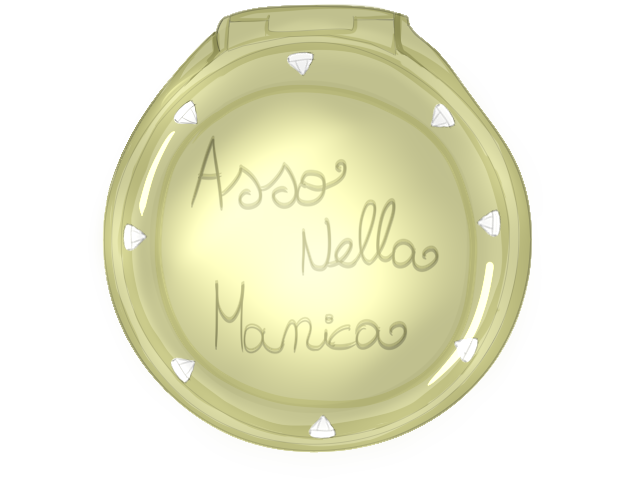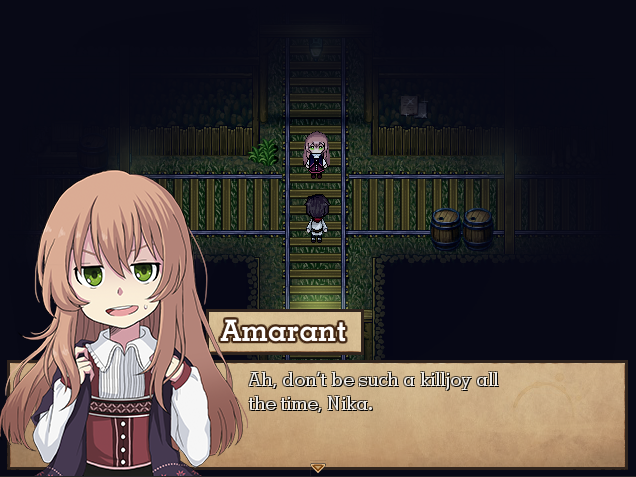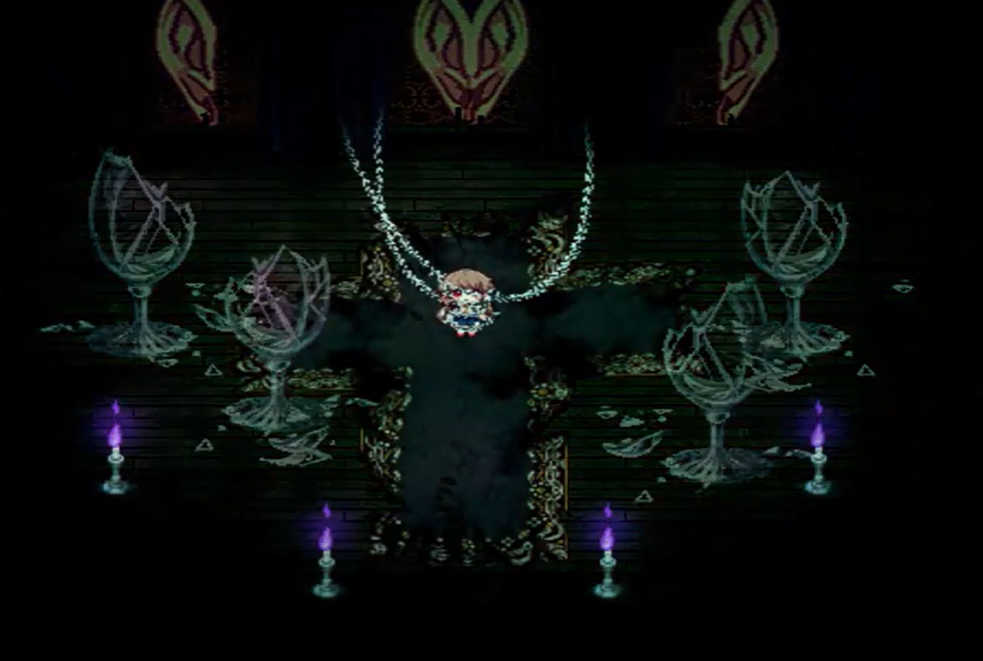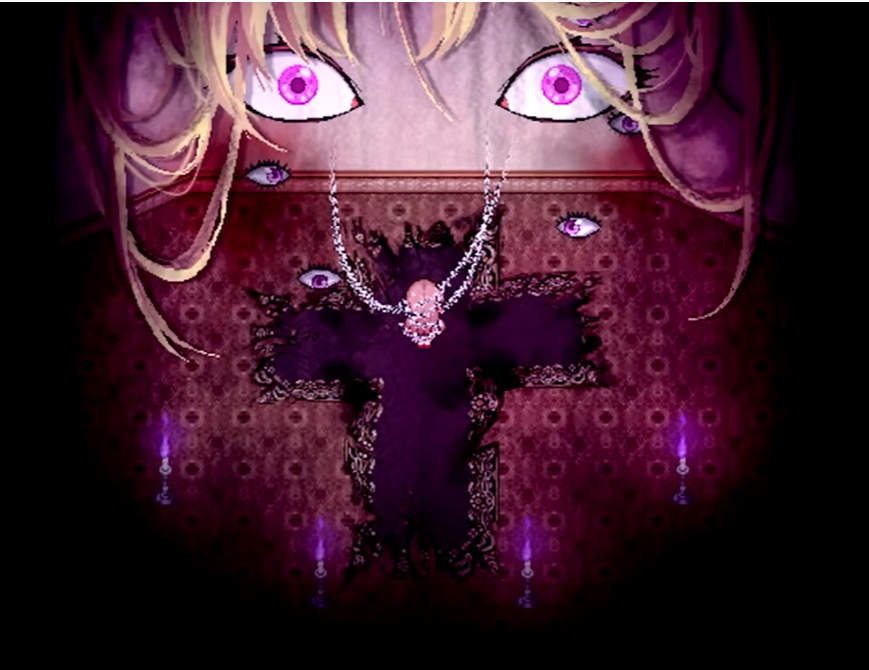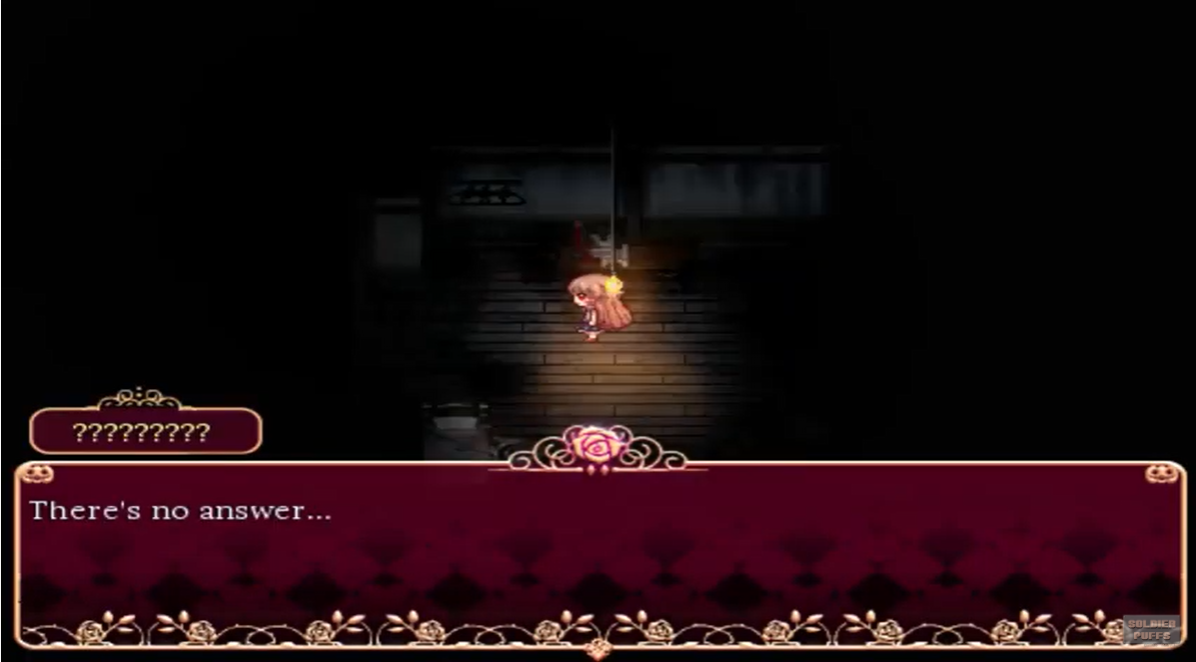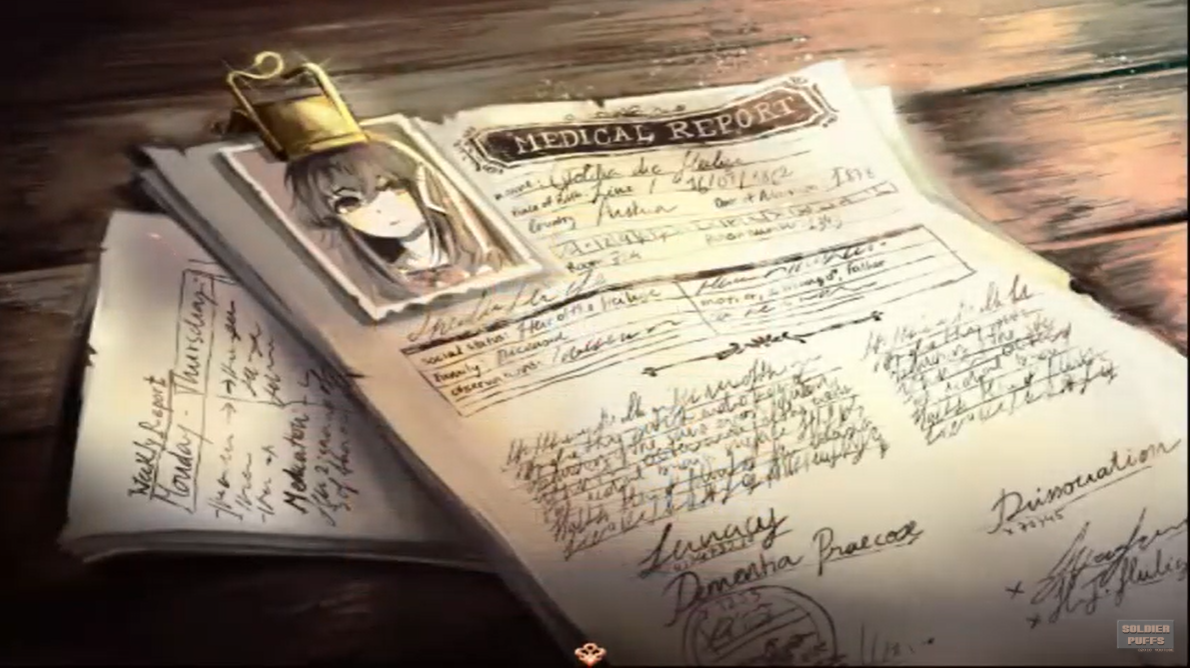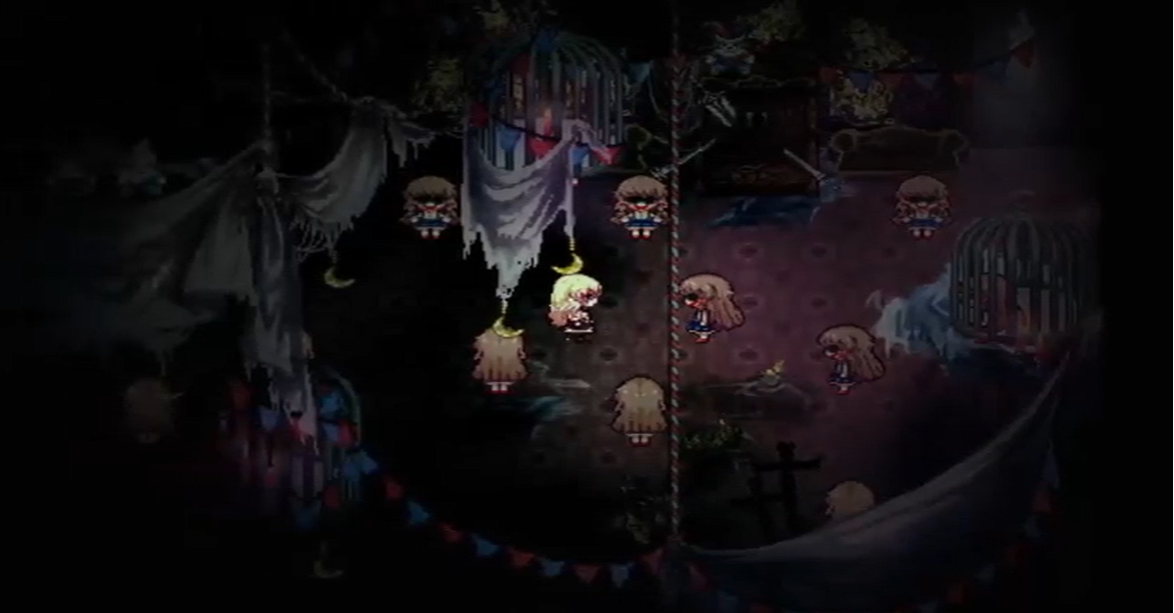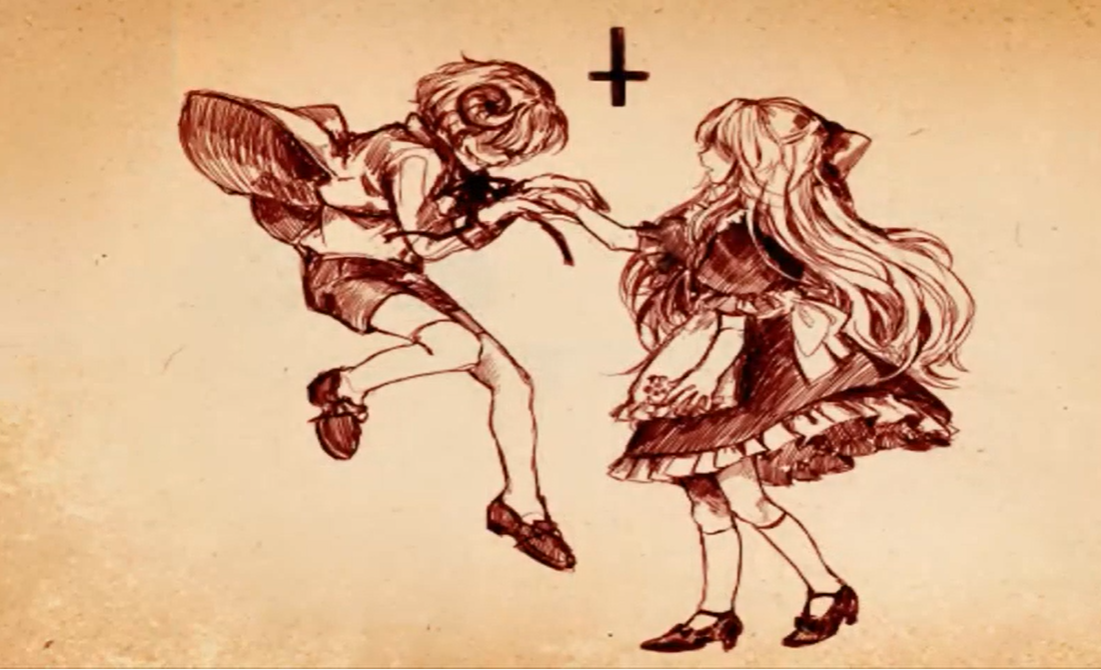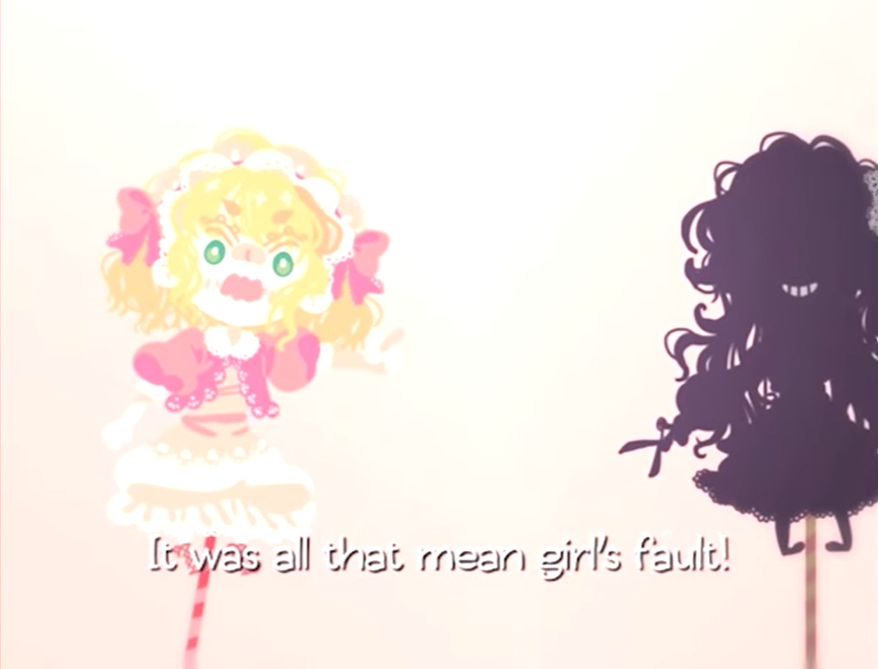Welcome back! After three articles dedicated to Cloé’s Requiem we will return to talk about a title that you actually care about!
We left the theater …
Or rather, we left the more classic theatrical masks that we demonstrated and removed during the analysis of the title of Buriki Clock …
But today we return to using the word “spectacle” thanks to the Astralshift Pro team.
In previous articles we have almost always talked about a solitary developer or a duo … But today we will expand our field of action to an entire team. About 8 people worked on Pocket Mirror.
But why do we go back to using the term “spectacle” with them, as we did with Mad Father and Cloé’s Requiem, albeit in two different contexts?

Well, guys, to answer that question we have to look at each other in the eyes.
Why did you like Pocket Mirror?
Look at the protagonist’s potrait, the frame, the map, the lights…
My God, they’re almost sickly.
Already from this simplistic analysis of a screenshot we can guess that we have arrived at the title that in the current Horror RPG represents an era that goes on until today. It is cursed by many and at the same time acclaimed by as many, unconsciously or not.
It is the era of the purely visual spectacle, of the so-called “graphics”, which have now become the main element (together with metaphors, let’s not forget those!) to evaluate a video game as “art” or as rotten trash to throw at the dogs! In this article we will start talking about this, guys!
But let’s skip these introductions now.
Let’s face it, all this texts introduces everything we will deal with in an all too generic way …
In the end they only serve to attract you, to force you for one reason or another (who knows, someone even to see how far our probable pretentiousness reaches) to sit for hours to read this whole article, and then earn only our analysis in your head, and thoughts that can be right or wrong …
I don’t know about you, but in all of this I find some similarities with …
Pocket Mirror.
PRODUCT HISTORY
But now, let’s start the dances!
Given my fiddling with the Wayback Machine, we can say that development started around 2013. The first signs of life on the internet of the Astralshift team are on Tumblr, where they were already starting to make weekly updates.

… And some sneak peeks of what exactly the game would have been about.
(… The writing continues, click on the image for the link)
So the team behind Pocket Mirror, compared to other developers we’ve covered here in the Archives, didn’t start their business with the game’s release, making players make their story. Astralshift has started to hype since the game was at 10% development.
While it doesn’t seem like it, as the “pre-game-hype phenomenon ” is new to the generalist Horror RPG panorama, this makes Pocket Mirror’s Product History very important to our study of the current in this column. This game in our opinion gave a more professional boost to the team of developers who would come after them. But we will deepen how much and why Pocket Mirror was important in the current in the Asso Nella Manica, which today will be a little different, as well as in the Author-Work Relationship.
Back to 2013 and the white and blue ask blog.
They posted information about the game and answered questions from fans, who were already waiting for more content …
But it is possible to make some theories about exactly how they have grown so much from Tumblr since the first asks they had.

(Yes, for completeness I have reported the entire exchange)
“Anonymous. We are asking for VOLUNTEERS.”
It may be a theory that the dissemination of posts or anything that had to do with the recruitment of volunteers has made the team famous, given that for some platforms they had already proven to have very capable artists on their first core team in an early development state; even if it is not excluded that after an initial rise on Tumblr they asked for the help of volunteers only there, the hypotheses are only these two.
So, in general, it is possible to imagine that they went on like this for a while, with highs…

And some lows…

Until 2014.


January 22, 2014, the Pocket Mirror demo is released.
For the aforementioned graphic quality, for the premises that for many seemed interesting and for the fact that we could already get started thanks to a demo, Pocket Mirror already earned mostly positive comments from that year.

As well as various gameplay videos, and in general all the progress that we have already observed, studied and re-studied through many other titles that have become popular …

…
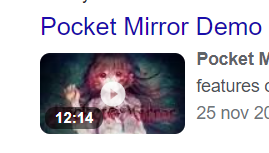
And all this already from its demo.
And here we return to the speech I mentioned earlier, on the previous hype and popularity of a game even before it comes out, totally abandoning the canons of the “independent developer who publishes a video game out of nowhere”.
So Pocket Mirror, due to these more elaborate distribution operations, becomes very famous… But the authors don’t vanish into thin air.
Oh my God, I’m crying!
Indeed guys! The step taken by Astralshift is bigger than we think! Given the great opportunity to create content thanks to the good number of people who worked on the project, the team has always kept active on social networks between content created by themselves and by fans, who have always kept close with constant posts and even streams!

They therefore behaved like a big production company.
Their work has paid off , with fans considering the game a “masterpiece”, the “best Horror RPG of our time” and other similar absolutistic phrases that, as we will see in the Work Defects, can be safely denied.


This huge success led them to create a prequel to Pocket Mirror:
Little Goody Two Shoes, still in a state of development, but who already wants to show us how Astralshift has brought out even more the big guns , and will demonstrate concepts that I will present in the conclusion of this Product Story .


So guys, as Little Goody Two Shoes is still in development, so it can’t be fully judged, this very short summary of a success built in about 4-5 years ends here.
I can tell you that the Development History of this game I consider to be a bit borderline . Astralshift was not as anonymous as the various Japanese developers we have covered here, but Pocket Mirror was not even a mediatic case as big as the title we will cover for the end of Back To The Future, Angels Of Death.
So … Think of this game as a big bridge between two different game development perspectives in the current Horror RPG.
In our timeline we chose Pocket Mirror as a post after Cloé’s Requiem and before Angels Of Death due to the fact that in the story that includes the most significant titles of the current HOR-RPG (how long had I not used this abbreviation?) This was the title that brought this current closer to something less niche, something closer to the indie game landscape in general, and further away from the imagination that was created around these horror titles made with RPG Maker (mainly) with all their features.
But I won’t be the one to analyze this great step forward.
Pao, to you!
Okay, I’m here.
So we have said that this paragraph will be quite different from the one we have discussed so far; why?
Just know that right now I’m sadly listening to Keith Mansfield – Funky Fanfare to strengthen myself while I regret the crap that was the “Trump Card” paragraph I wrote for Ib. At the time, I made a speech on context that really went too far, taking away a lot of space from the internal analysis of the title… I think I overlooked it a bit.
In any case, in short, I couldn’t help but get nostalgic because you know that the “Trump Card” paragraph for Pocket Mirror will be treated in the same way. Really, it was an important step guys.
Now, it being understood that this game makes me nervous in various ways and for this there are various reasons why I do not support the project, but I can not fail to recognize that they have thrown new expectations in the public .
I will spit it right away because it is useless for everyone to go around this: Pocket Mirror’s Trump Card, the feature that made it unique in the eyes of the audience, was the spectacularity of the graphics.
Here, and now that I have finally produced a sentence that can be as clear as possible from the first reading, we can squeeze ourselves and chat together a bit about the historical context.
Generally we must consider how nowadays the types of titles that depopulate are those, for example, that use the most sought-after tilesets (more or less, this is a bit of a thorny topic in reality) but above all in potraits (busts characters) display anime graphics that are somehow recognizable as normal marketable products.
Let’s just take a look together and try to give a before and after.
2011 – 2013
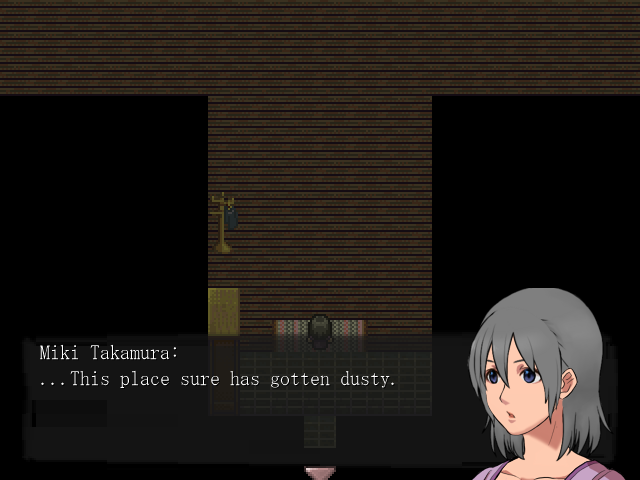


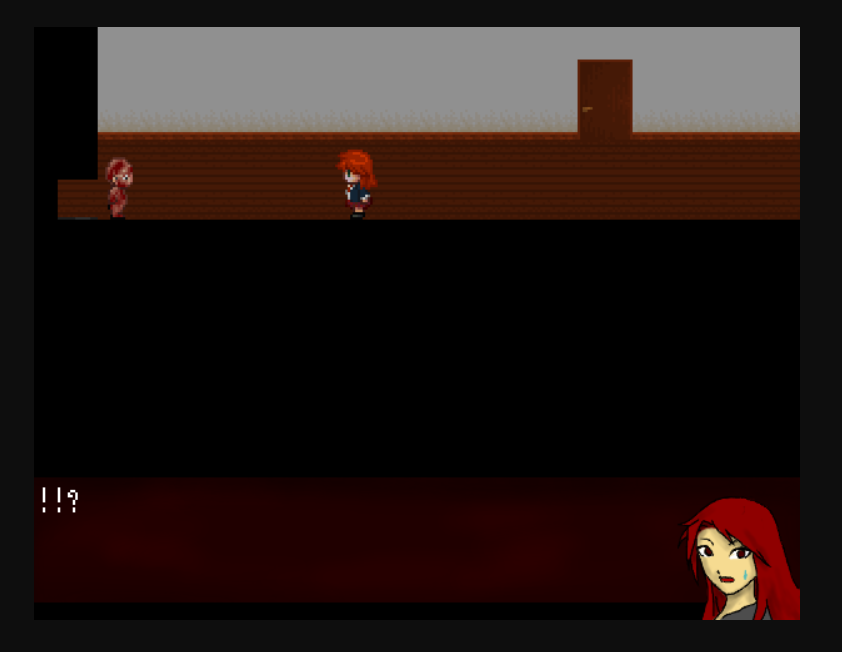
(From top to bottom: Paranoiac – Original version, Hello Hell … O ?, Seven Mysteries, Sukuttee)
2012/2014
(Original version / Remake we all know)
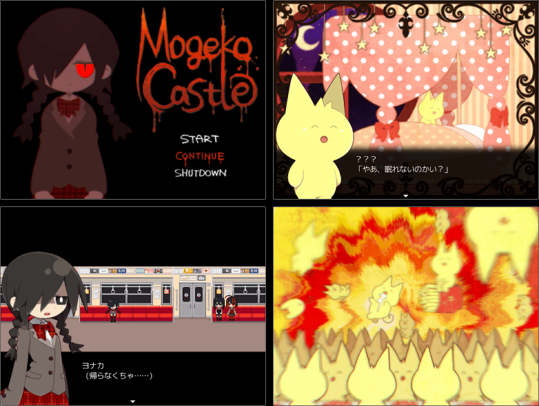
If you remember, we talked about how the first generation was characterized by a certain variability in the titles, with for example always different drawing styles …
While the older games, or those that became classic in the same period, were concerned with keeping up with progress and started “commercializing” more, as we will see shortly.
2014-2020 (Present)
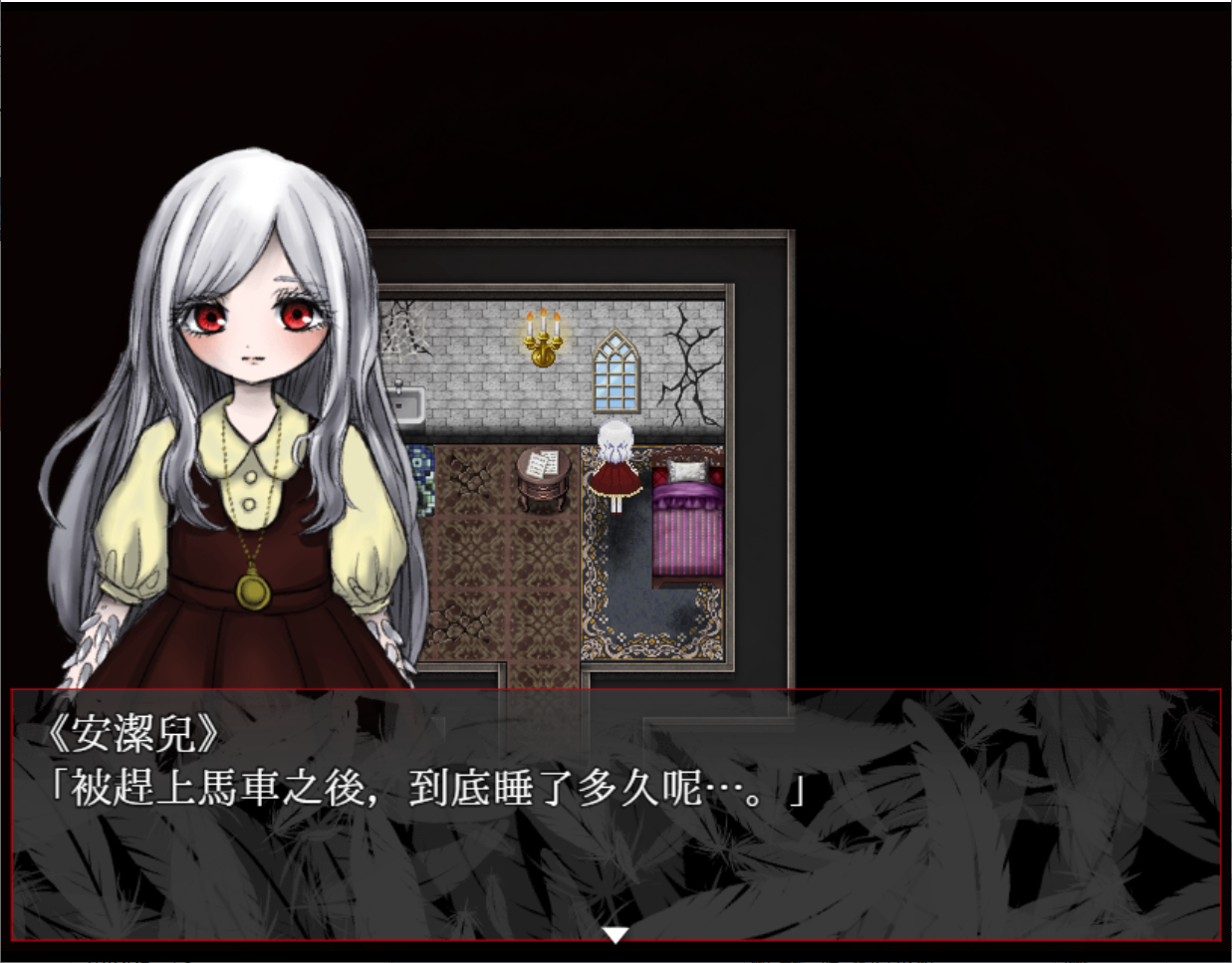
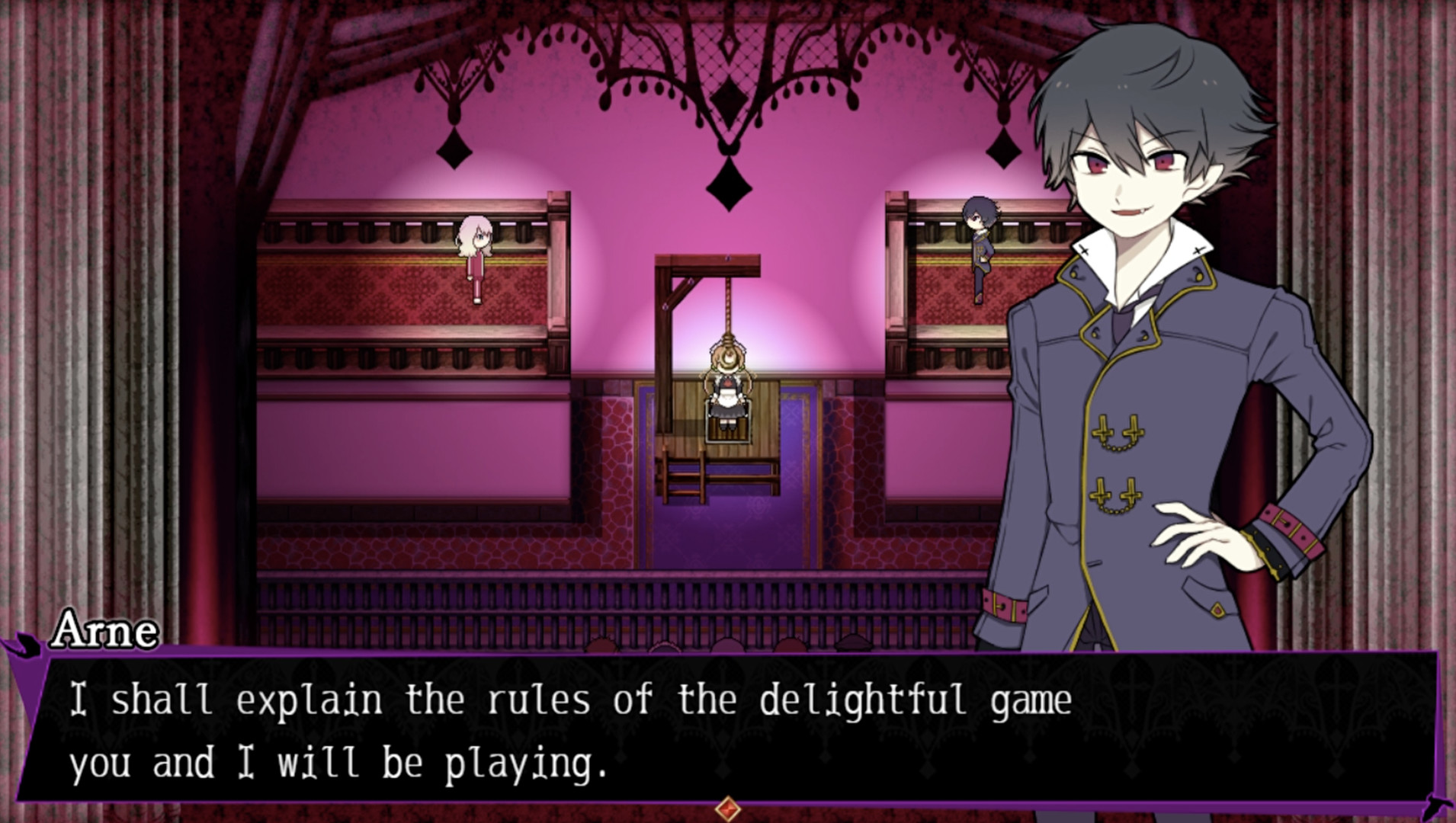
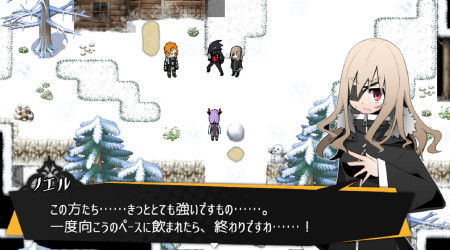
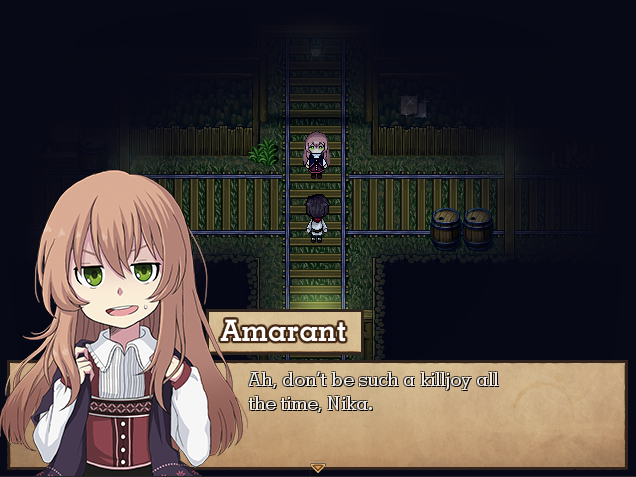
(Angelic Syndrome, The Case Book Of Arne, Noel And The Mortal Fate, Claroscuro. We are currently not sure if Arne is an actual Horror RPG of the current, but is considered such, as is Noel And The Mortal Fate.)
Here, we had anticipated this talk with Mad Father. Mad Father we can say that he was the pioneer in this sense, Pocket Mirror was a worthy successor.

We can say that this was another important step that started to define the tool as “a good way to tell your own stories” ; and above all this happened through the current of Horror RPGs.
We will see the consequences of this in the future, the last article will be on the anime game par excellence in this panorama, Angels of Death , a title also finished under the wings of Kadokawa who made the most of it. the idea to instill hope, to young developers, “to be able to produce low-cost anime with the Enterbrain tool!”.
For the moment we certainly cannot blame Pocket Mirror, which wanted to push its resources to the maximum trying, according to the authors themselves, to produce “pieces of art” . So let’s try to re-cap the situation: not only do we have to thank Pocket Mirror for having shown, once again and with the evolution of graphics, to be able to produce titles of great commercial value, but we also have to thank for the aesthetic quality of these renovations.
Now I speak to those who use the RPG Maker tool. Come on guys, let’s be honest, how many of us envied them seeing how they raised expectations for indie video game graphics?
There are some imperfections that make it a rather amateur title in reality and they are the reasons why it has aged really badly , we will see it in the defects of the work, but for the nature complete of the project, for the professional identikit that its authors have built and for the unusual creative outlet of the artists who worked on it have contributed to ennoble the nature of amateur videogame titles, in 2D at least (no, I don’t know so good the landscape of independent 3D titles).
The spectacularization has invaded the main narrative structure a little too much , but the general impressions on the qualitative revolution of the work certainly did their job. To reward the raising of the bar that has been achieved, I will limit myself to to mention the memorable moments that characterized Lisette’s arc, which represents for us the best summary of what we think has stood out in this game and of which we certainly imagine the authors are very satisfied.

Here, I mentioned this screen in the previous article. Even if it doesn’t mean shit in its meaning, it is certainly commendable to include an animation of this type within a Horror RPG; they refer me to the experiments that Disney conducted with Fantasia to try to revolutionize the common conception that we had towards animation.
To anticipate the times: the giant Lisette in its context makes little sense and then we’ll see why; in Fantasia by Walt Disney let us remember that there was musical accompaniment as the basic idea; that was the real red thread of the film, animation was mainly used to enhance classical music.
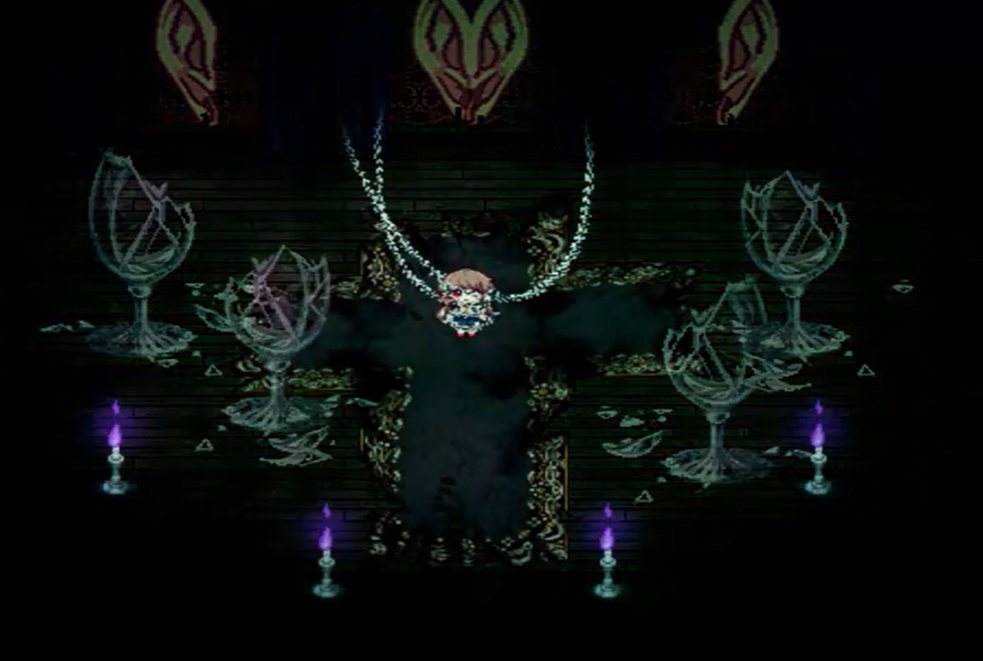

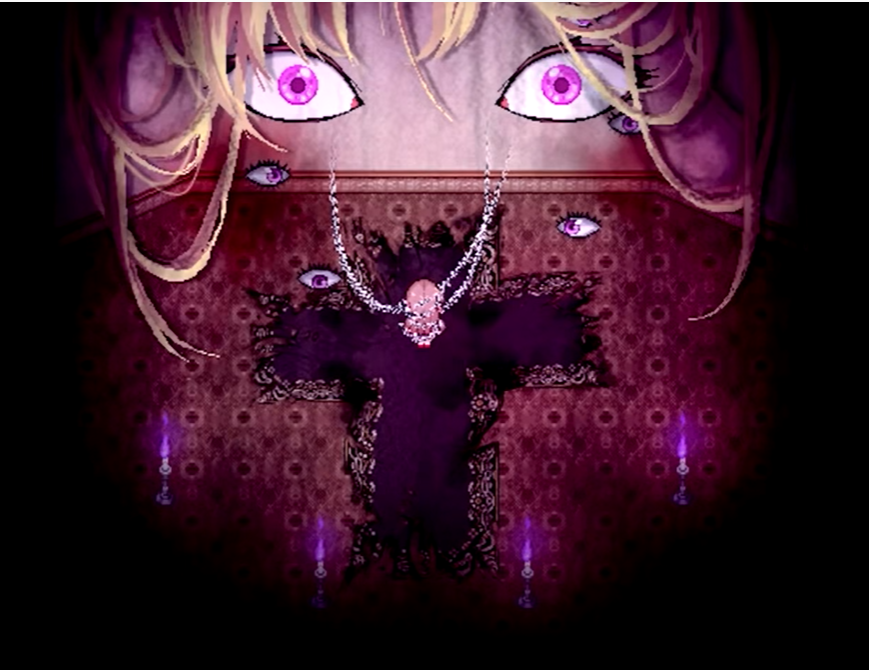
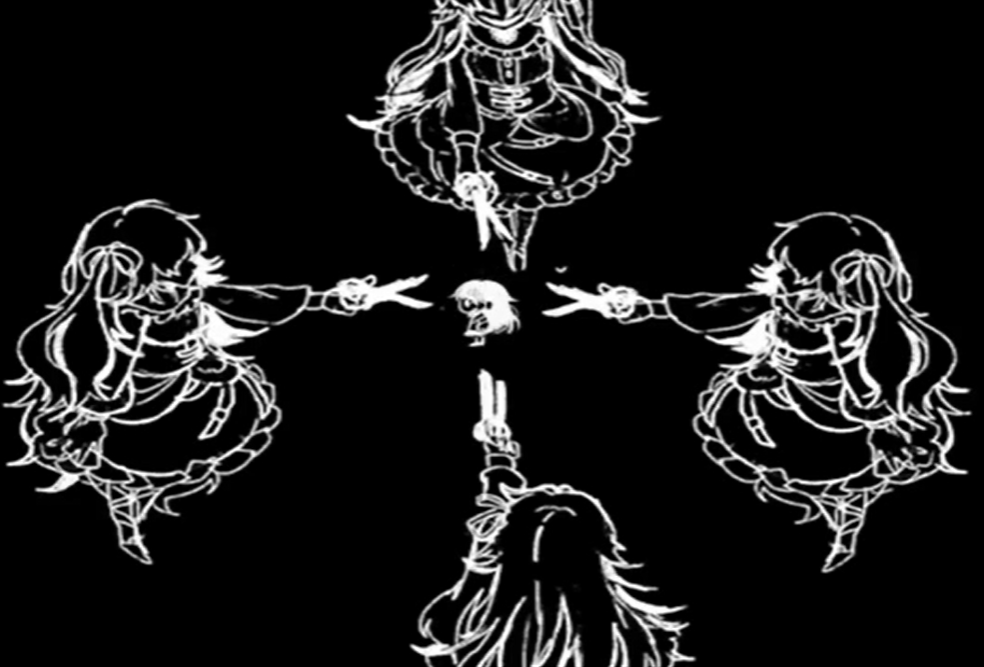
For example in this part as well as others (although it is a transitional part between the Harpae and Lisette arcs) there are generally examples of a beautiful animation given only by the use of the images on RPG Maker.
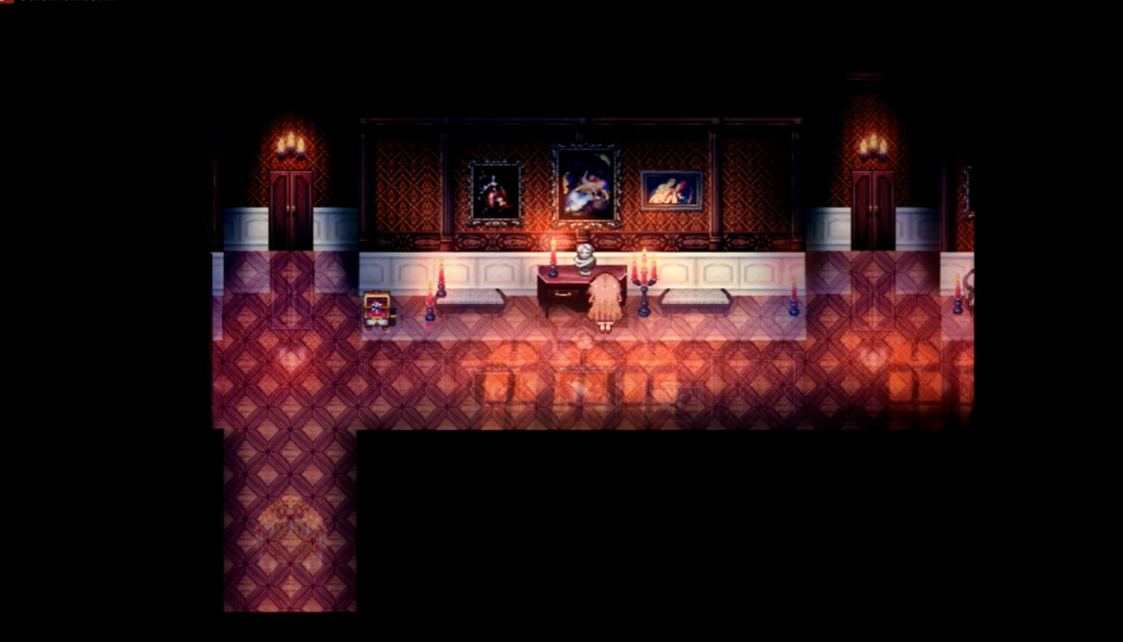
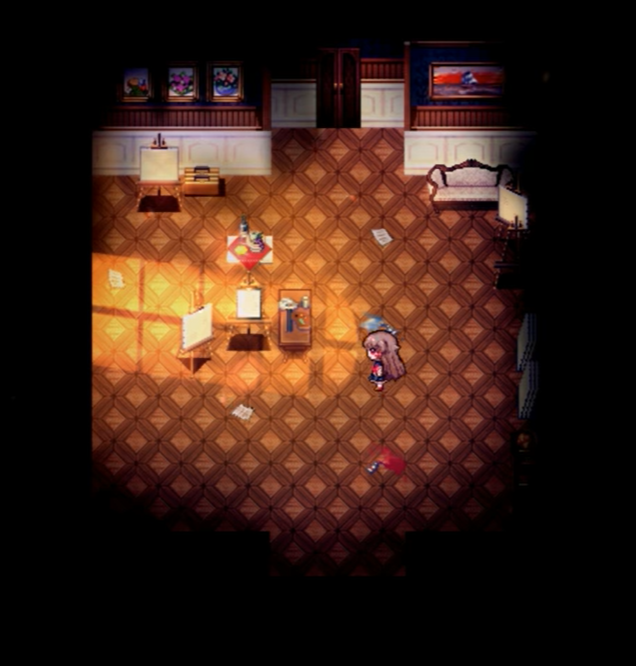
And speaking of mentions regarding the arch of Harpae, this area deserves one.
I wanted to mention this explorable area because I personally consider it one of the most beautiful in the game’s most beautiful narrative arc on a visual level; and then here is one of my favorite pieces from the soundtrack.
Another special mention goes to this moment.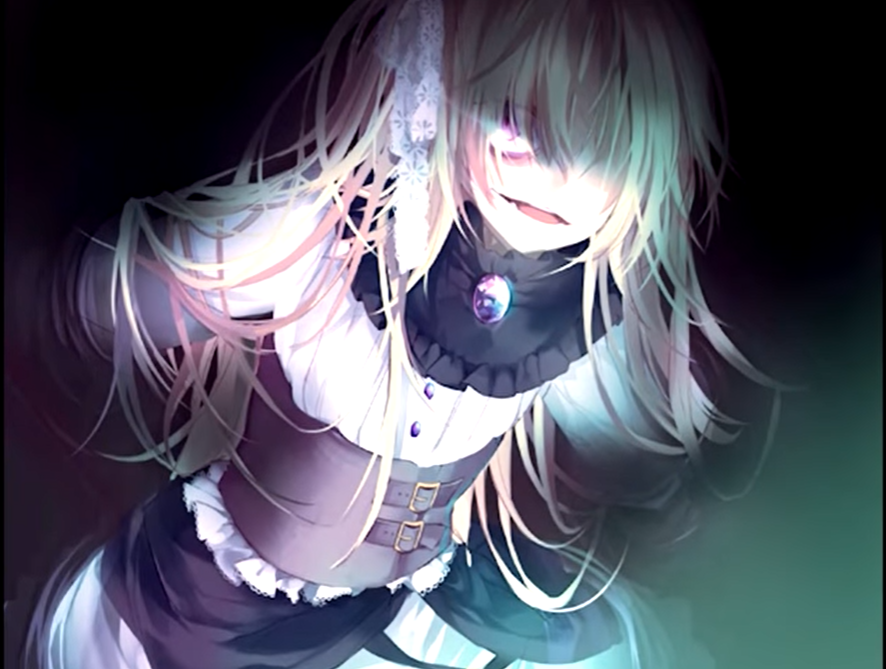
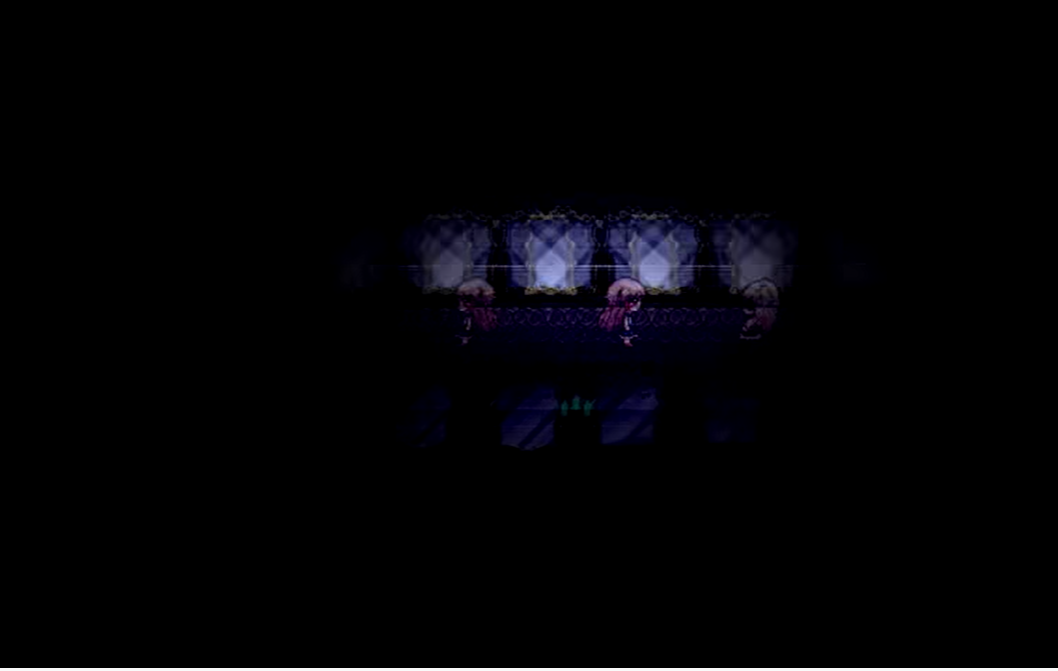
Here, yes, the chase scene. I mention it because it was considered by some to be a real plague to deal with. In other contexts you might get angry at the apparent inability to solve it, because it was really impossible to understand at first glance how to orient yourself; but in this case it was meant to be a mere excuse to do something different and stimulate the player to try a different kind of experience than normal, you have to give him credit.
This paragraph concludes with two final remarks.
First of all I will mention here for the first time the concept of Market Driver , I will inaugurate it with this article for two reasons.
The first reason is that it is a term that I learned this year (quite simply, a cultural upgrade); the second reason is that in this generation it will be more and more frequent to find paid titles, so we can in fact begin to define a market in the most theoretical sense of the term: exchange of services or products in exchange of money .
In reality we could reflect on this and retrace the other contexts in which we have treated the Author-Work Relationship in terms of merchandising and actually understand the years or periods in which the practice has spread. even for relatively older titles, to try to contextualize it.
Here, let’s start by reminding you that in 2014 the Pocket Mirror demo came out and in 2016 the official release took place. Let’s take a look at what happened during this time.
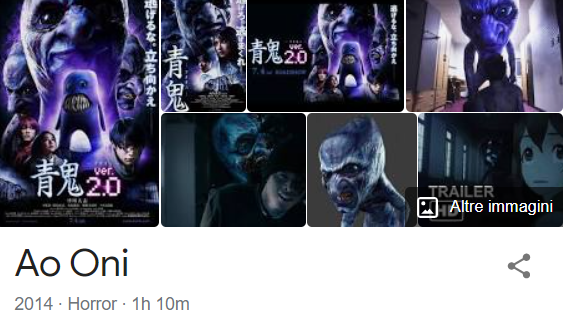
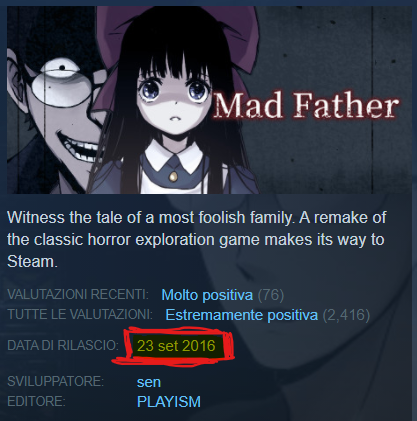
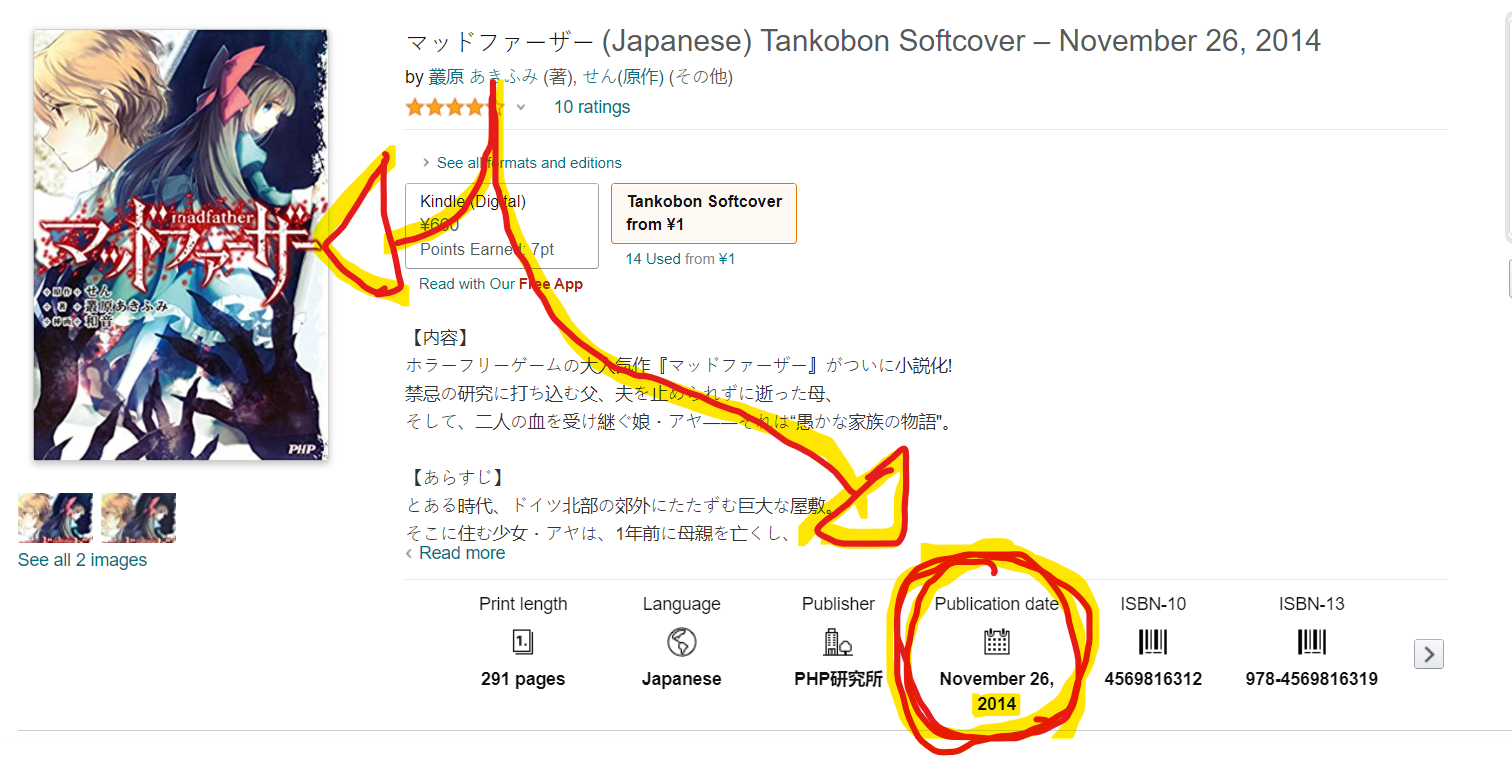
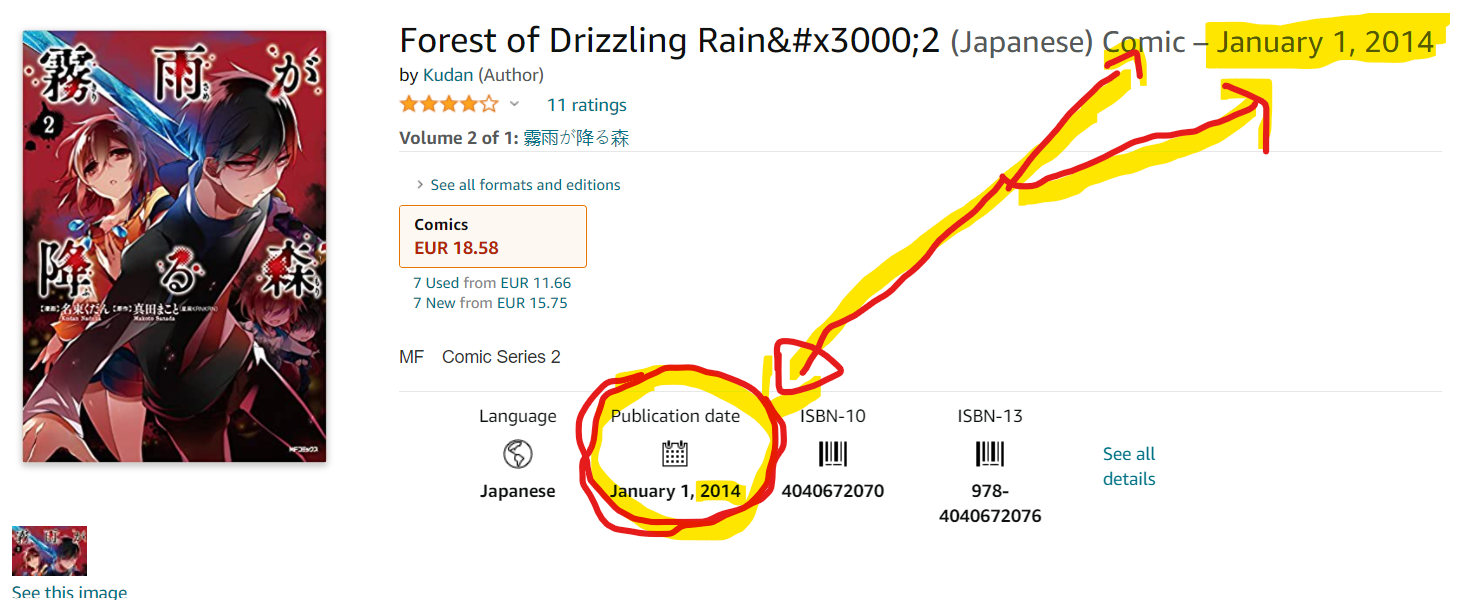
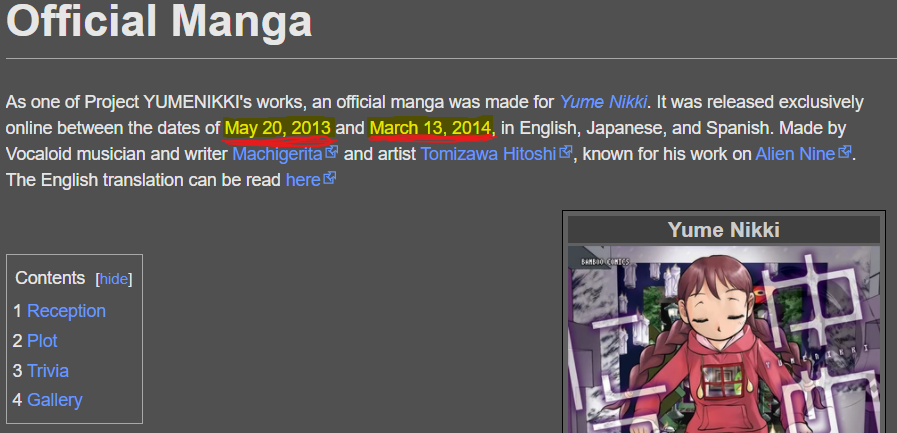
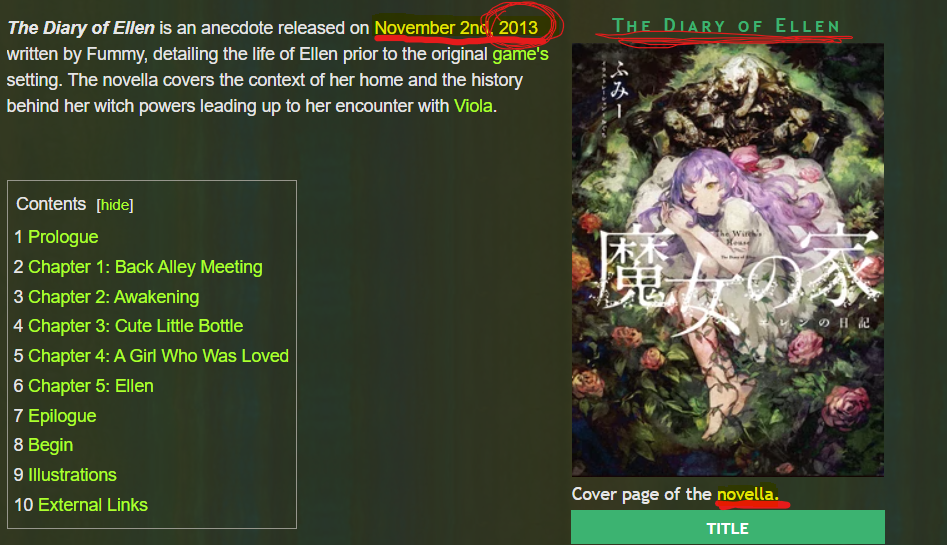
I mean … Nowadays you can see this one on sale.

Really Fummy? What the fuck- I mean, how the heck did you thought about this?
All this to make you understand that, waiting for mutations that can extend and professionalize this world even more, we have come to speak of a current that, born from random authors distributed on platforms for free, has now come to have referents on which you can do some merchandising above , which for the moment in the Archives we had limited ourselves to making lists which now, if you think about it, acquire a meaning </ strong >.
Before moving on to the second consideration, you have probably guessed it yourself, but I’ll explain what we mean when we introduce a term like “Market driver”: this refers to the new indicators that characterize a market and Pocket Mirror has been an active agent in this sense because, as we have said, it has changed the audience’s approach to the current . Before there were random, anonymous authors, now there are production teams that come up with clear logos to be recognizable . Before, titles like Ao Oni or Akemi Tan were fine in which it was enough to play and run away from a monster to have fun; now we want the centrality of a character to follow the stories BUT NOT ONLY: the product must be packaged in a certain way and possibly must boast a certain depth , because nowadays there are players who call the Mad Father cutscenes “cheesy”.
We will speak once again of the productive context to make other reflections, because for the moment we will dwell on this second aspect to make our second consideration.
… And this is about depth .
Perhaps some of you may have been perplexed that the “symbolism” that this title claimed to have has not been inserted as a Trump Card: my answer is, first of all, that here there is no kind of symbolism to begin with.
Hey, down with the pitchforks, we had already gotten there a long time ago: we are mainly talking about “a shattered identity”.
Indeed, I’ll tell you more: as much as the authors or fans might come here to talk to me about the meaning of a scene, as much as you could tell me about the meanings of the video-presentations of the characters or say “heey, look! She made the promise to Harpae because she didn’t trust her growing hysteria represented by Lisette! This is a great metaphor for social constriction and the construction of our identity! And Goldia is a little saint because the side of her in “Fleta” as a child was repressed! ” I will never be convinced that there is symbolism in this game because primarily has NEVER been contextualized .
There is no form of coherence between one arc of exploration and another, everything is an end in itself . To try to make you understand I take it a bit like the subplot of Kotori Obake in The Forest of The Drizzling Rain : that the story is about motherhood and the abuse suffered is of no use to the main plot ; but this is not the section to talk about because Pocket Mirror problems we will address later. The reason why I propose this second consideration is because we noticed with Ele a growing demand from consumers of the current to follow “plots” of titles that manifest themselves through symbols and details to be discovered; it seems that on the one hand we are looking for a “beautiful experience so as to spend beautiful hours, without commitment” and on the other hand we are looking for “the great work with multiple facets and meanings that WE must understand so that WE do the our theories and WE use OUR fantasy with a basis given by someone else. ” You can see that Ele got a hand in this part, huh? Geez, so aggressive …
Well, you have seen the word “we”, “our” underlined … No, it is not for some kind of pro-communist tendency, but it is for a discourse that we will discuss in more detail in the article dedicated to the Audience-Work relationship … We will also talk about a title that is gaining momentum these days.
So, in short, Pocket Mirror has satisfied a very recent desire today, that of “thinking about a work”: the authors have always treated it as a metaphorical game and the fans took their word for it, so they tried to pick up what they could, they found a kind of profound meaning… And suddenly the game became a masterpiece. As I said, we will return to this entire speech, but for now we can only say …
Well played, Astralshift. Well played.
PROFESSIONALITY METER
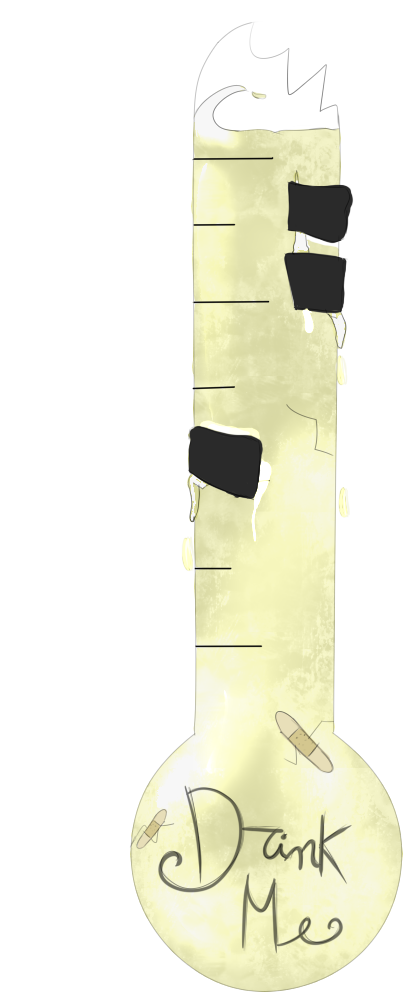
Very high.
Very high because, as you know, when we approach the thermometer of professionalism it refers not only to the individual titles but to the way in which everything that comes before and after of these is treated …
And in this sense it must be recognized: they are professionals who have made themselves . So for this occasion the thermometer is not destroyed. We have put some scotch and bandages on it.
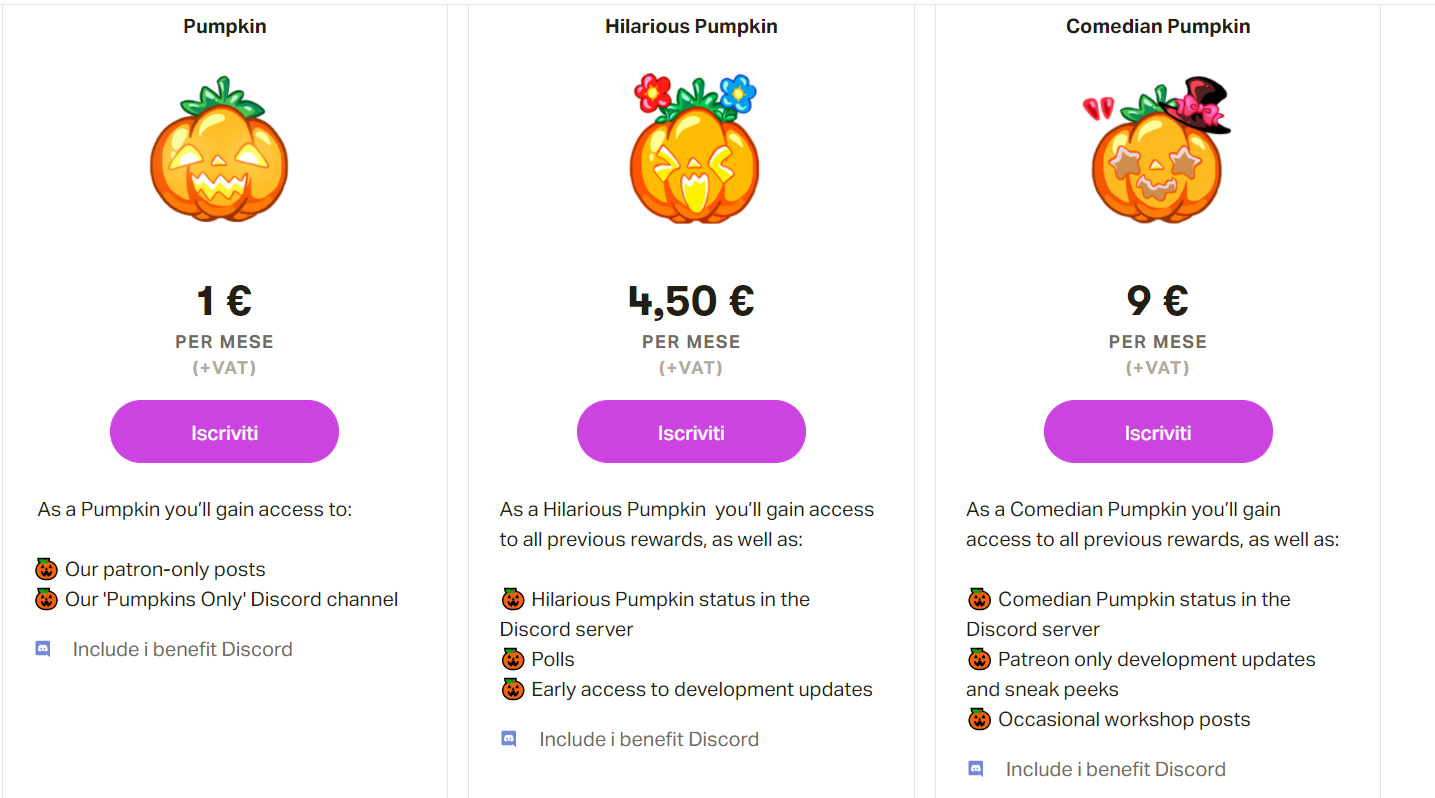
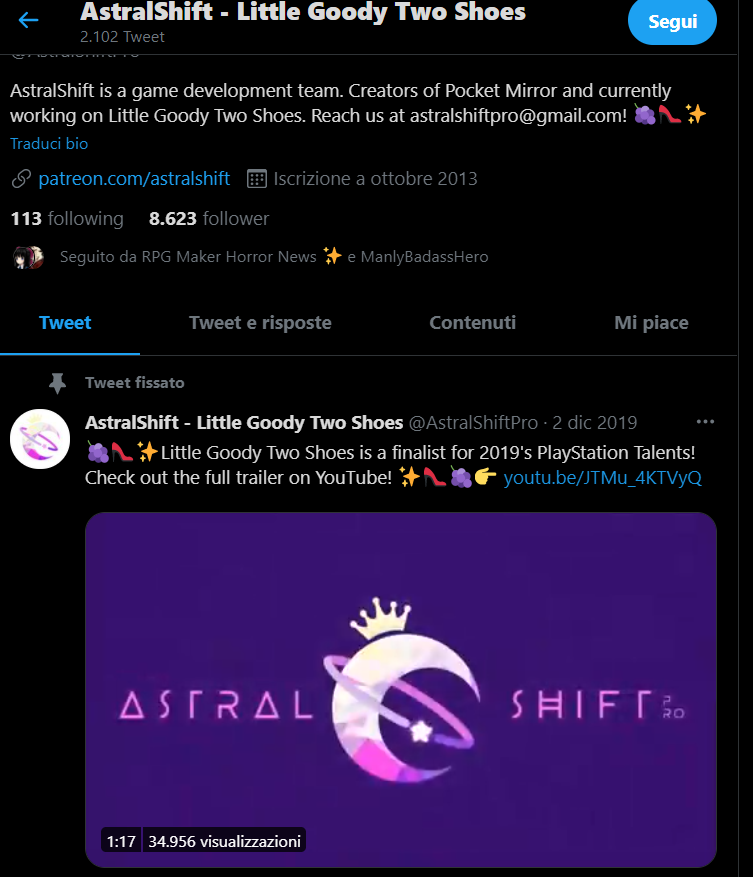
As Ele had observed in the Product History we can realize the truly professional approaches Astralshift has of their creative personality . We just have to look at the way they use social platforms: they know that they have made an innovative product for its times and recognize it , they want to enhance it and they know how to do it well, they know how to sell </ em >.
It is something that we wanted to value because we realize how hard it is to build a public identity. But we will talk more about this in the Author-Work Relationship, because it is a rather hot topic nowadays.
PACKAGING
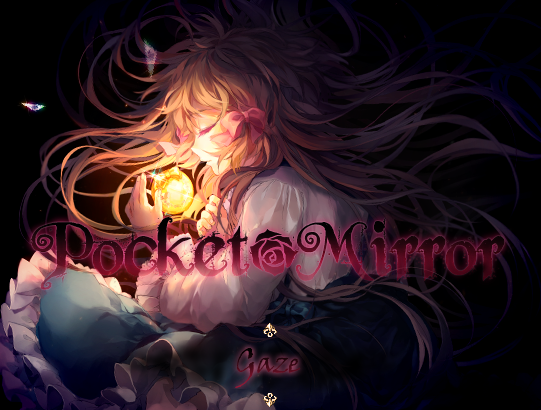
Obviously the packaging is a summary of what we have said so far.
Perfect: already from the menu, spectacular graphics invade your screen, complete with flying glass fragments , Goldia’s eye that opens …
Although in my opinion this menu is not very suitable for a video game simply because in this way the choices become “not very visible” and not very pragmatic in their use. So nothing, in short is really impractical. Yes I know it is a script, but used in this way it is almost infeasible in our opinion. That is, it really is all dominated by the image that is placed in front of you.
As for the main menu and the item menu …


It’s funny that they used scripts here too, to which they only added some graphic enrichments. Look, the script they used is Moghunter’s. Do you see? Midnight Train has it too.
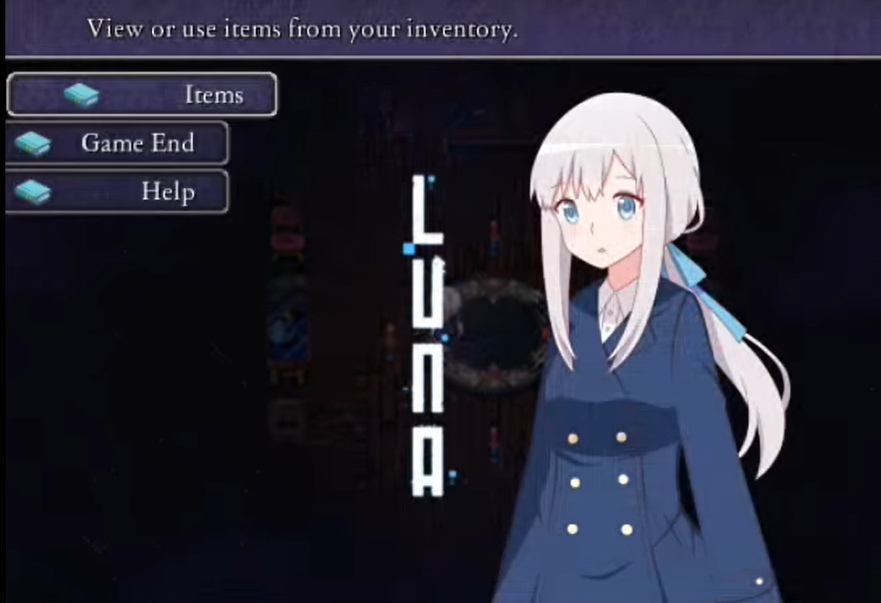
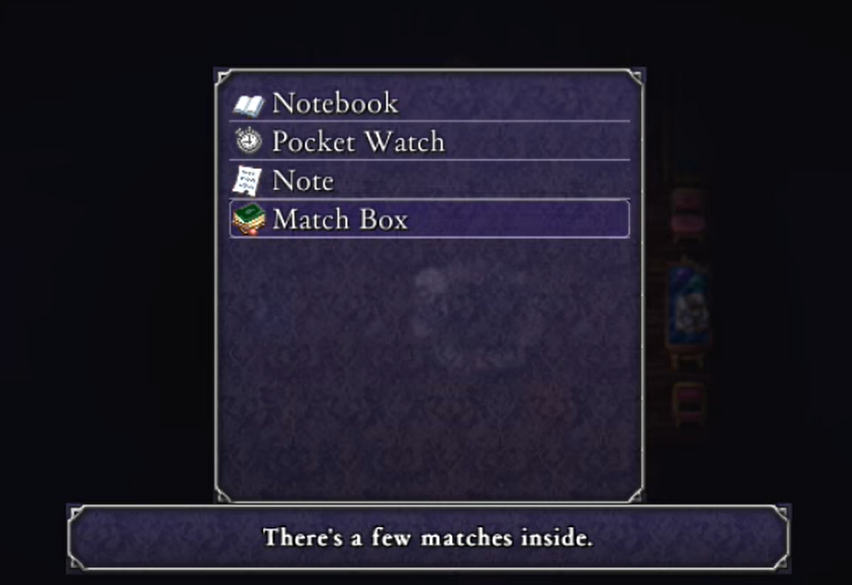
I mean, that’s it really, they enriched it with frames. I recognize they have a nice aesthetic sense but at this point why didn’t they make a menu with variables?
Just asking. Because since this is a title that wants to push its limits, I took it at its word.
AUTHOR-WORK RELATIONSHIP
Here we are; lately I have to say that this paragraph is more and more … “Lit” from some article to this part.
Here we are really doing nothing but emphasize the “linear” approach that Back To The Future has: pick up on a discussion that we had already done with the first titles of the first generations. Do you remember, no, how many paragraphs spent on Ib and Mad Father to talk about the new production contexts in which they were born and the new features that led to the current HOR-RPG?
When we talked about the Author-Work Relationship, they were mostly quite complicated relations, mainly linked to the fact that after the first title, their “name” died . We had talked about the problem of sen and the super nova effect you can have on the Internet, especially of something that is not well stabilized; we also talked about the effect it can have if a developer relies on a more powerful distribution company: here the tenacity with which the brand tries to survive is really valid.
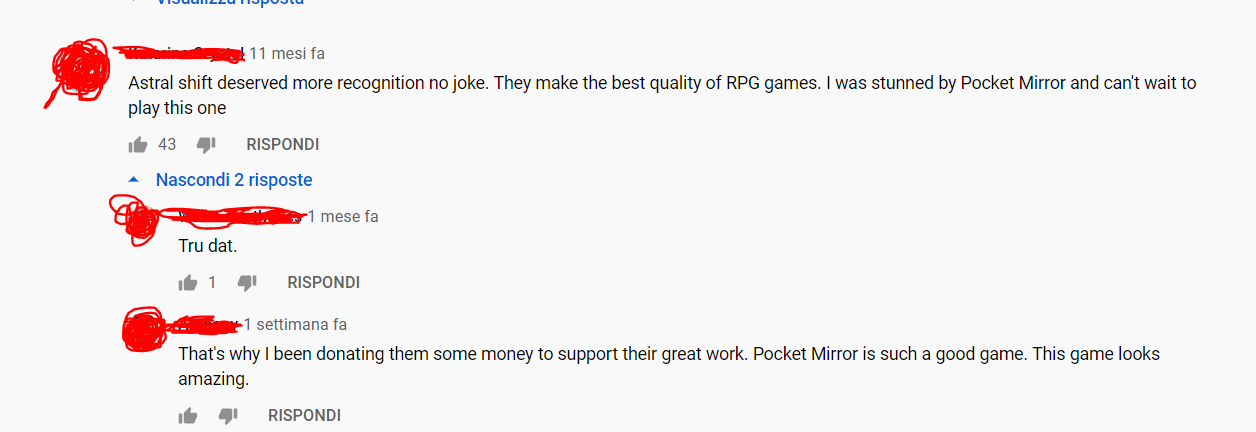
These comments were posted under the title trailer submitted to the contest – AstralShift, by the way: this one is what I would just call a great marketable game </ strong>; come on, there’s nothing wrong with not calling it artistic. Really, it’s not artistic it’s … Just very very professional and I already congratulate you on that.
Eh, what to say, guys: why do you think they would have participated in a competition in the first place?
These are activities that are normally done to be noticed by a publisher , you participate to seek more visibility of course but above all to obtain external support: for distribution and above all to look for a sort of stability (and this is another reason why we thought it important to take an interest in the world of publishers)… And we know very well what this means.
This historical period is different from all the others, it is an age of change where new professions appear that are not always known especially if you face that phase of your life in which you try to understand what it will be your professional identity. In the creative field then, boy if it is complicated.
As we said before, it is very difficult to become aware of your product and understand …
“But me, someone that is distributing this thing in public, what do I want to communicate to others?”.
It is not a predictable procedure, in the new description of “What are Archives” we have declared it: we too, to have the awareness we think we have now… The Archives have played a fundamental role for it. Because they have always forced us to deepen other realities that we are not in. And then generally experiencing the experience first-hand: also understanding how to best monitor the media tools that you have at your disposal and being active on them in order to try to maintain a facade as professional as possible is not an easy thing to do at times.
All this talk can lead us to an interesting reflection on the relationship that AstralShift had with Pocket Mirror, as well as it could lead us to discover together with what intentions they produced the game …
… Like a psychotic escape from amateurism.
The search for volunteers, the high quality graphics, the drawing style manifested in the videos, the constant attempts to produce a title that was exaggerated and not least was accepting the misunderstandings and misunderstandings by stating that this is a symbolic title in order to keep all the elements of immersive spectacle within it .
In short, what I can interpret from these attitudes is that Pocket Mirror doesn’t really really want to tell something, it doesn’t want to tackle some kind of theme within it but it is a simple desperate attempt, to be is clinging tooth and nail to show that you are capable of revolutionizing the independent gaming landscape. A game created to prove something to someone .
The number of people involved also seems a point in favor of my thesis; which, reflecting with you on all that depressing speech we have faced, can only make me look at them with great admiration. They want to show us that it is possible to treat the independent creative landscape of audiovisual and videogame works as a decent job and from which it will be possible to create a profession capable of giving us stability.

Ele in the history of the product had already said what he meant to say:
“This was the title that brought this current closer to something less niche, something closer to the indie game landscape in general, and further away from the imagery that was created around these horror RPG titles. Maker (mostly) with all their characteristics. ”
For this, for our part as developers, we extend a huge thank you , although we will be very, very strict in the section “Defects of the work” and we will have our reasons for being so.
WORK DEFECTS
Okay guys, before passing this part of the article to Ele who will tell you some very very important things, I prefer that for this time we can immediately pluck our hurting tooth out and reveal the main flaw of Pocket Mirror.
Well … The biggest flaw was in the structure .
Ohh, you know what it means when there is a defect in the structure isn’t it? When there is a defect in the structure there are the most serious types of consequences, you never get out of it; it’s like injuring an artery : these range from simple confusion to real complete misunderstandings.
Do you know that sense of emptiness with which you found yourself confronted with the ending?
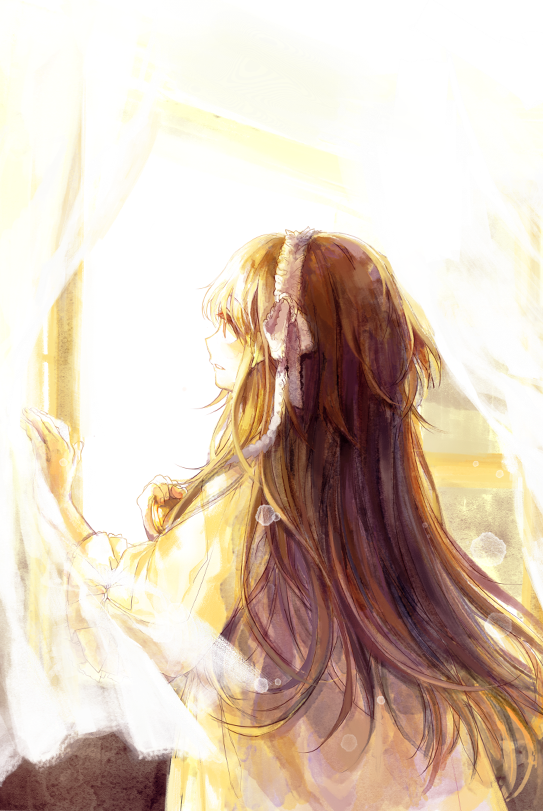
Try to guess the reason: this is nothing more than the outcome of a story, vaguely defined as such, told in fragments filled with phases made of empty explorations .
So what’s the main problem? Where is the misunderstanding?
Well, in this case the misunderstanding lies in expectations. In fact, a good part of the players and spectators who followed Goldia’s path expected a development of the events.
And finally we get to talk about the main problem.
It’s a really curious question, because the way they sponsor their products seems to want to reach the infamous “general public” : marketability, affection for the characters, “lovely artstyle” and so on; many premises that have not been respected in practice.

Here, I mentioned the problem already from here. Now we will dissect it together.
Let’s start with our premises.
So, as I had already told you recently, always in the second part of the Cloé’s Requiem article, a narrative structure, or in general the structure of a product has to do with our use , therefore with the emotions that we make available in the consumption of that title . It is the skeleton that supports the logic of our tears or our laughter, it is the heart that pumps the blood and brings the work to life to then reach our heart and is as responsible as good direction. The arteries are the direct one; that carry emotions towards us. Emotions are that blood.
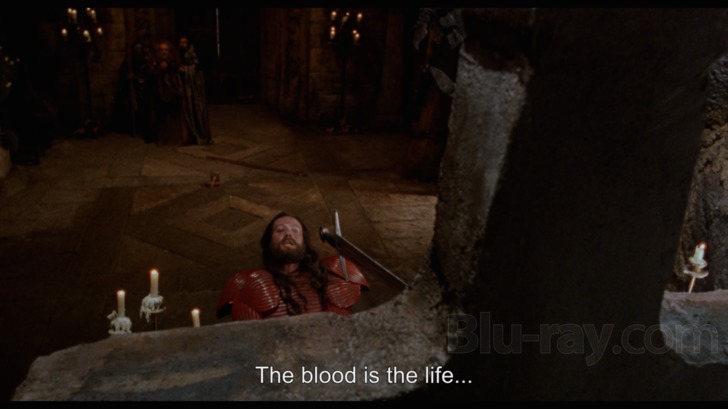
Okay, forgive me this little quote and no, honestly I don’t like Coppola’s movie adaptation that much.
Then…
As we said before, we said that Pocket Mirror’s main problem, the reason for the “big lie”, is that the game betrayed certain expectations on the part of the audience … In fact, the authors tried to justify themselves in this way.

Okay, okay EvilHairBrush, let’s review together what’s going on in this game . Okay?
Therefore. Here we are, we are players in the third run who have reviewed this title after some time to be able to write an article.
To begin with we have certainly ascertained that we are traveling in Goldia’s head, right? We await confirmation from the game …
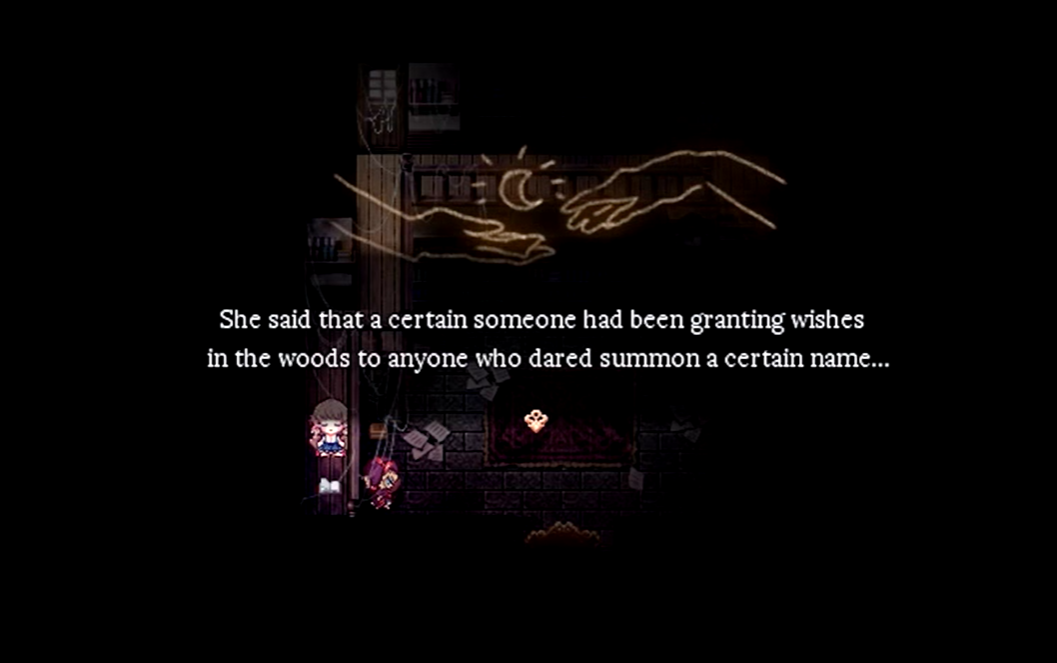
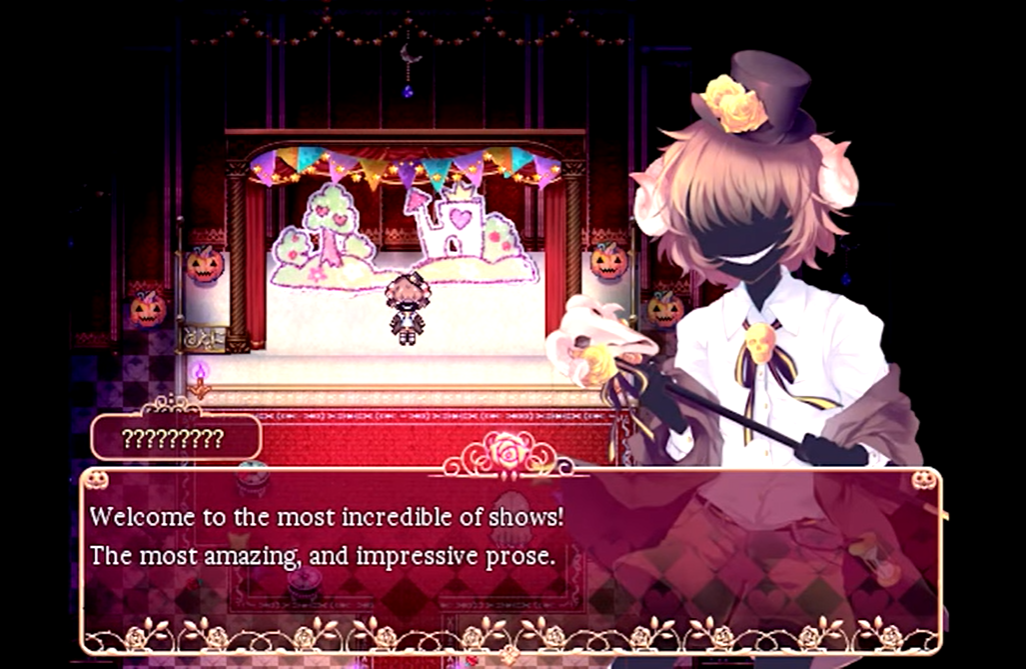
Ahh, yes, of course, the demon who should have stolen her identity-

Yes, yes, poor martyr Lisette who gets mad at her …
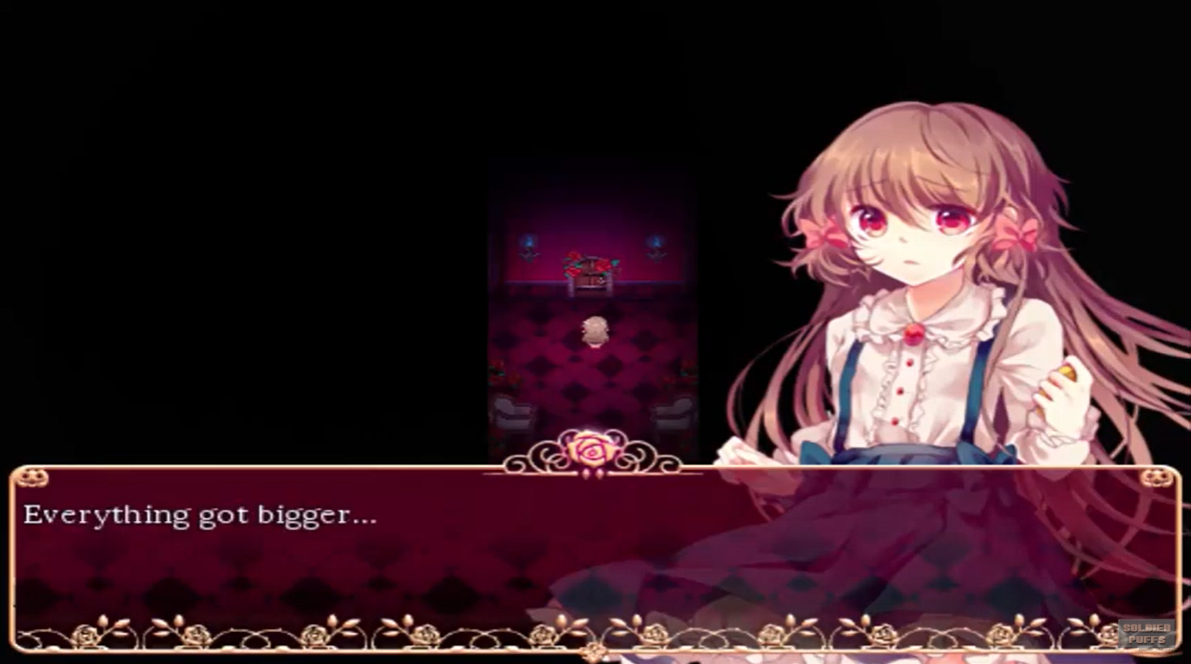
(This and other screenshots were taken from Soldier-Puffs “Walkthrough | No Commentary” videos on Pocket Mirror)
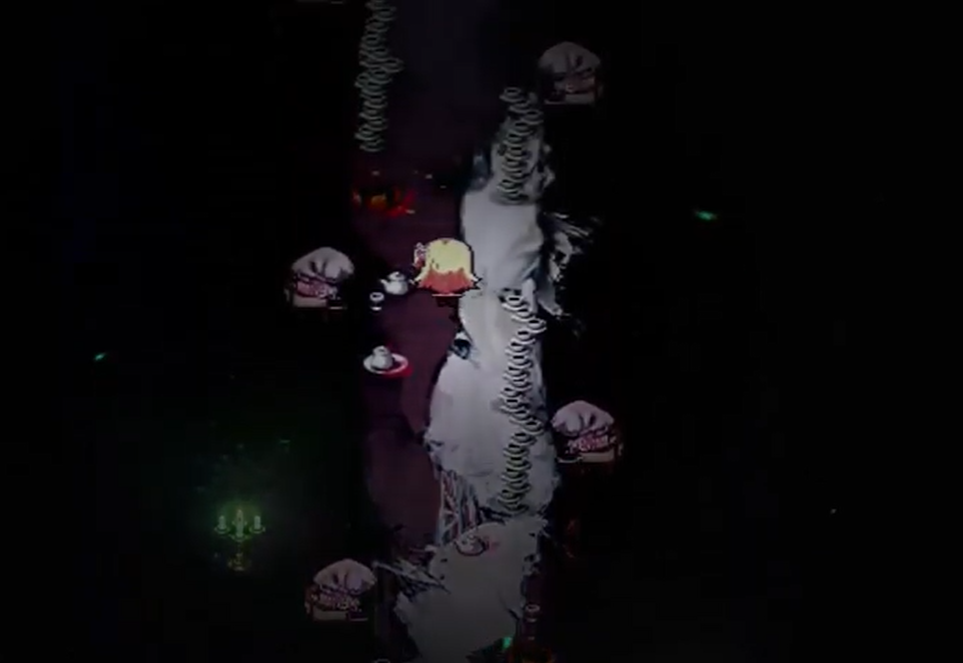
Yes, the quotes to Alice in Wonderland but dear God, but you want to answer the question or not?
Are we or are we not in Goldia’s head?
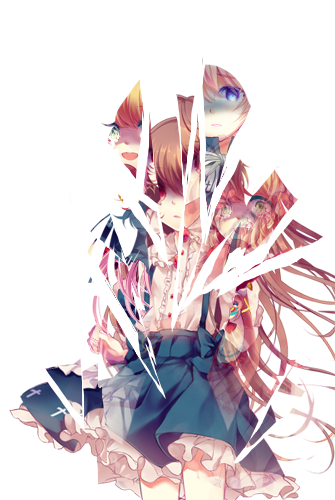
Oh, okay. Thanks a bunch.
Just being sure.
Can you confirm that you talked about her and her pathological illness?

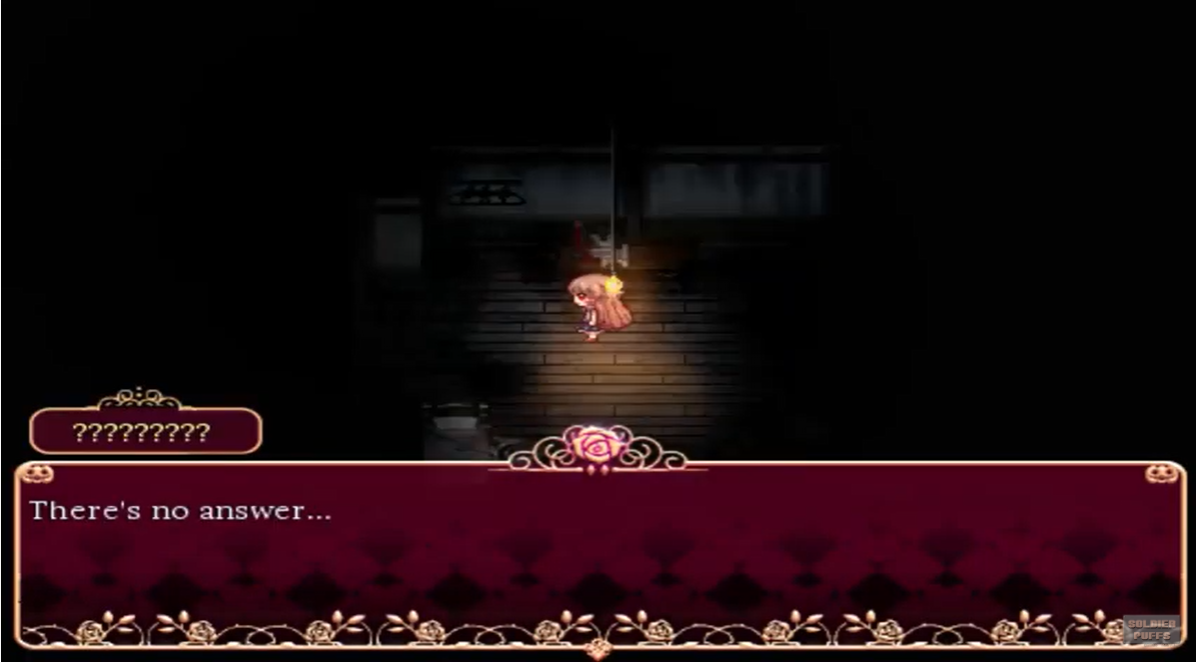
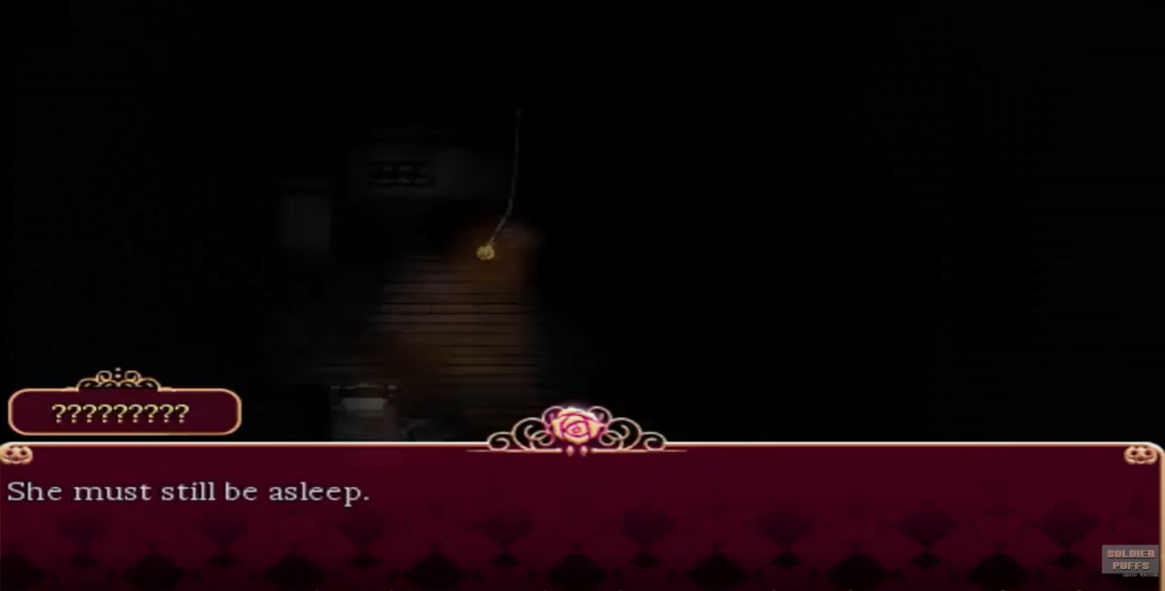
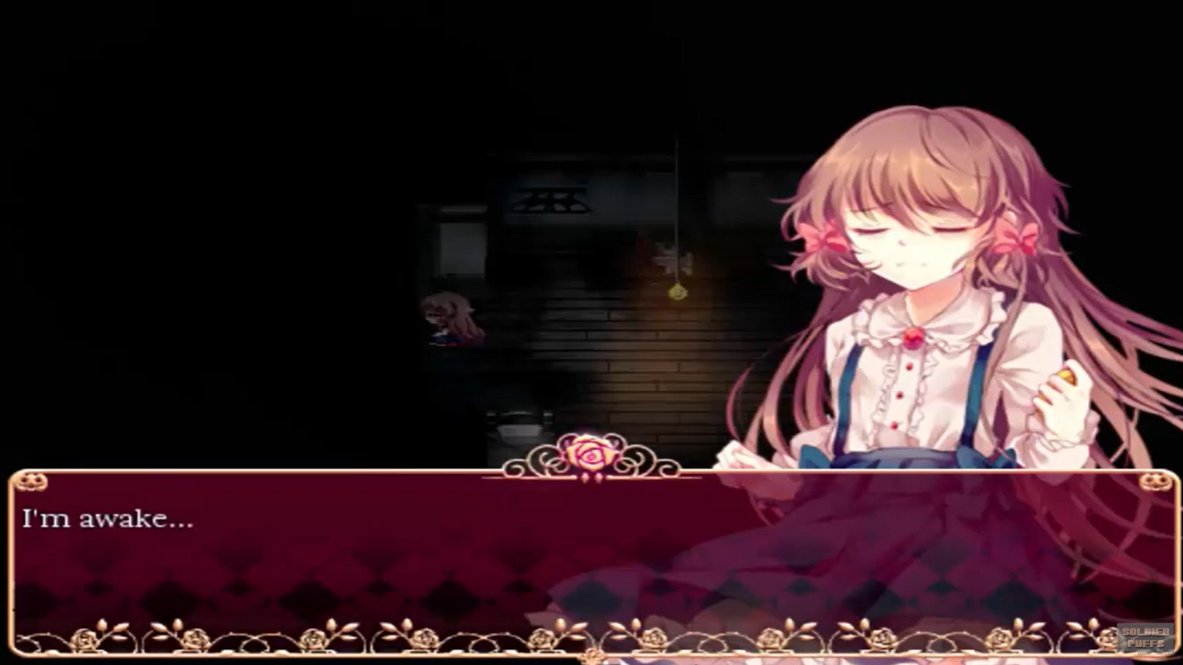
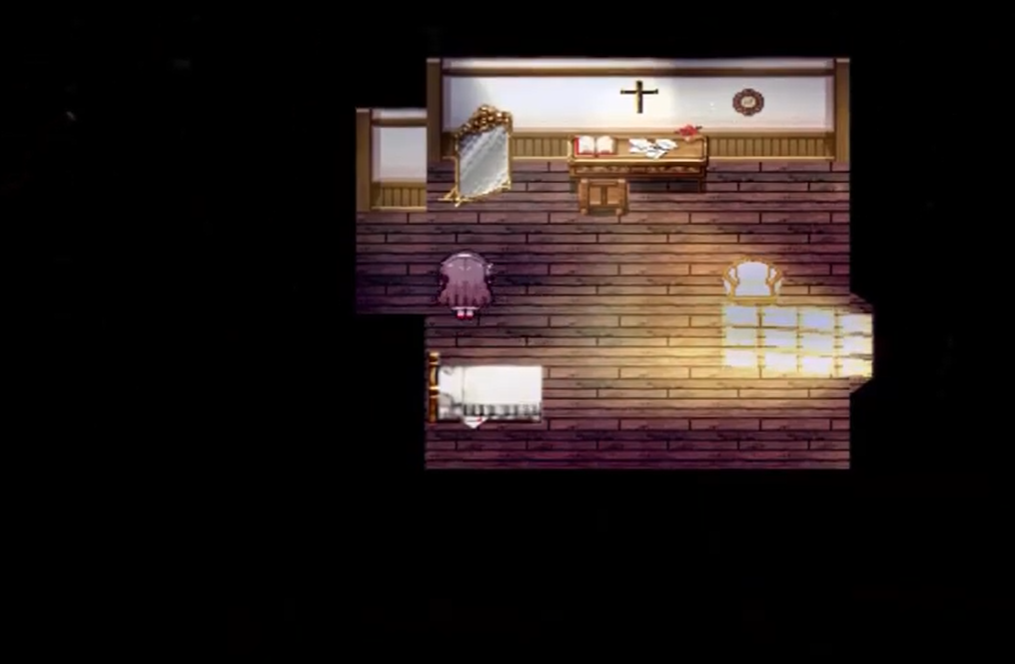
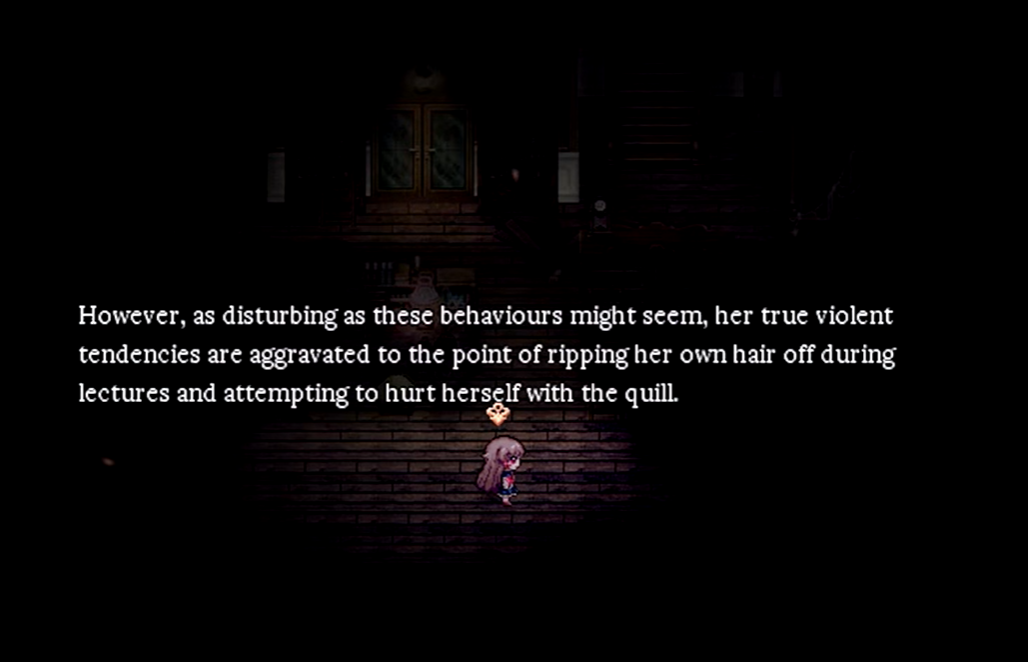
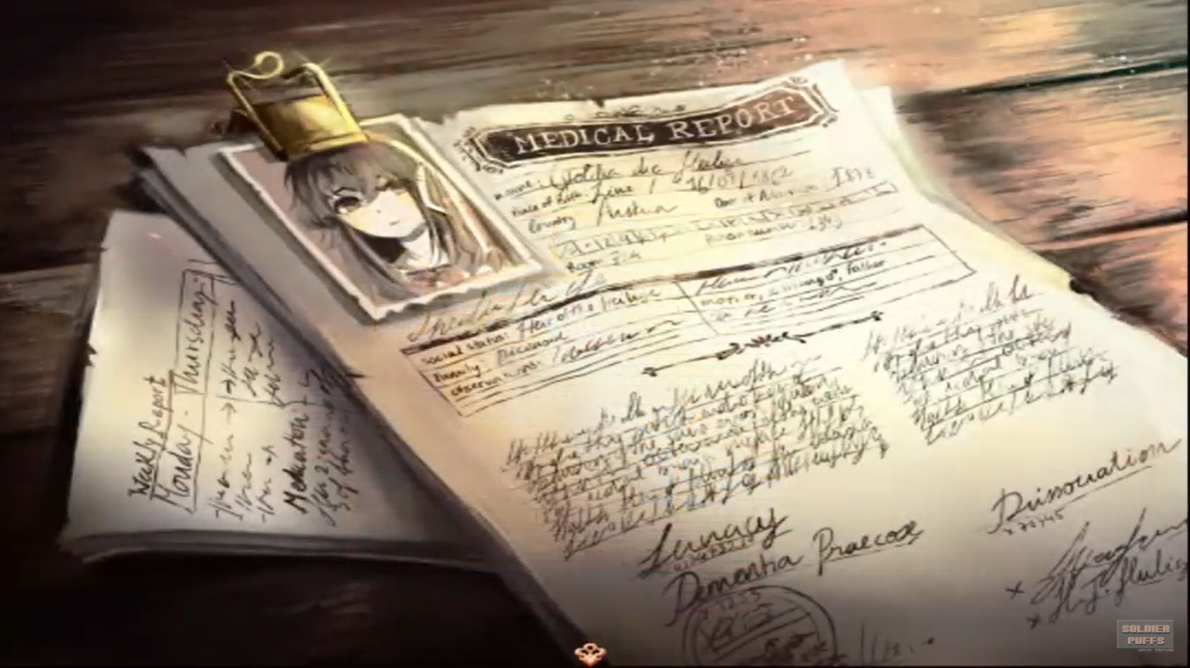
Ohhhhh, okay! PERFECT.
So, please, tell me why, to begin with, we haven’t seen this girl evolve not once in the course of the plot!
“Noo, she evolves !!
She weeps for Lisette …
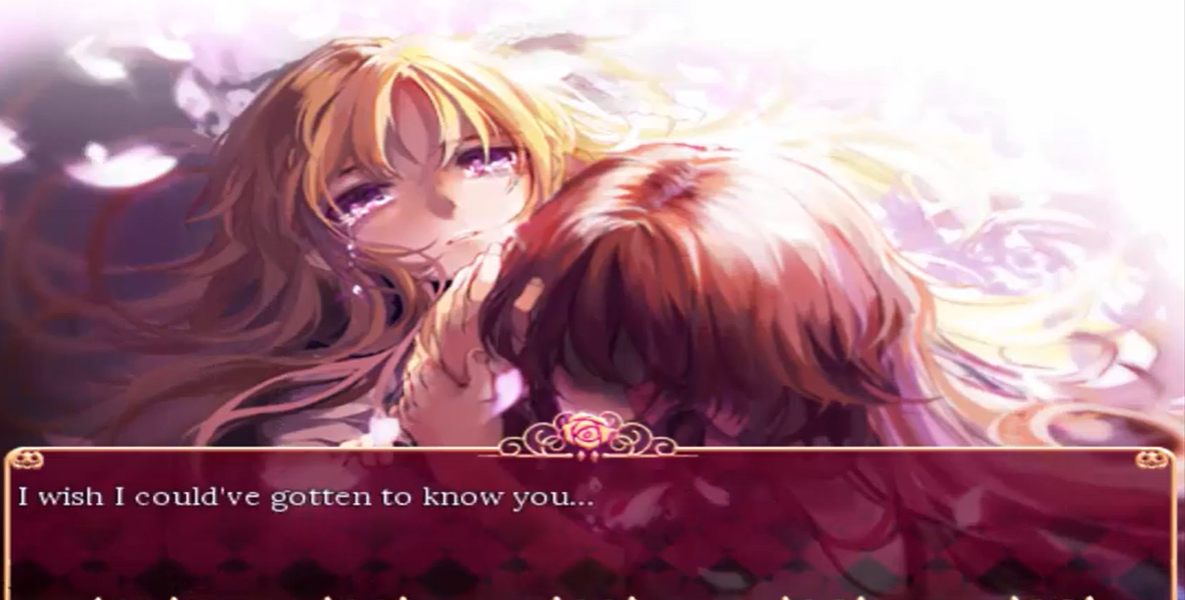
she reconciles with Harpae …
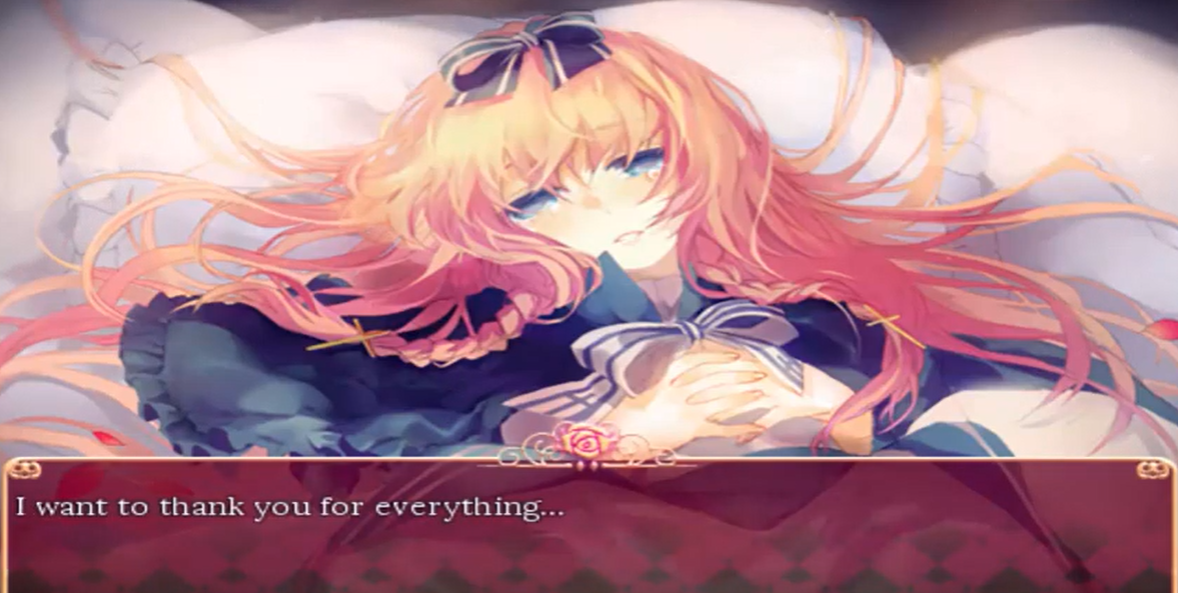
She faces Fleta! “
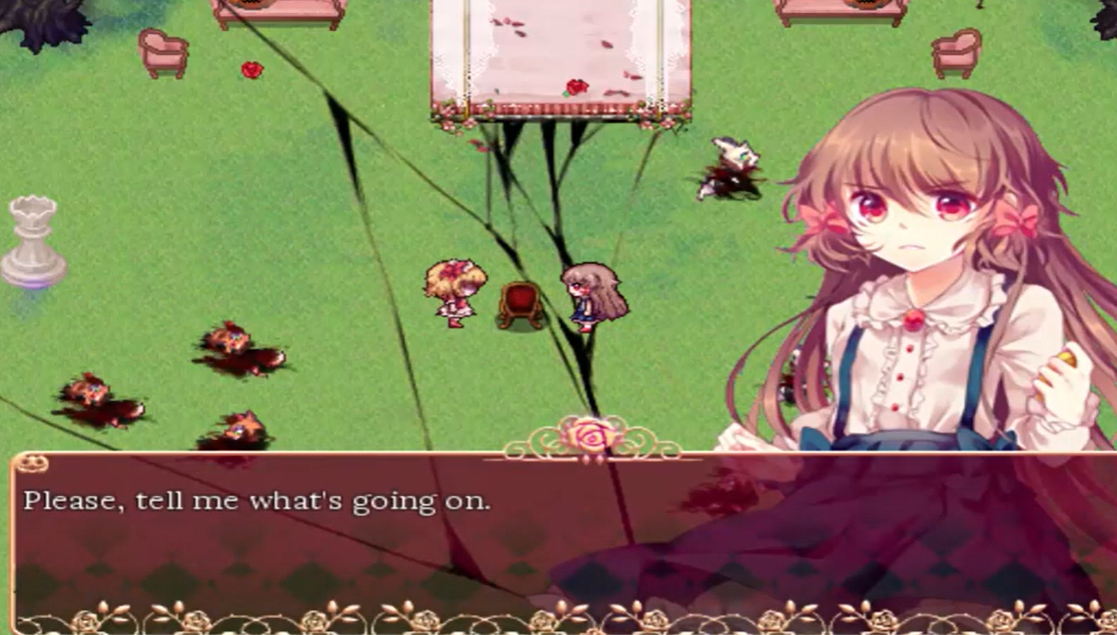
Sorry, I would like you to focus on another thing instead. Try to follow me.
Fleta’s Arc
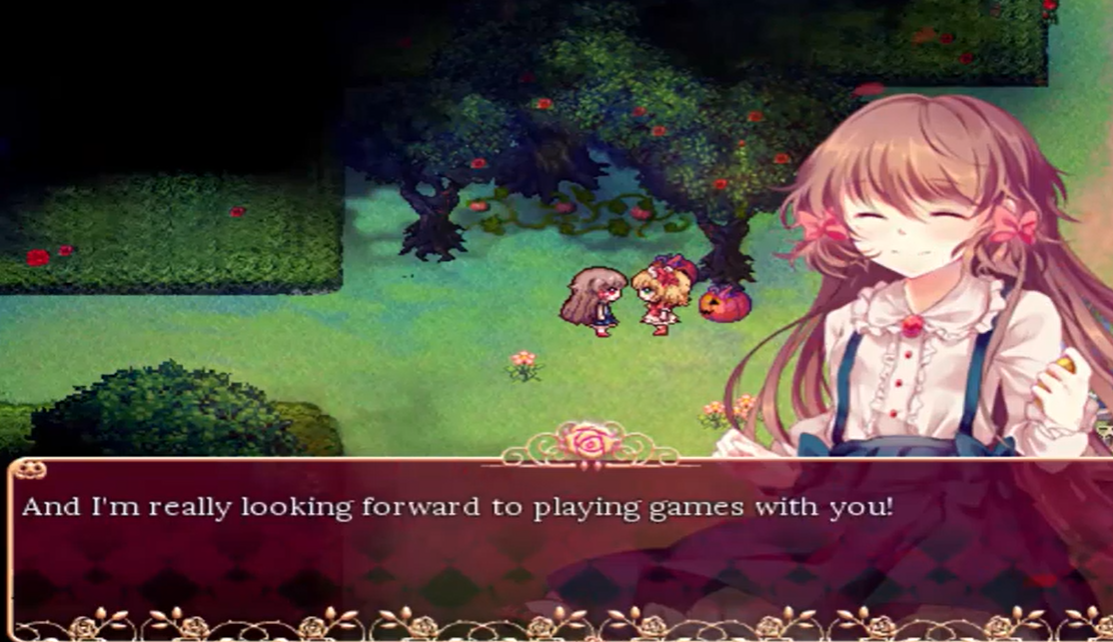
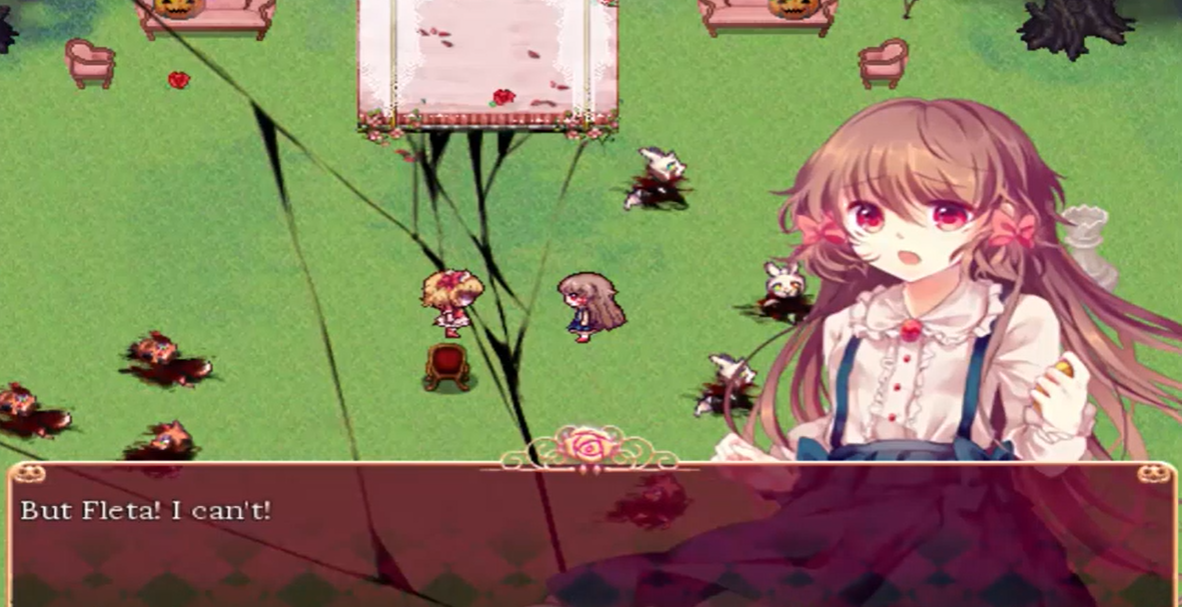
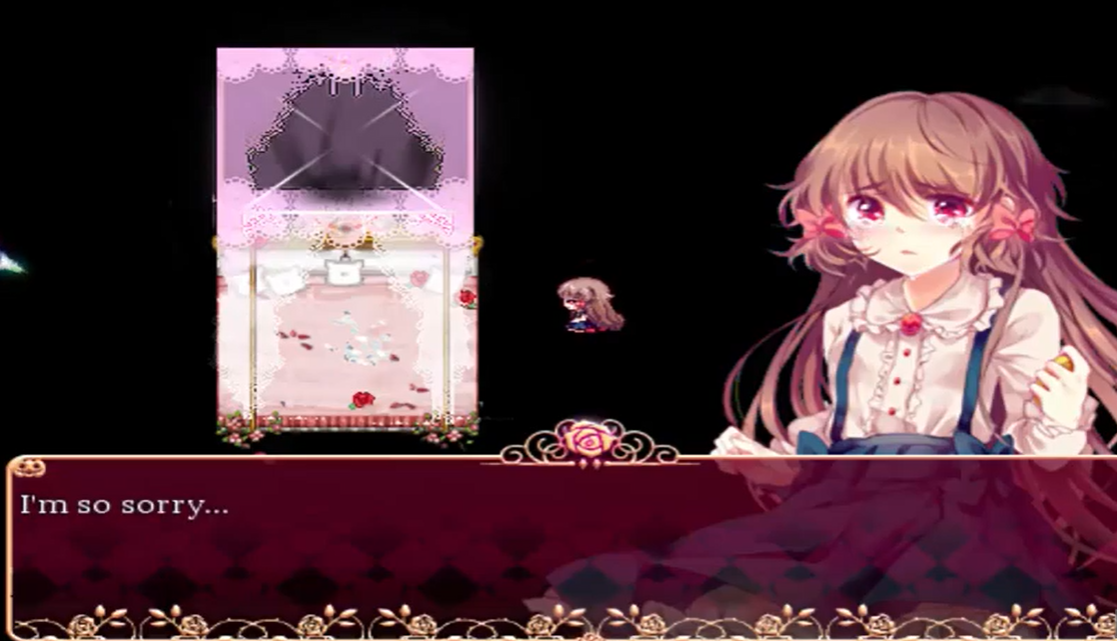
Harpae’s Arc
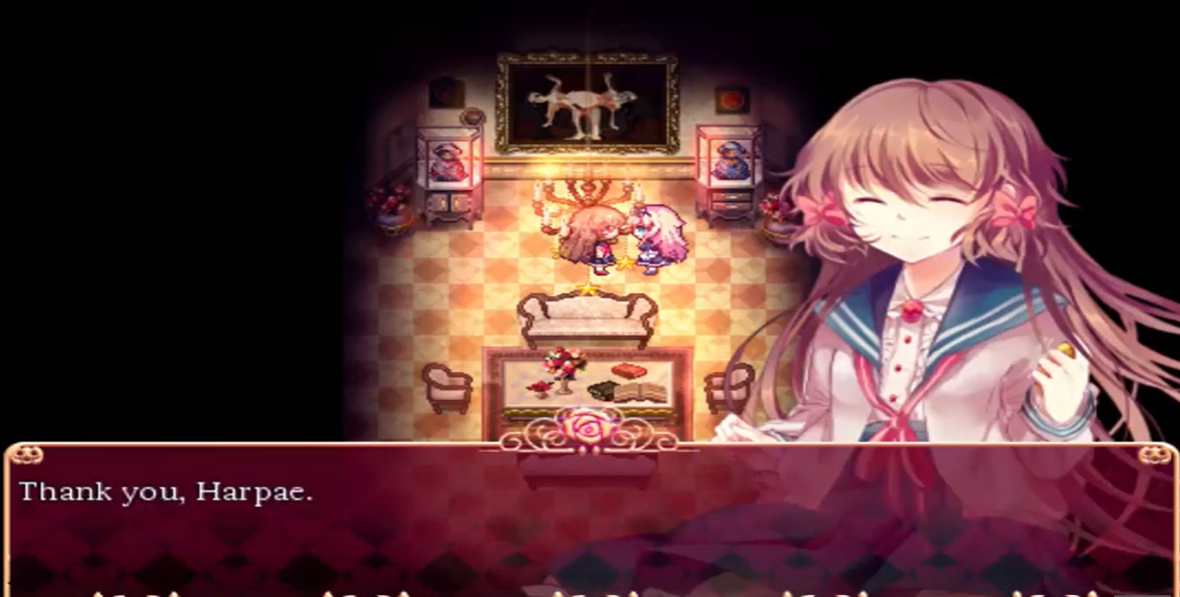
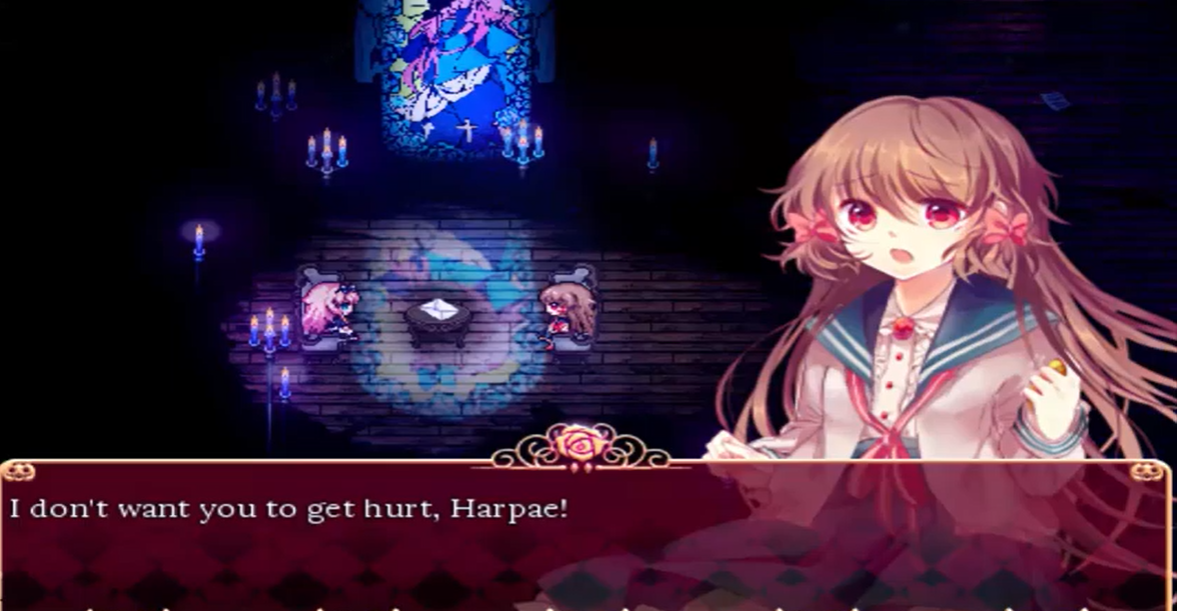
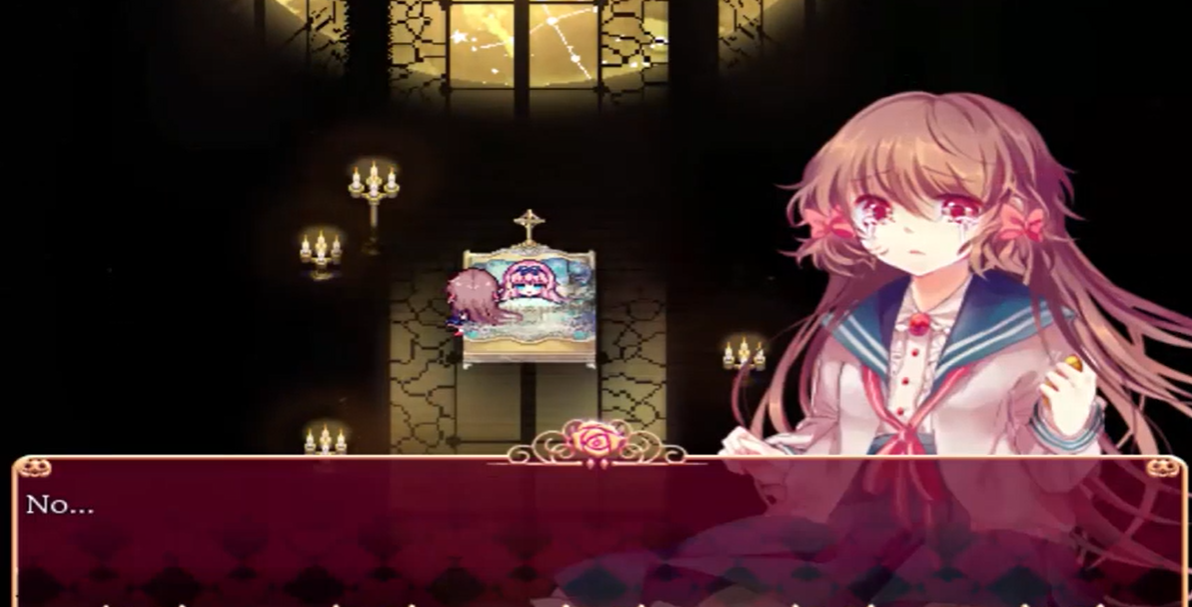
Lisette’s Arc
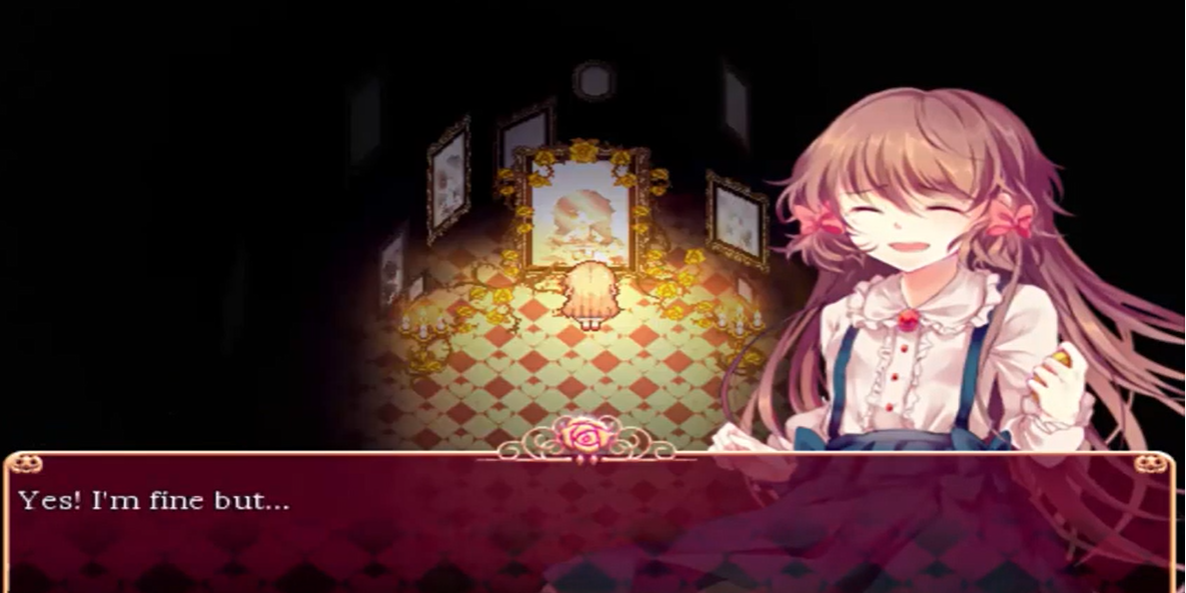
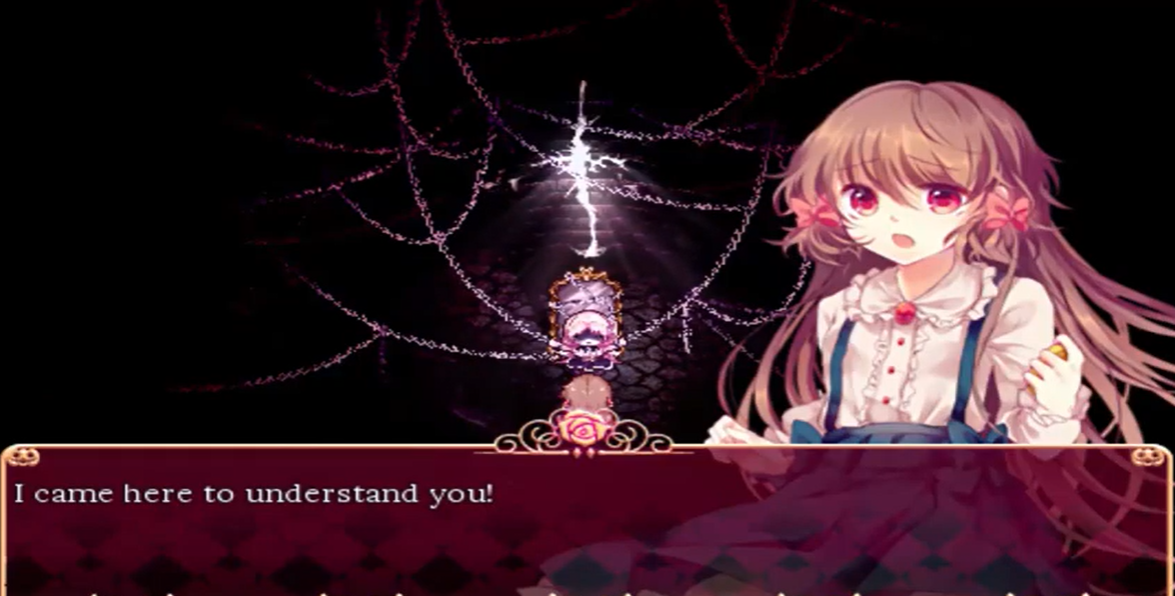
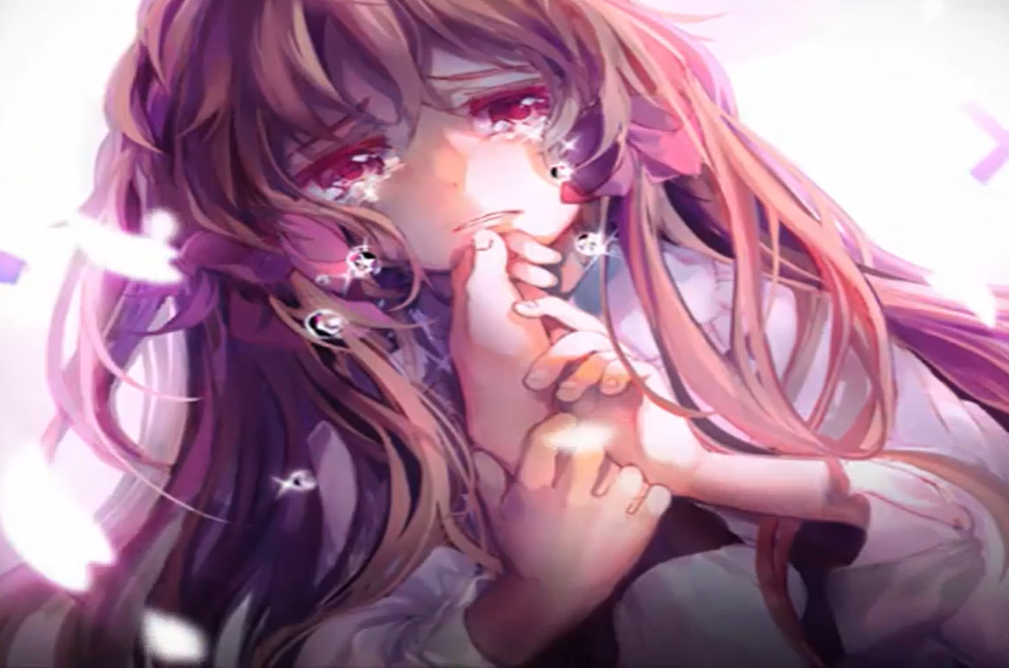
(In Lisette’s arc, a CG is dedicated to Goldia’s sadness, more than just a single potrait … But I think it’s a good equivalent)
Here, and here comes the theme of coherence . Once again, we had already talked about it in Cloé’s Requiem, for what concerned the very crude and careless link between Michel’s crazy behavior and normal behavior.
But the point is that there is a variation between behaviors that we can compare. Do you remember?

Badly done, but it’s there .
And…
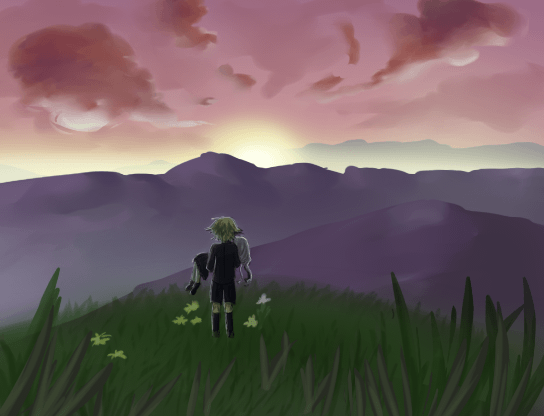
This moment in Cloé’s Requiem values a change in the plot: this image was shown only after we saw such a change . It was an image that represented relief because of the end of the tiring path of redemption that Michel and Cloé had faced.
To explain to you even better than what I’m talking about:

If I first see these three sequences of images I am moved, because I know that something has been dealt with, that a conflict has been resolved . You can also see here that it is possible to intercept a before and an after interspersed with a position and awareness . Here the stance is given by the reading of Cloé’s diary for which the vision towards her changes.

On the other hand, if I see this sequence of: hallucinogens followed by a random subspecies of comparison in which always the same expressions are used and not even a form of change in what should be being the main protagonist as well as the mastermind who first and foremost, together with the demon perhaps, created this fucking world of wonders , I honestly can’t move. Yeees, we may be surprised by the graphics but honestly: now Goldia is now mourning Lisette’s death, but why should I care? She was just a bully towards us, but we have to feel a little pity for right at the end , there are not enough reactions or positions taken by Goldia that can enhance this change .
To explain it even better: in the image above you have this.
BEFORE: Michel breaks the bookshelves at Cloé’s house, Michel reads the diary that makes him change his vision of things and cries; and AFTER his growth path is rewarded with a “spectacular” image . In the image below we have this other situation.
BEFORE: We have Goldia wandering from map to map with the vague intention of facing Lisette, hallucinogens, hallucinogens, some background reveal, hallucinogens, some vague dialogue… Did I mention hallucinogens already?
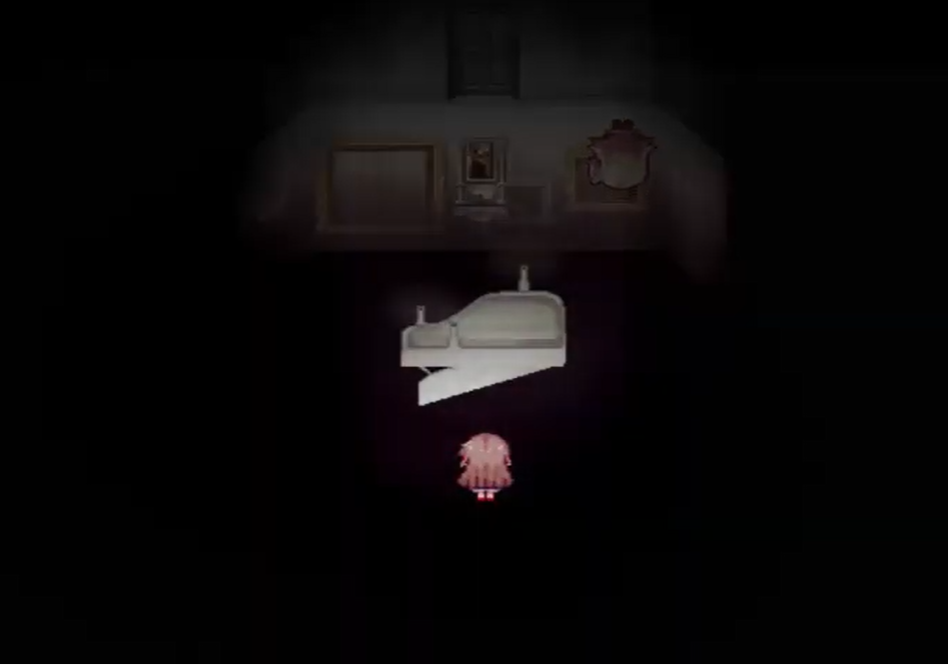
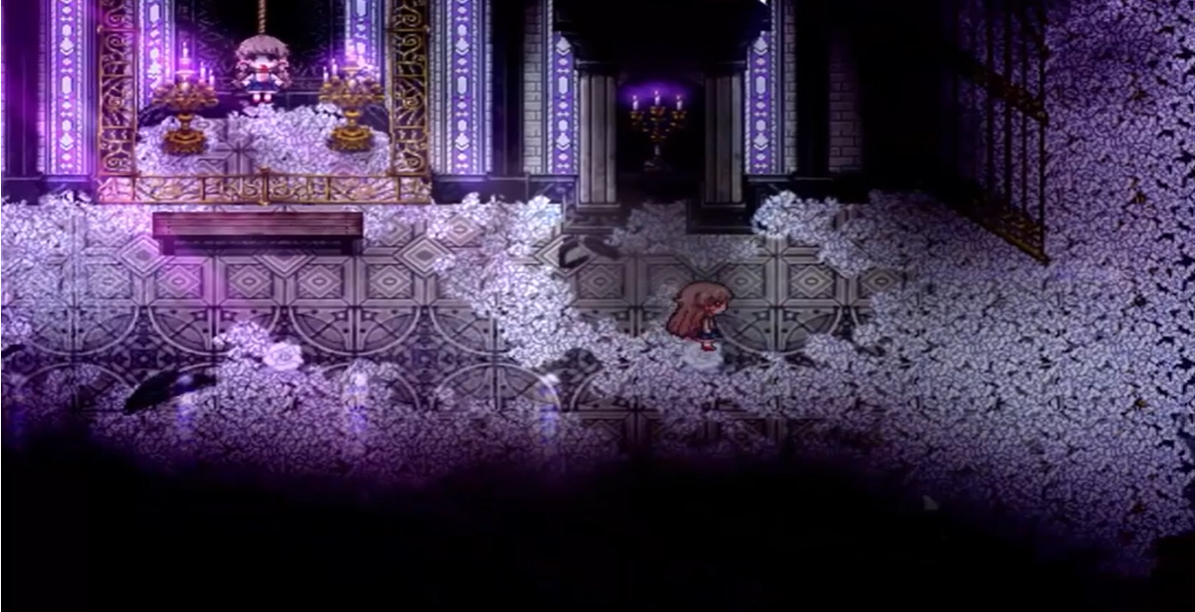

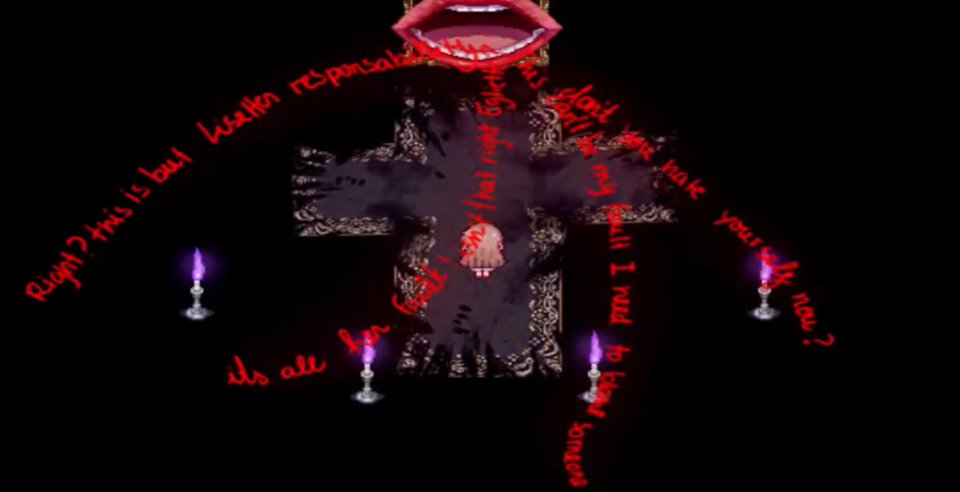

AFTER we have the scene where she is crucified and they confront each other and finally Goldia’s crying who says she loves Lisette like her other personalities.
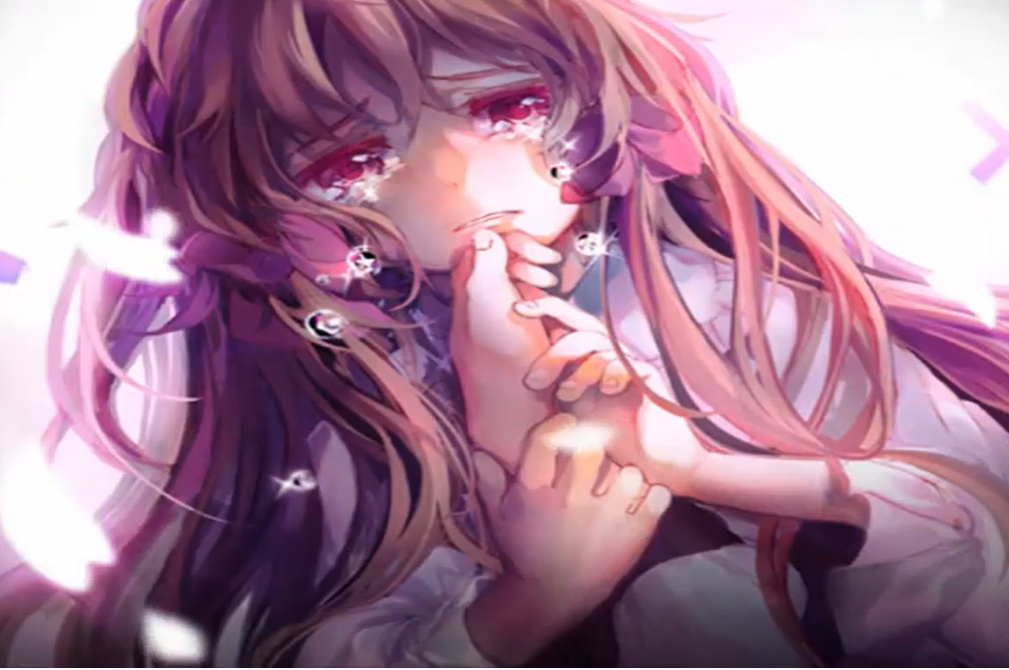
Do you think this is a decent development of a character?
That’s why I mentioned coherence.
In this story arc, Goldia has very little interaction with the situation she is facing! If you notice, she becomes a toy in Lisette’s hands. We do not have a reflection, not a stance, nothing that justifies the presence of this central scene (“I want to look at you with my eyes, I want to understand you” ) ever happened, but above all I would like to point out that first of all there is no narrative expedient that should justify this change in their relationship . In short, total emptiness until the final pity-party.
Furthermore, in addition to the problem of coherence between behaviors , which we have already seen to be a key point for stories driven mainly by the actions of the characters, there is, once again, another big problem which is the release of information.
So what are we going to do now? In fact, as we did with Cloé’s Requiem we will take care of rearranging the information that during the game we got to a excessive distance from each other and completely randomly.
Ready, set, GO! Here is explained on the fly the plot of Pocket Mirror.
A) This girl… Mother … Girl-mother sold her children to a demon.
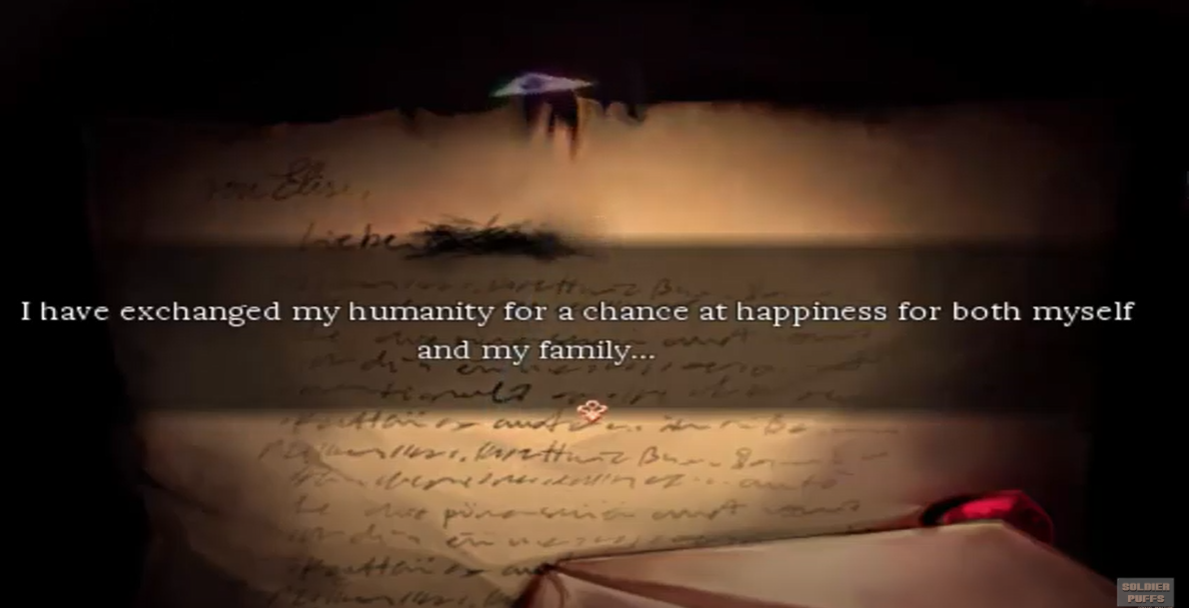
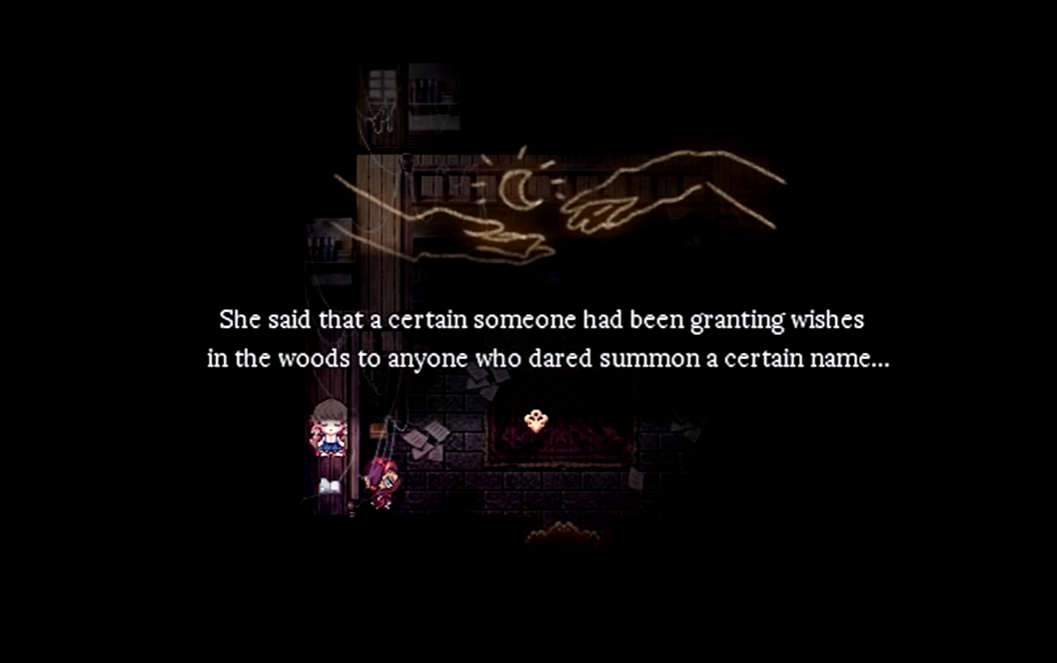
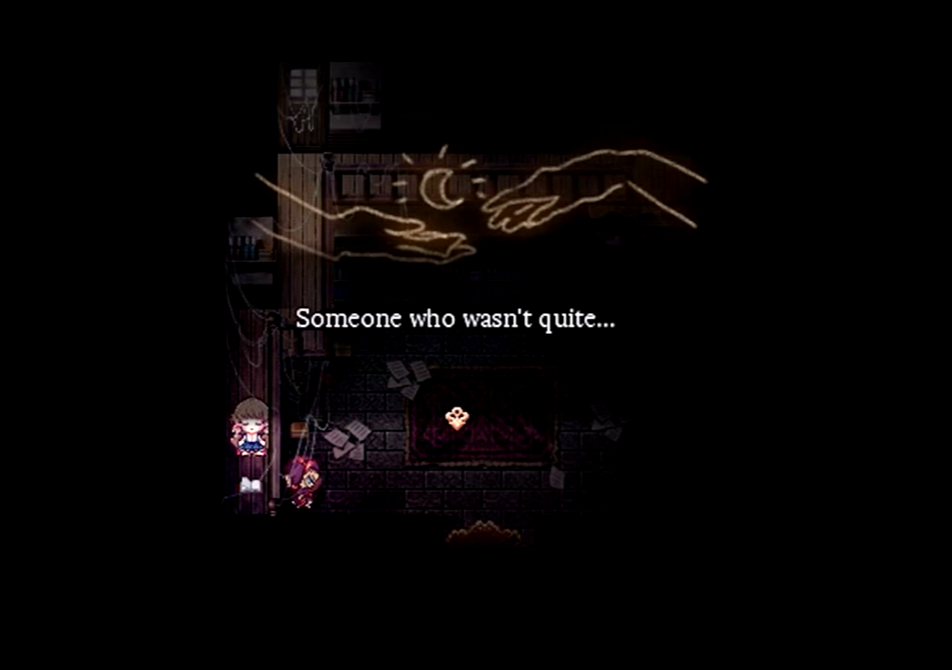

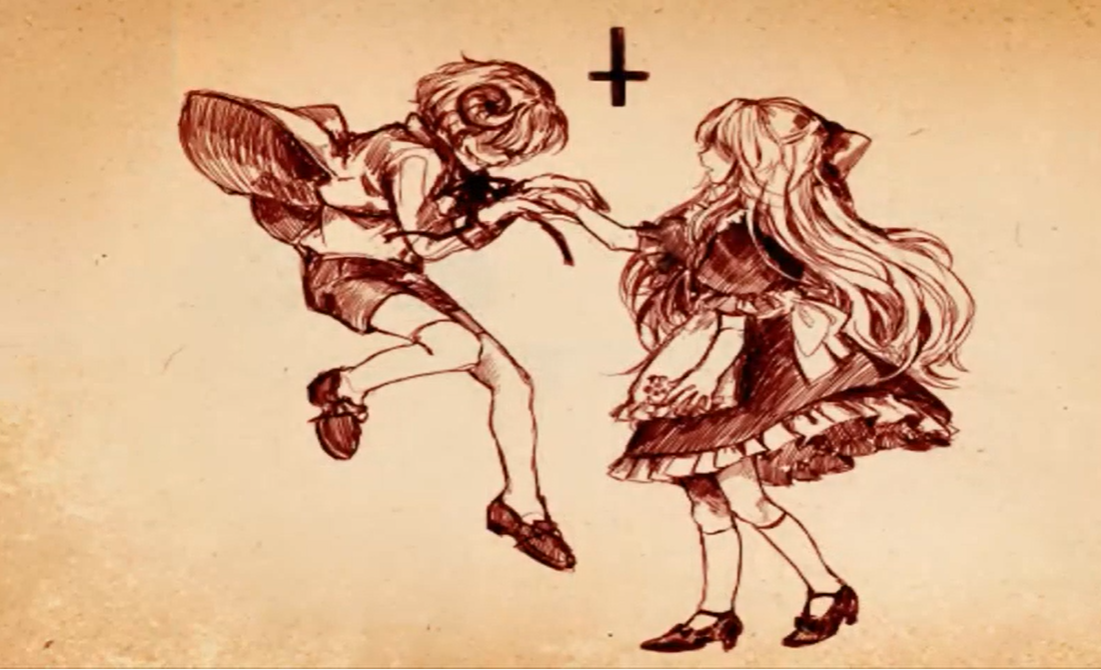
If you had not understood there is the crucifix turned to make you understand that THIS IS SATAN.
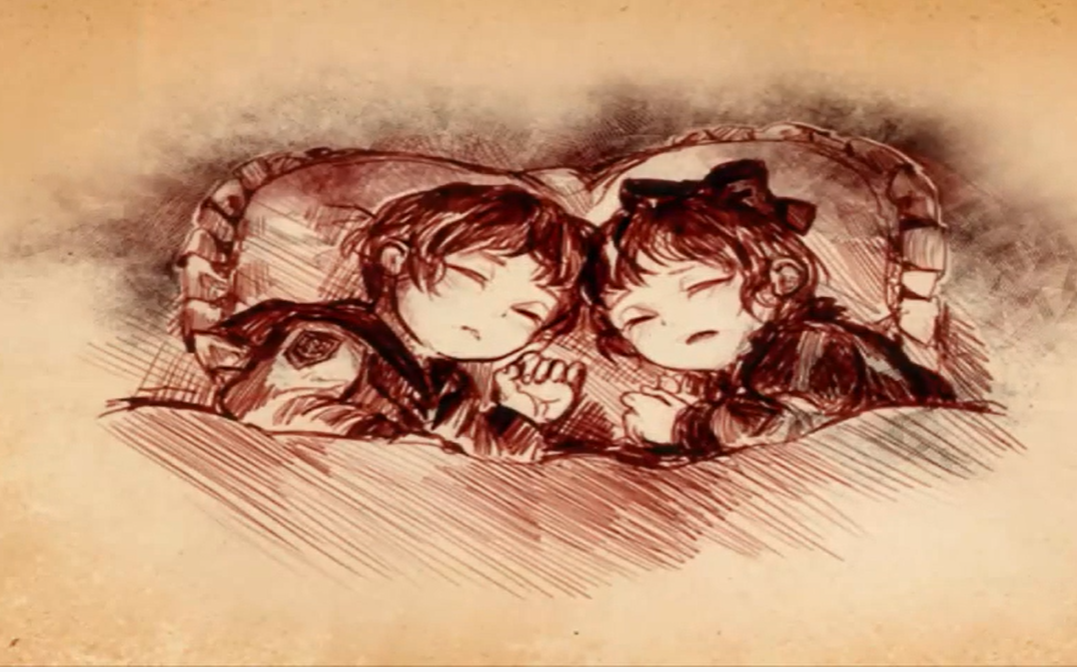
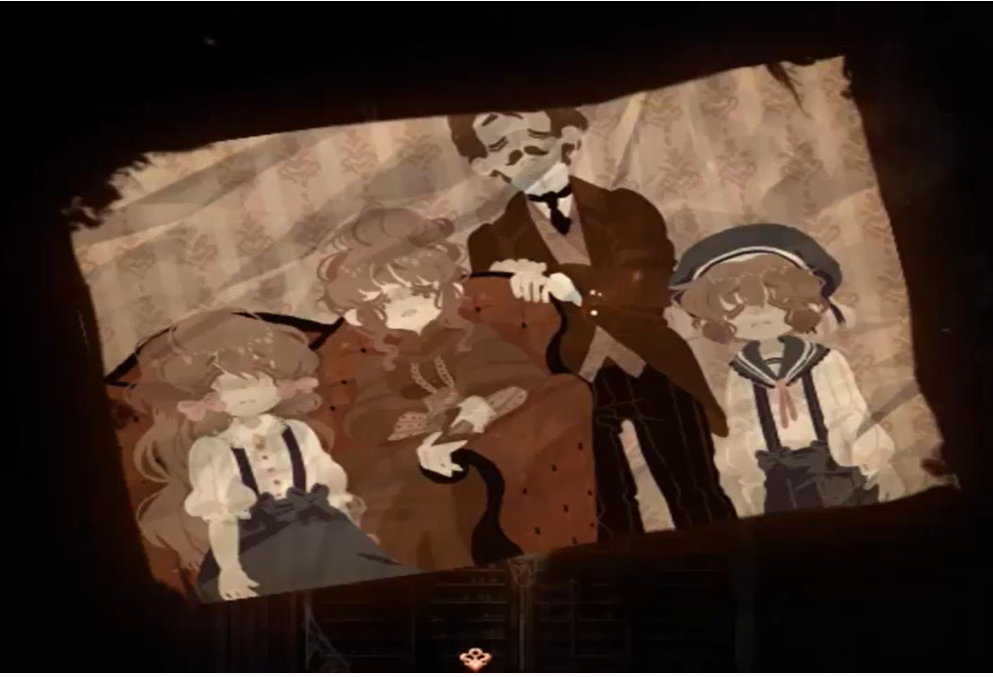

B) So she went crazy after the deal , presumably, because tormented by guilt.
In fact this error made of her in her youth led to serious consequences …



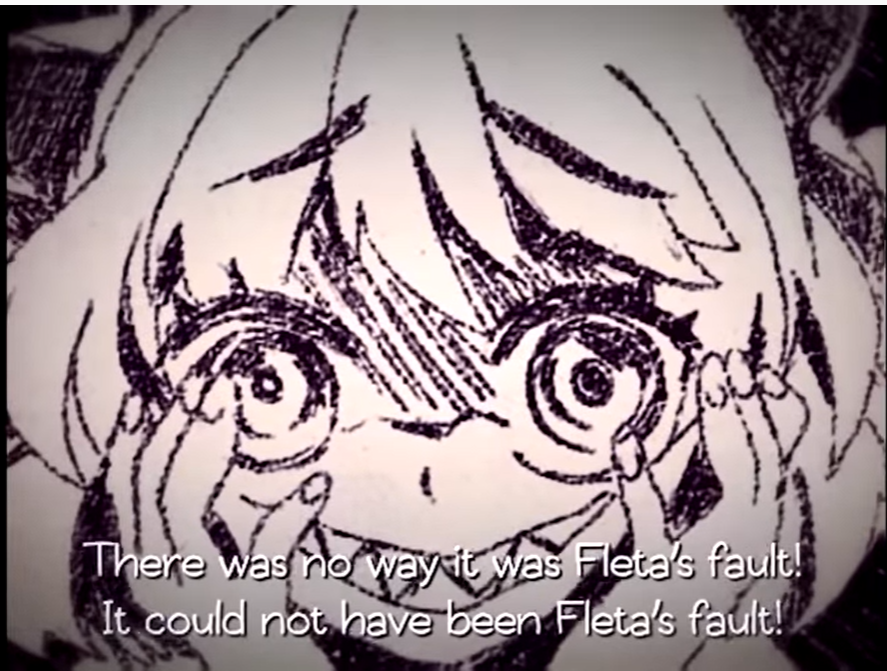
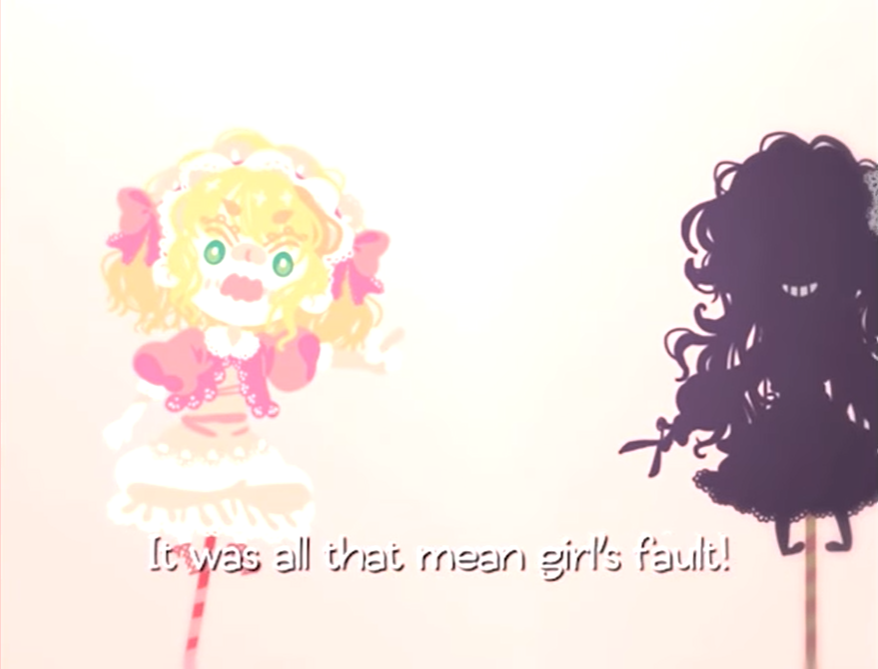
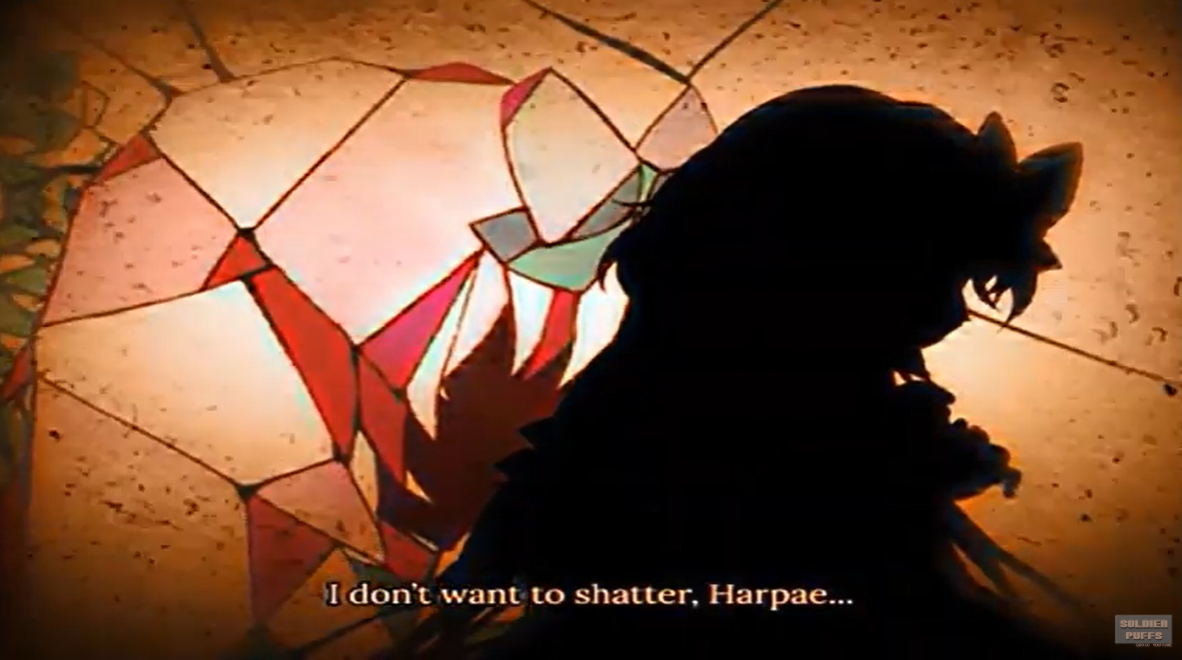
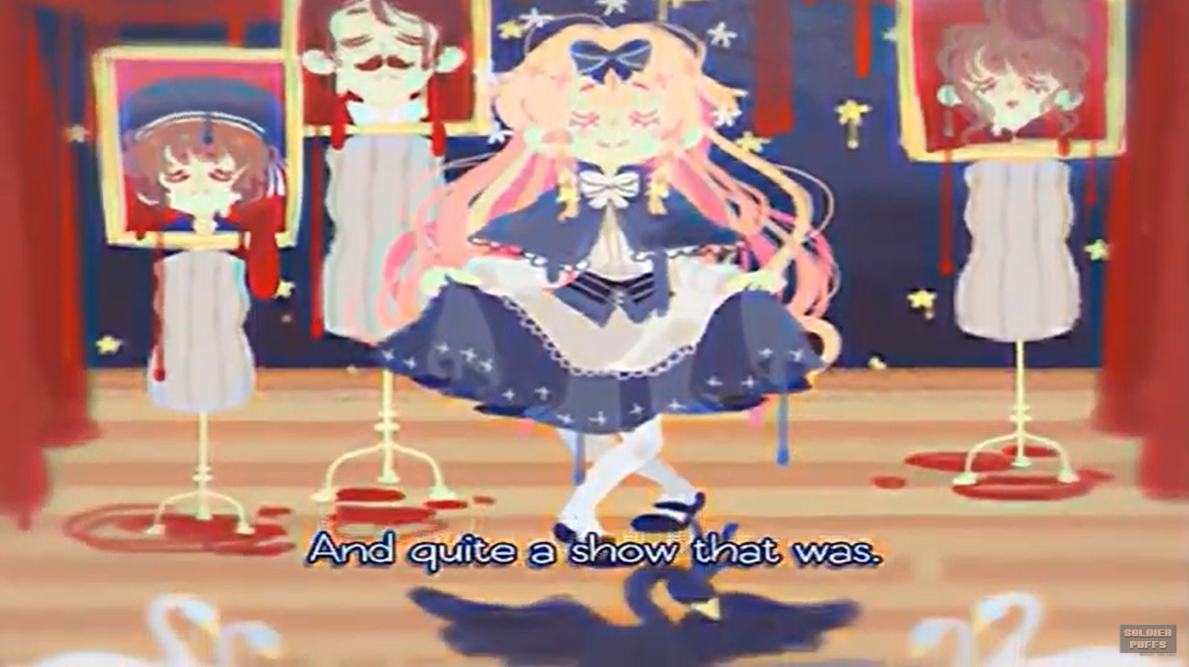
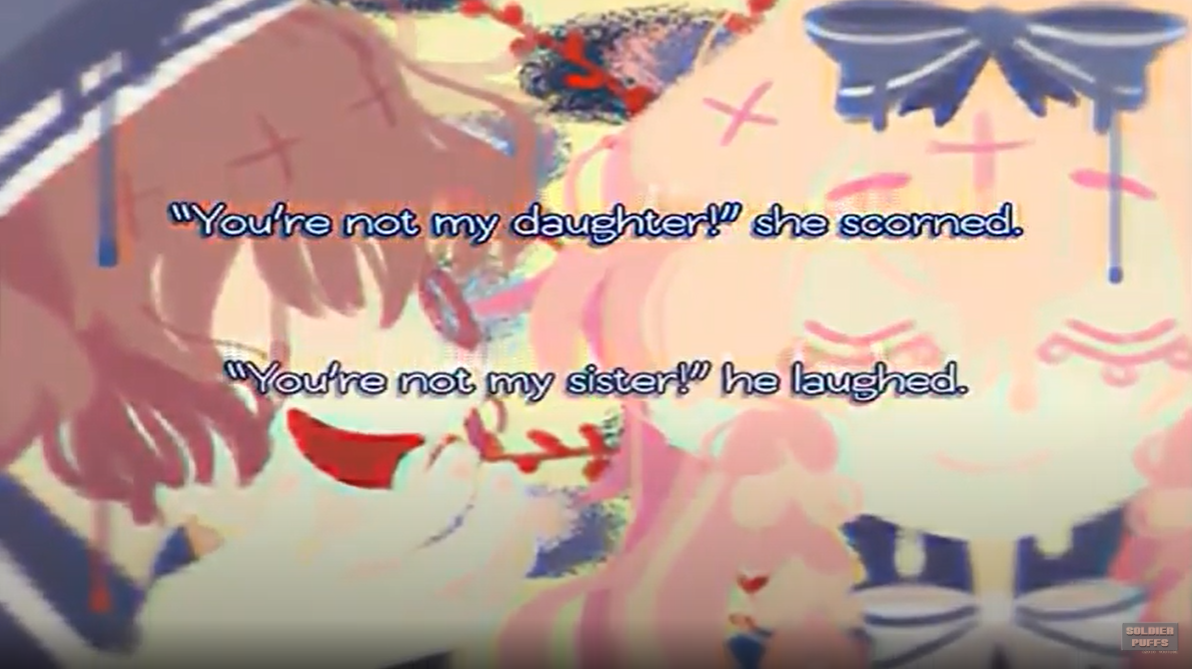
So, either because of the repressive context of the 19th century, or because she is a child of Satan , our little Goldia could not grow so healthy mentally: rebellious personalities have been born since she was little. That’s why Goldia generated Harpae’s personality to stop the mess that Fleta and Lisette were up to . Harpae has thus become a sacrificial victim to submit to good manners and etiquette, striving to pass Goldia as a good young lady while Lisette has been repressed and hidden in Goldia’s subconscious.
PS: We are talking about the sacrifice that Harpae makes; and thank goodness she wasn’t born in a poor family! Note the black swan as a detail … We’ll come back to you later.
For the moment we continue with the plot.
) When the game starts; Goldia begins her psychedelic journey where she has to try to deal with all her personalities…
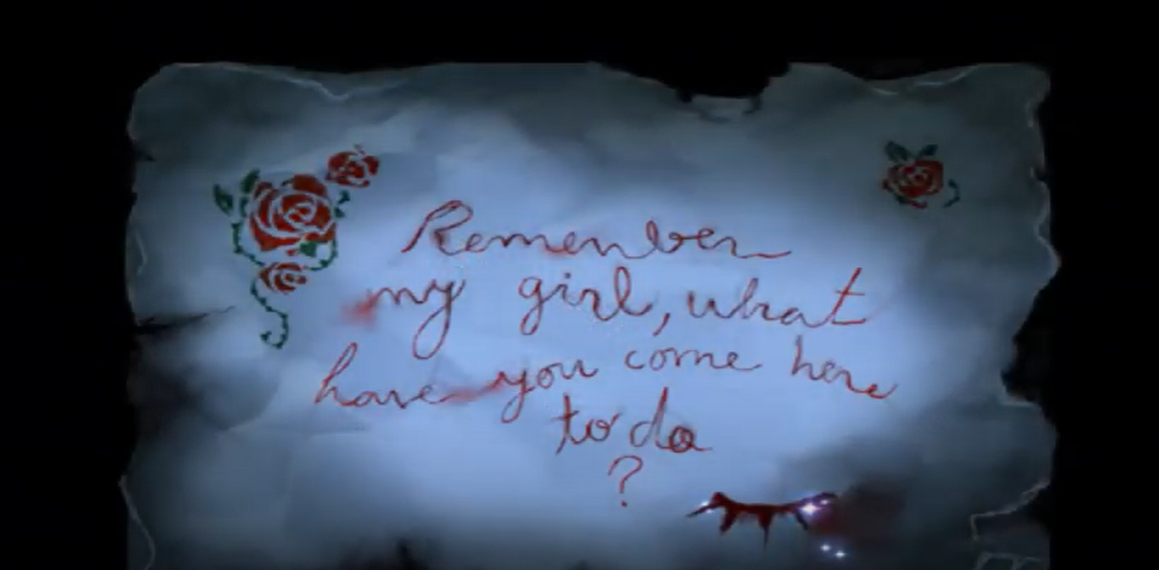

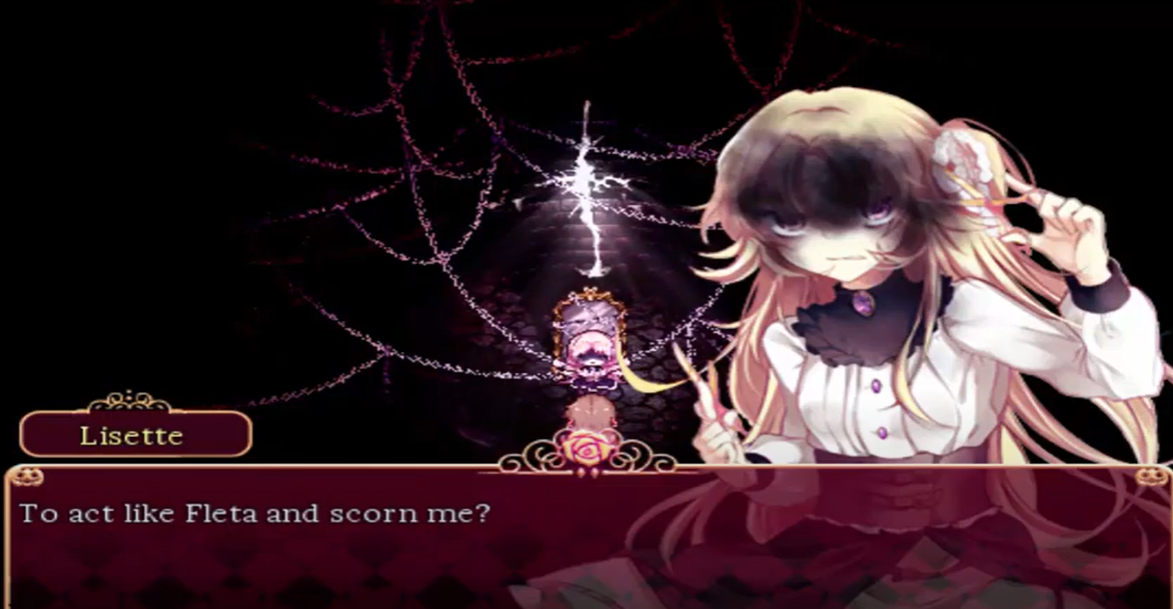
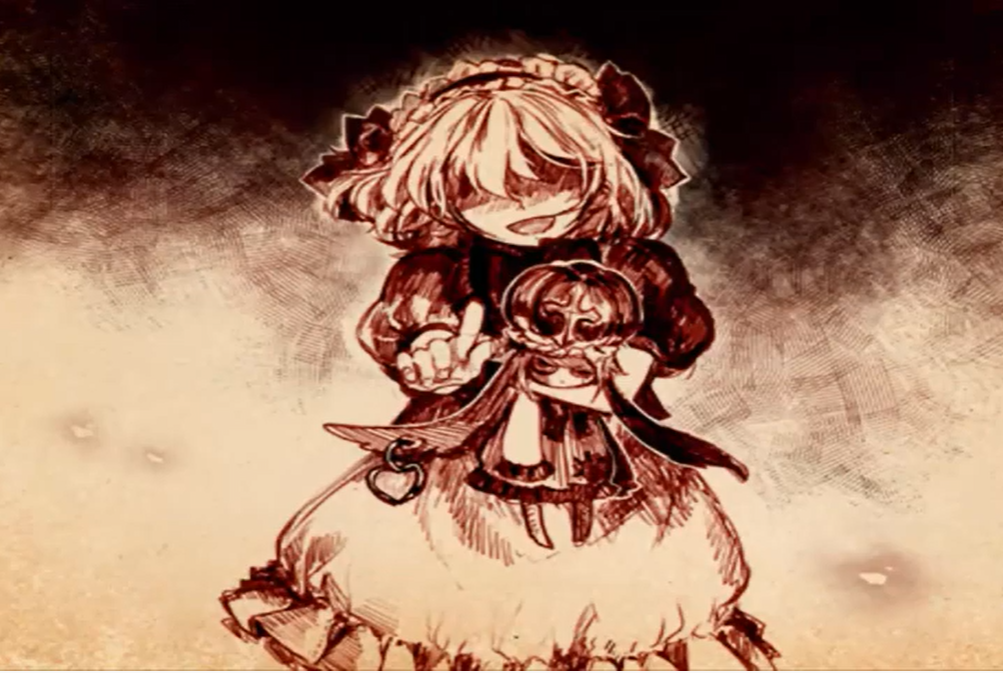
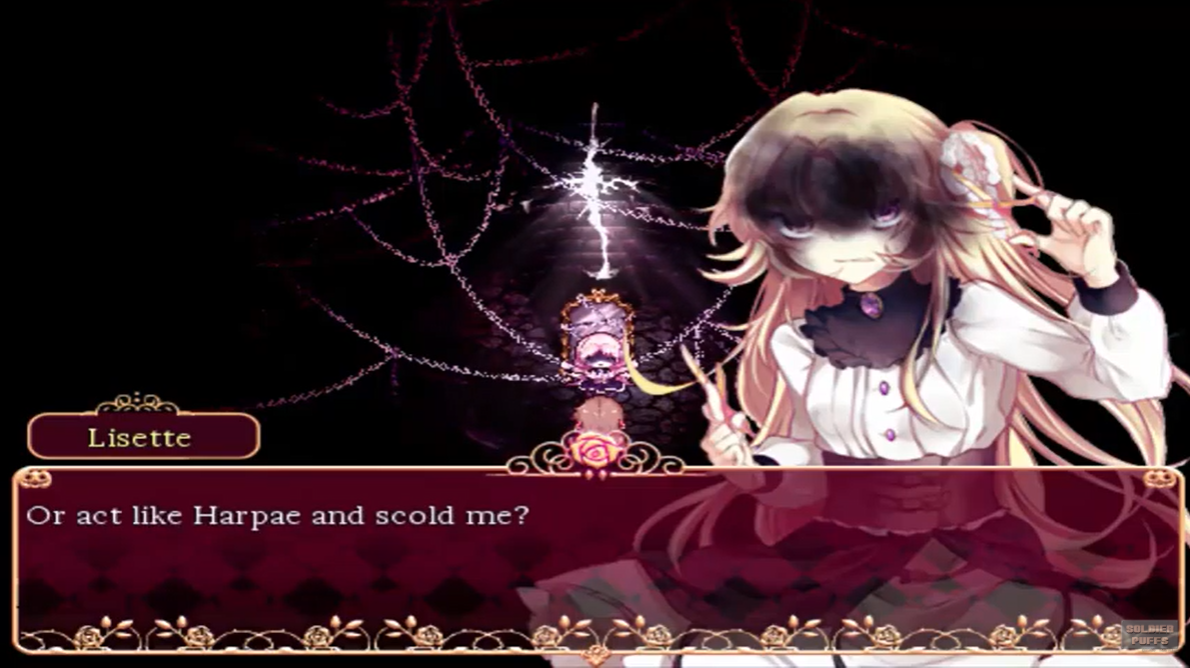
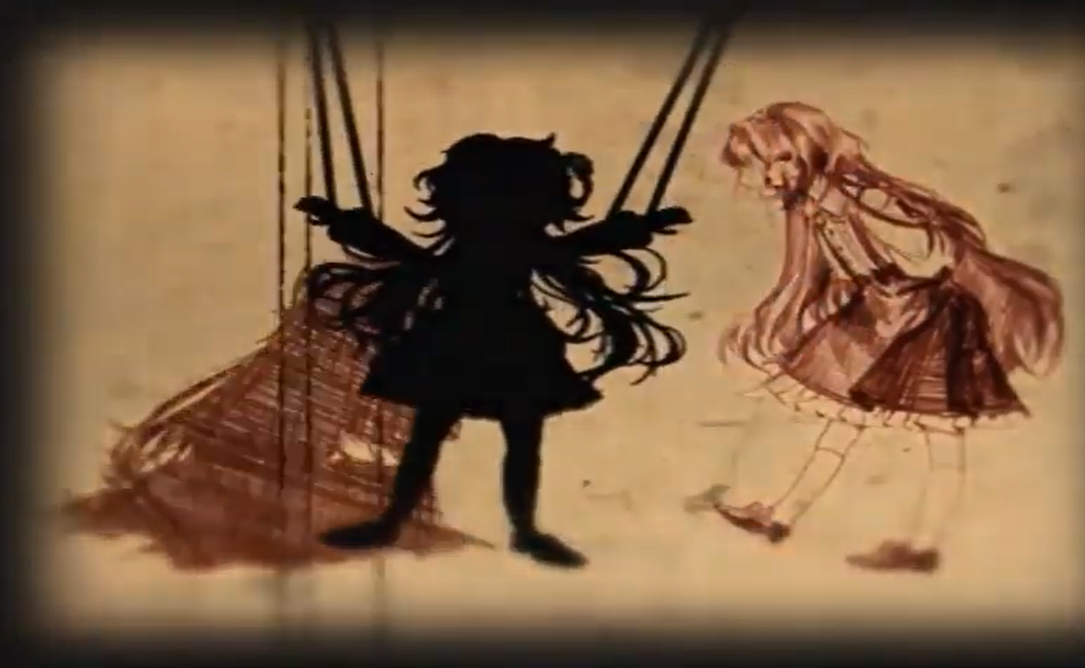
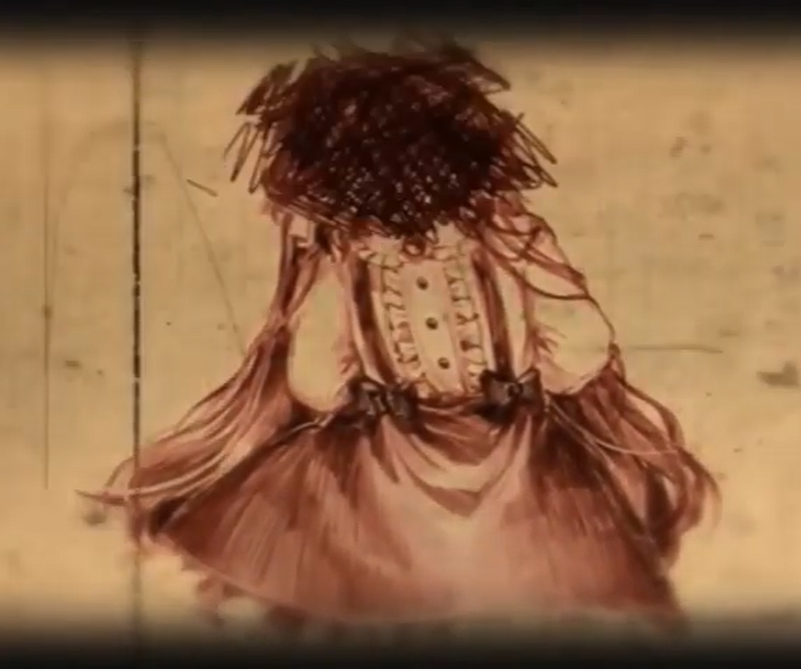
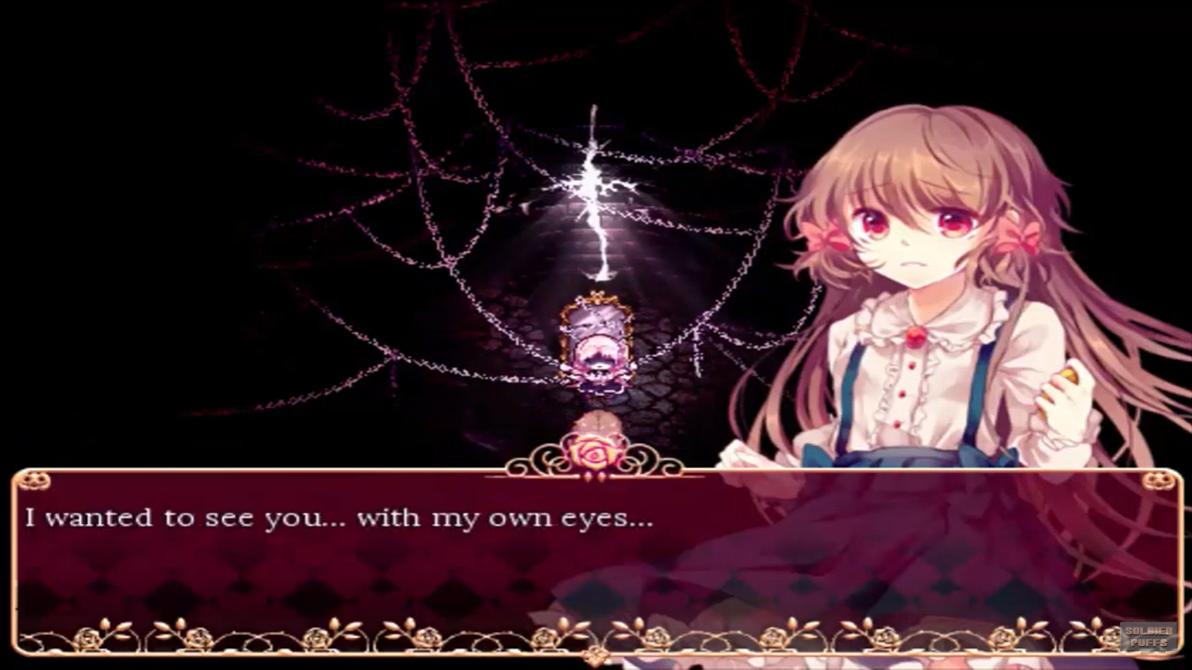
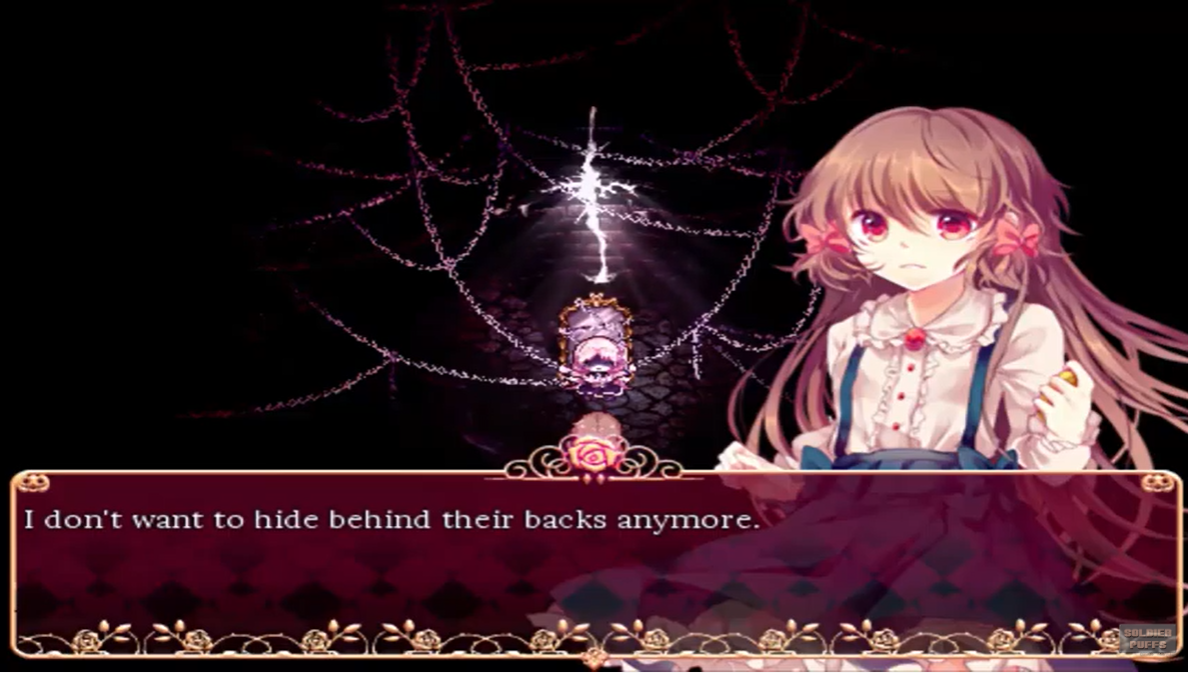
D) And after finishing the narrative with Lisette, Goldia is ready to face the final big boss and confront Enjel, specially created by the demon according to what her video presentation tells us.

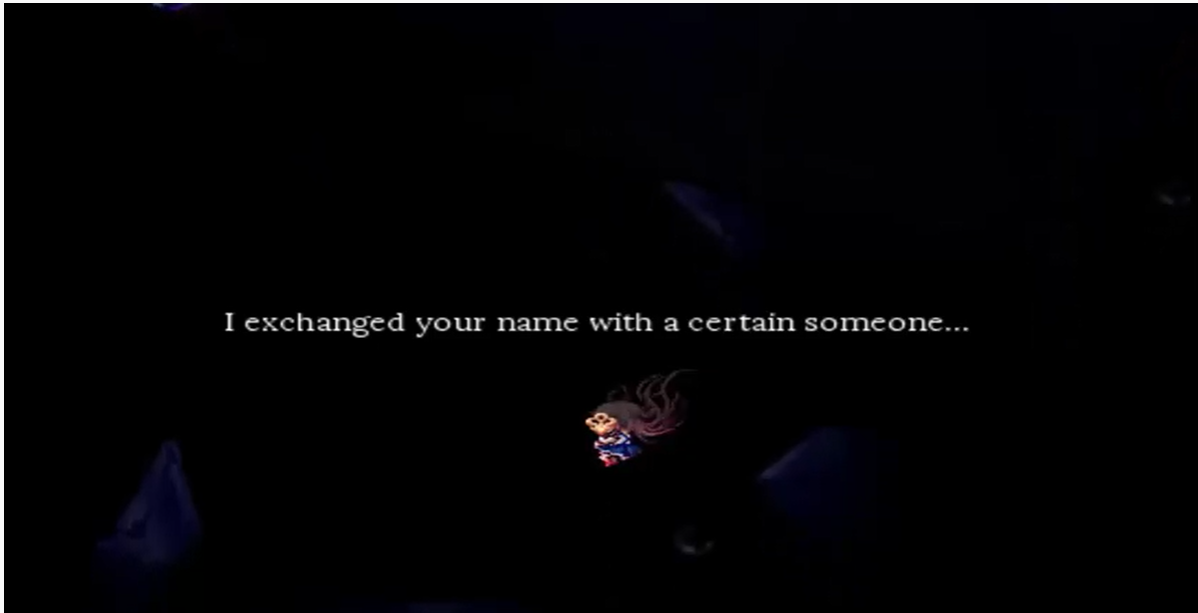
(I pause to point out how insistently the theme of the pact with the demon returns. If we’ve learned anything from the old article on Cloé’s Requiem we know that when authors put several times, in a decontextualized way, the same plot detail means that it was an important element that they did not know how to explain . In this case we can shift this difficulty from understanding in the strictest sense of the word, to memorization . In fact AstralShift constantly tries to remind you of the fundamental things to memorize on the plot trying desperately to put them back in the middle in various points of the game even when you are talking about something else, as in these scenes that are contextualized in the middle of the clash between Goldia and Lisette and repeat phrases said in reality from the beginning of the game.)
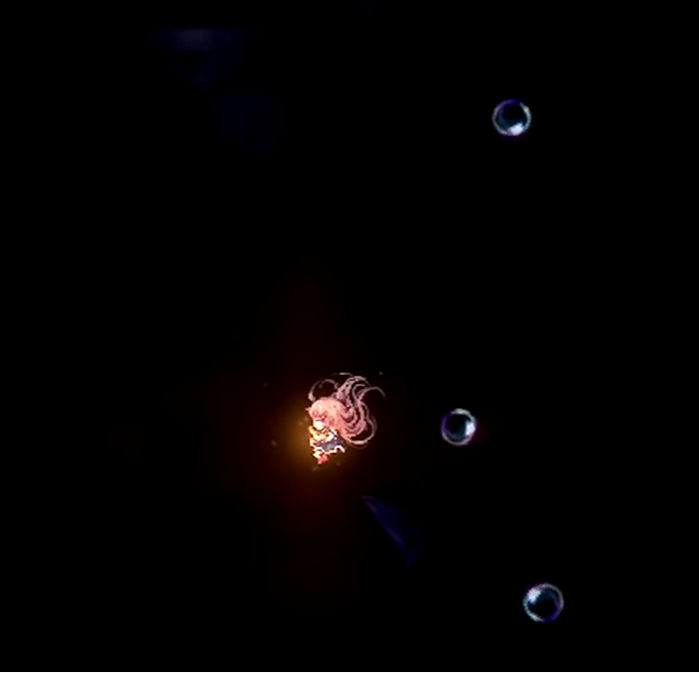

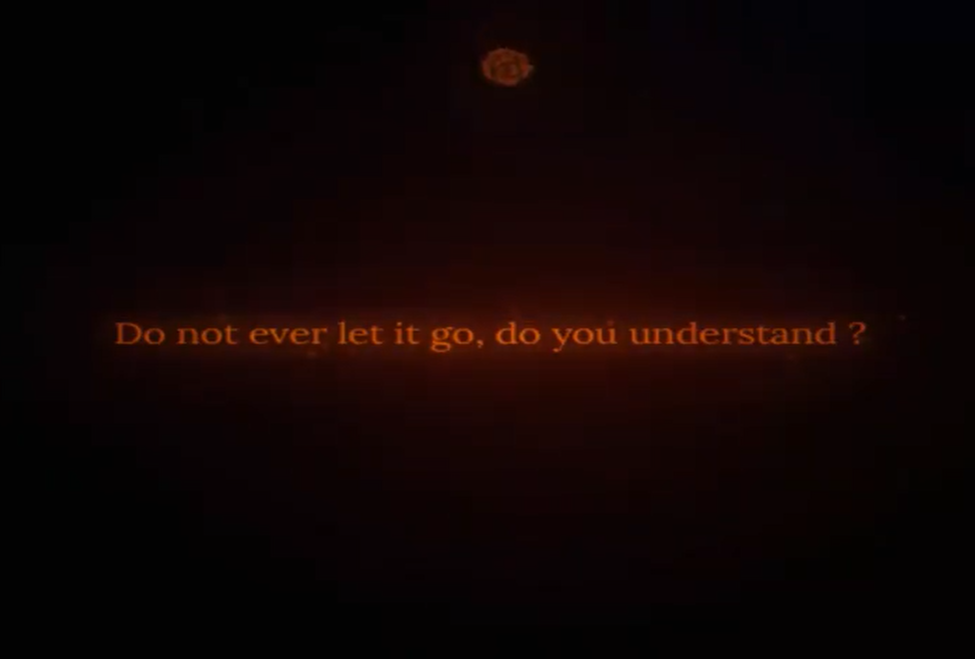
… But returning to the meaning of the pocket mirror and to the evil plan of Satan …
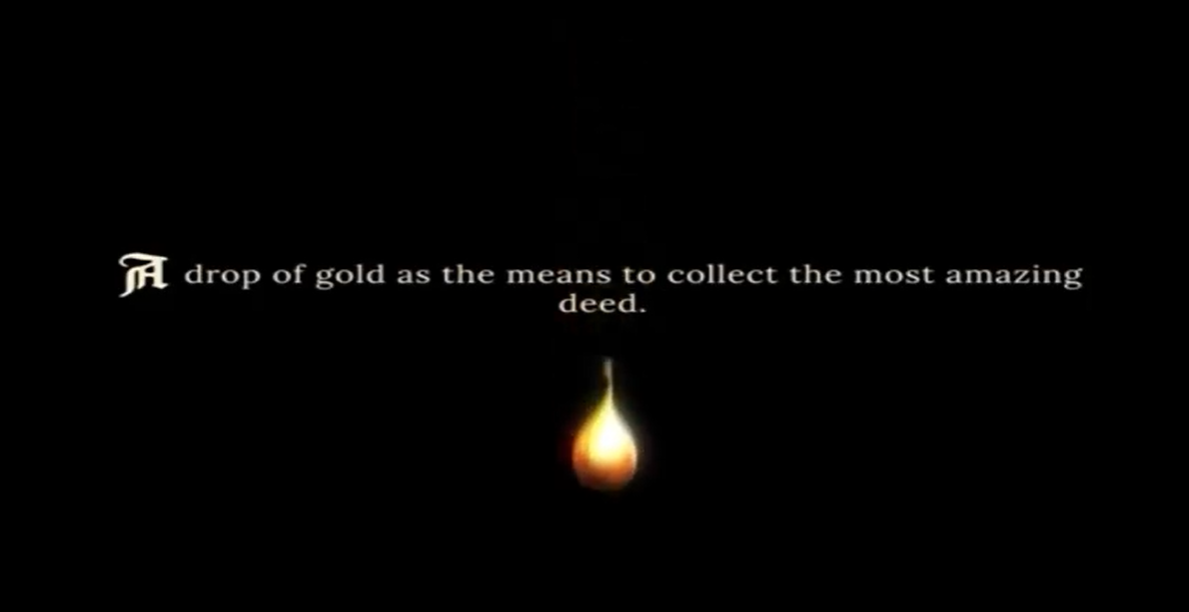


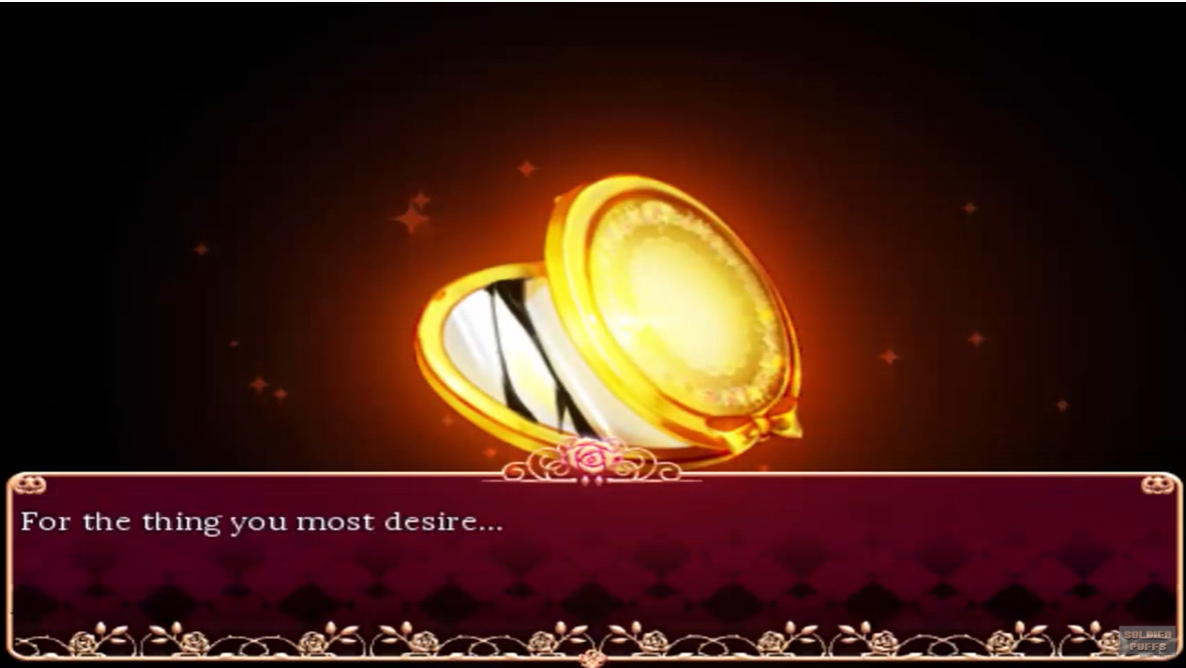
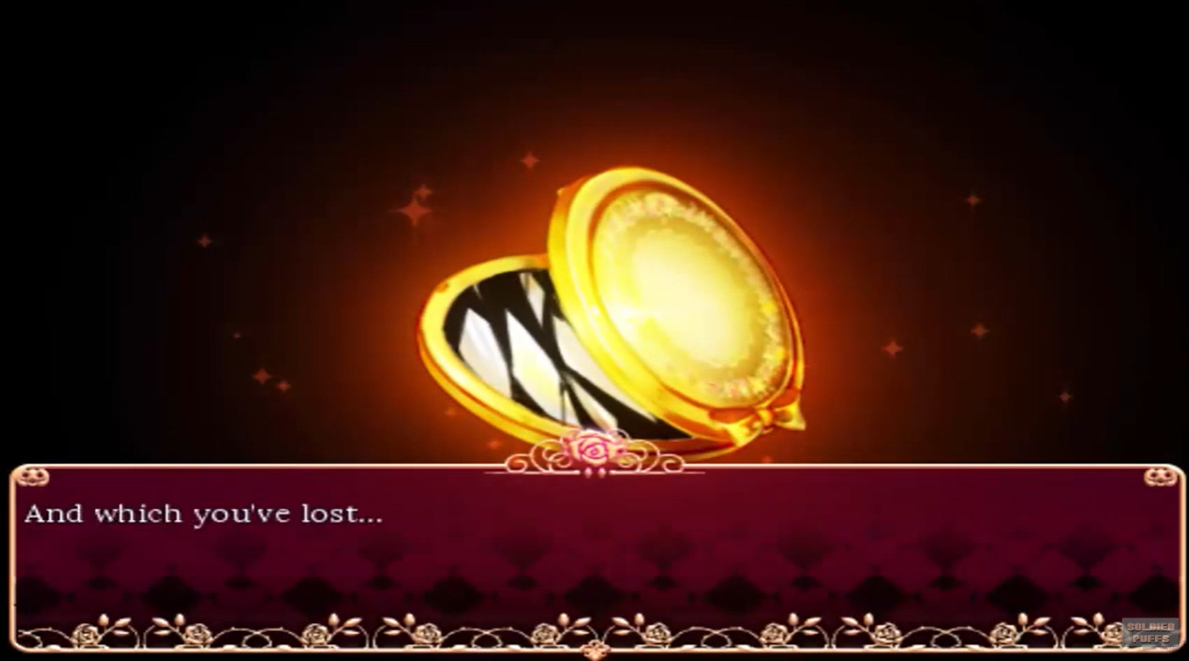
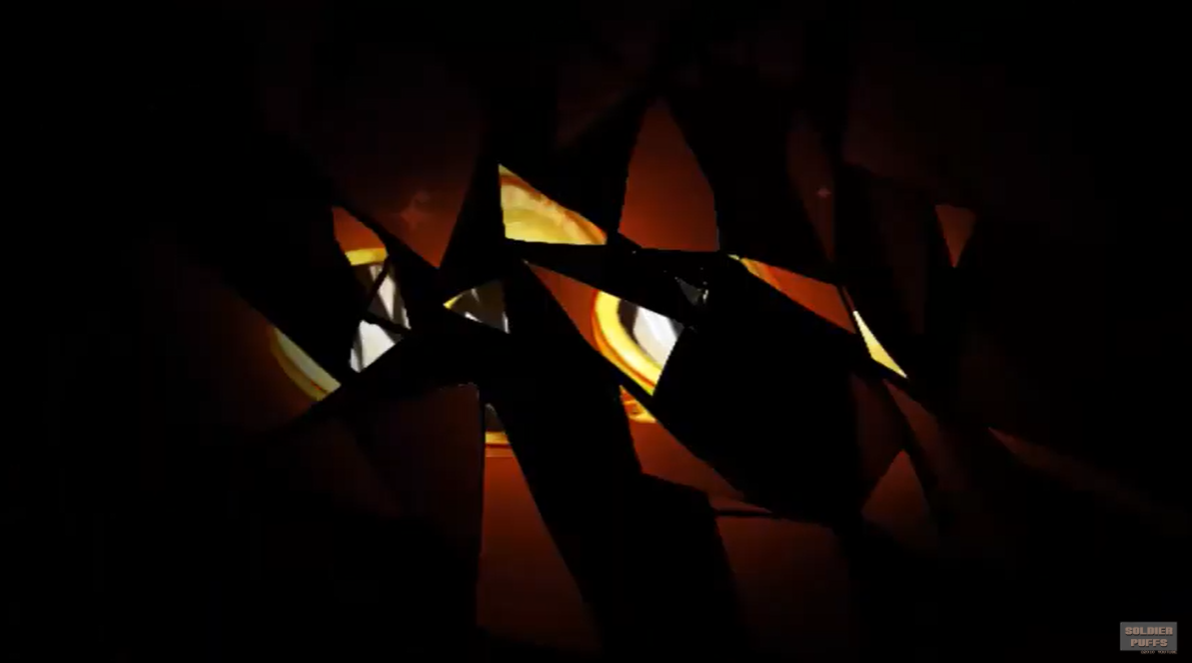
(This son of a bitch destroyed it!)


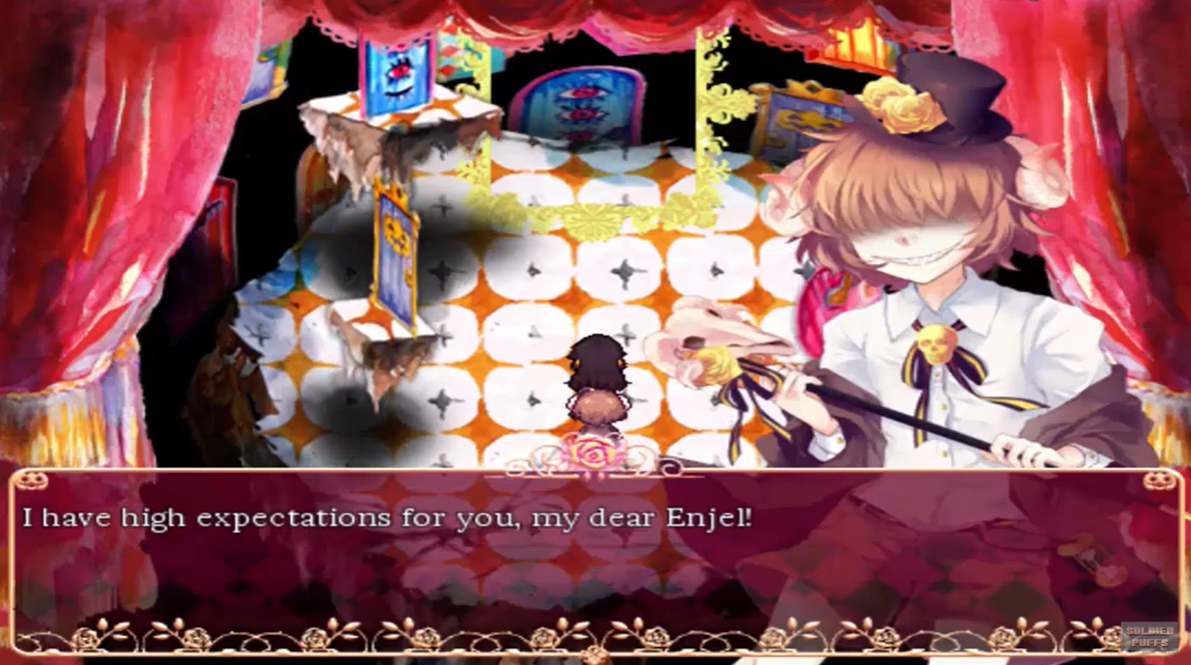
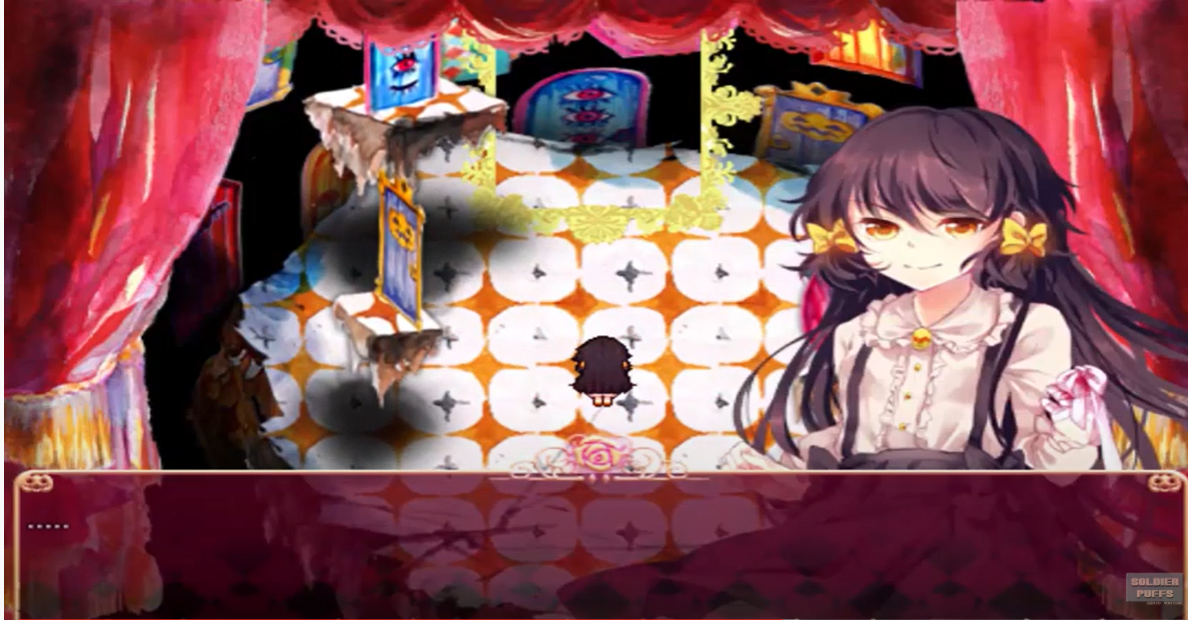
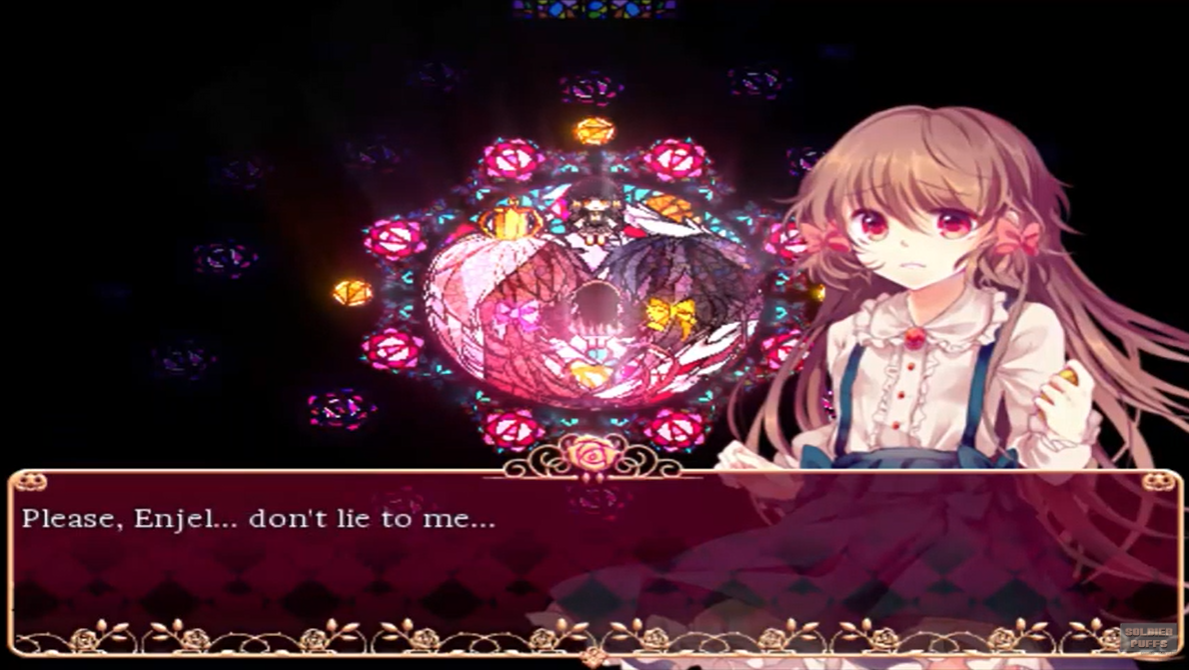

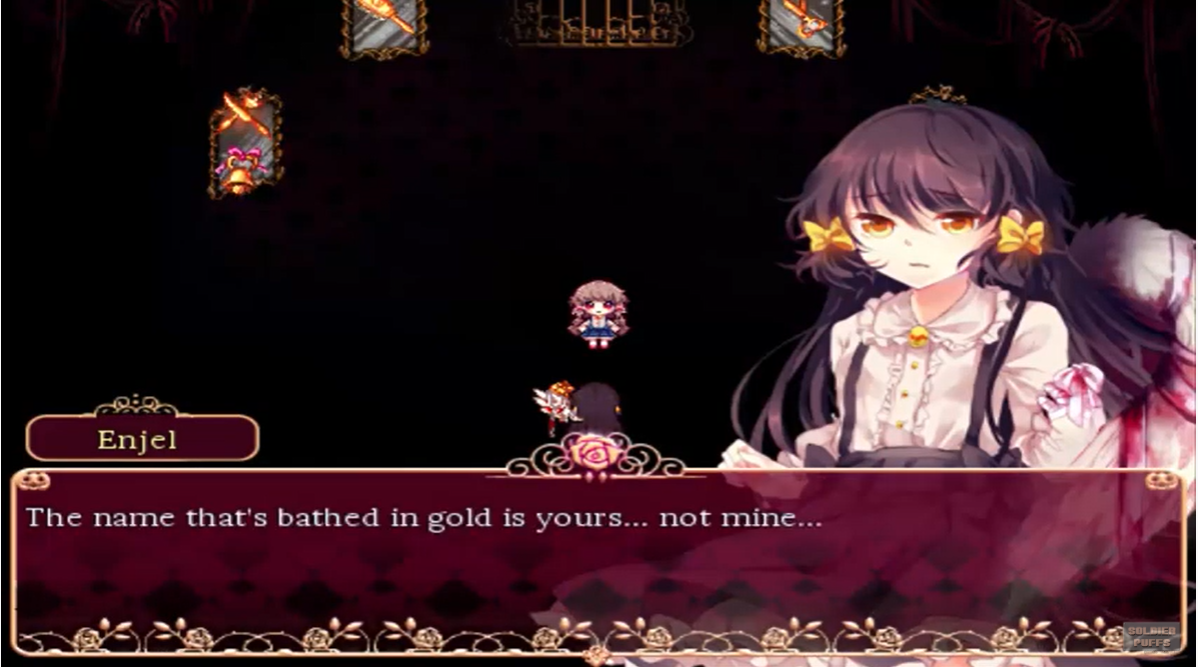
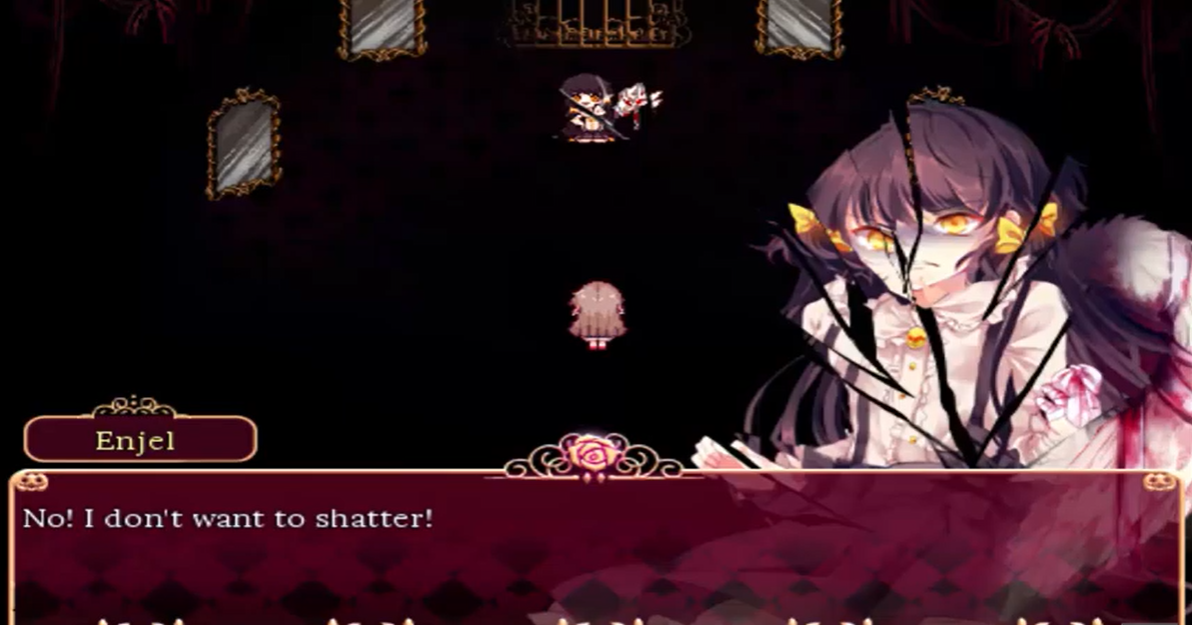
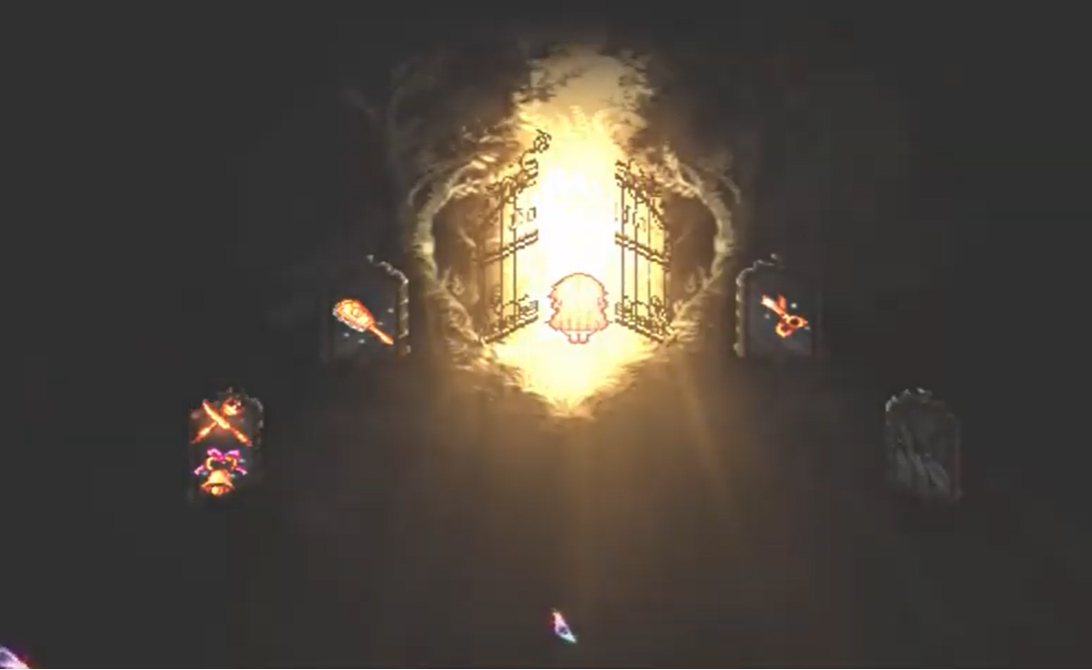
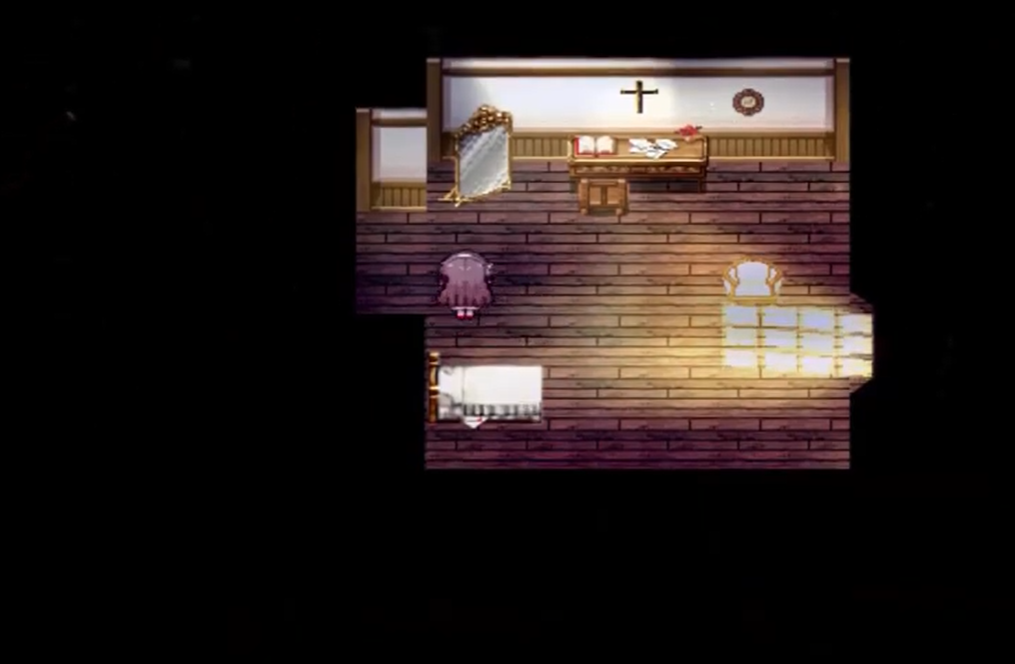
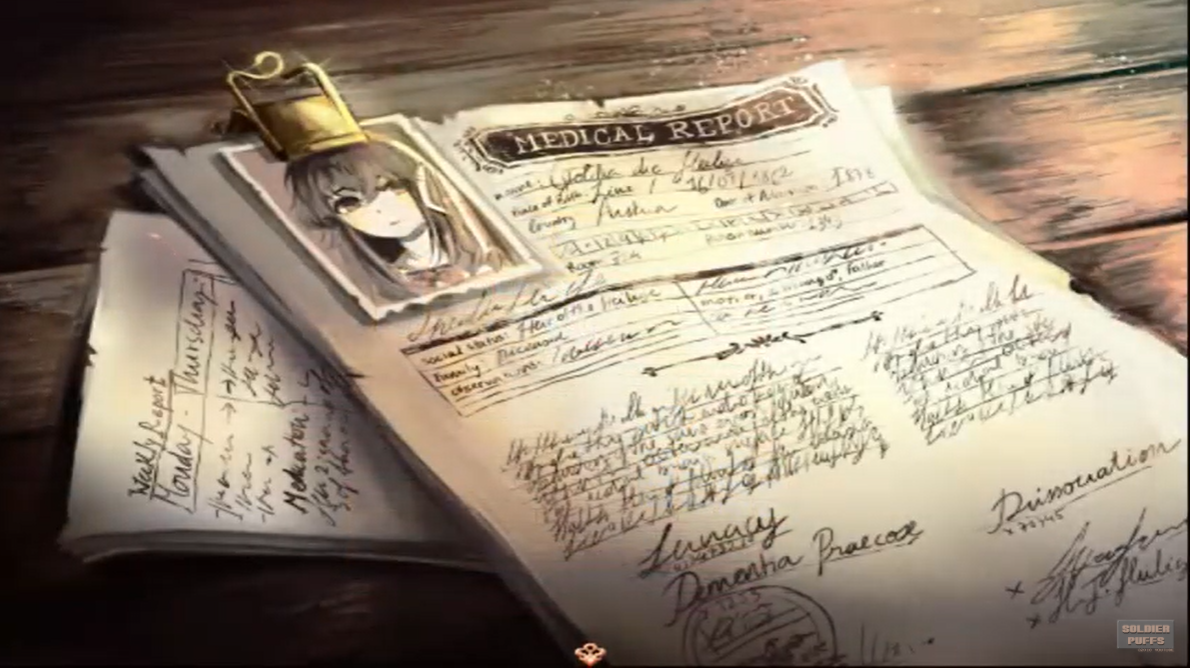

WOOSH, and like this the adventure is over: we defeated the artificial personality and Goldiancina woke up from a coma. We went around these few plot points for seven whole hours.
Here, this was the plot (we have excluded for the moment the other possible endings to try to make a summary as linear as possible). Did we miss something? Probably yes, but the point is that these are minor elements compared to what should be “the main plot”.
Can I say something? Is it normal that Cloé’s Requiem was much clearer in terms of issues for me?


CLOE’S REQUIEM. CLEAR, CLOE’S REQUIEM : two text boxes and summed up the main problem for you, let’s be aware .
-And from here, Elerantula at your service!
To deepen the theme of coherence in Goldia’s behavior and better explain why Pocket Mirror’s narrative structure does not work, let’s try to take a break, breathe a moment and expand.
Let’s start with the discussion of DID, Dissociative Identity Disorder, which we had already had the opportunity to deal with in Cloé’s Requiem.
In summary: Enjel is an intruder element in Goldia’s head, created by the demon to “take control” of her head / soul, so that she can control her as it was done with his brother (so it seems).
… And it was created to exploit the dissociation that Goldia made with her other personalities who wanted to take control of the brain through the mirror.
So what we should try to extrapolate from the plot is the battle for the conquest of one’s brain for a demon, and to do this it was necessary to face a path of cure from one’s disease.
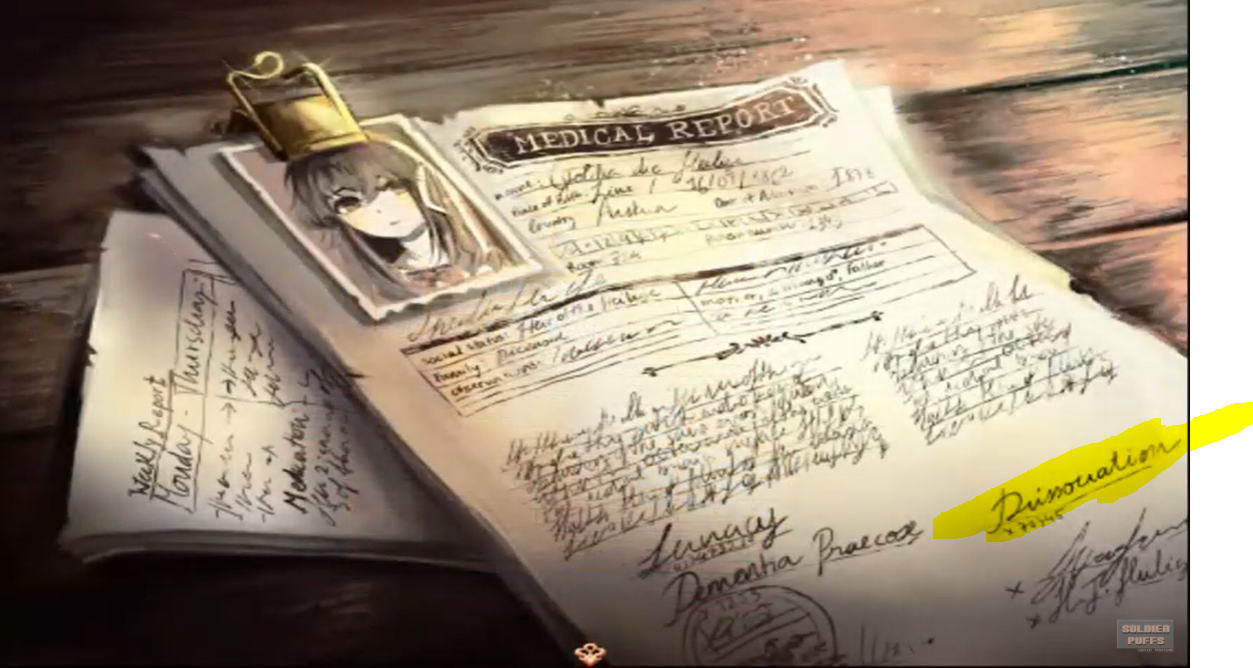
“Dissociation”
Okay, so, let’s start by talking about this “dissociation” …

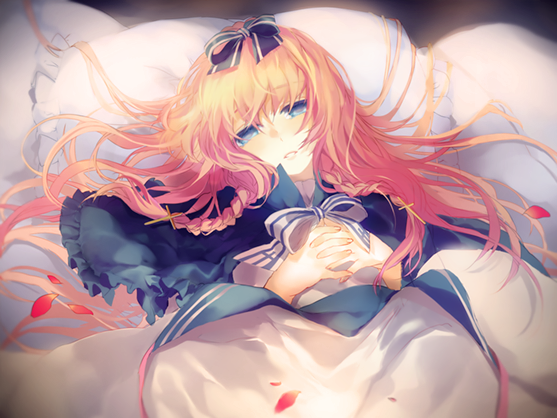
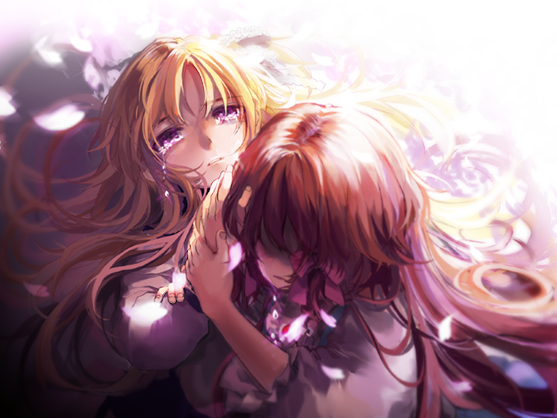



Guys, I didn’t think of returning to this disease from the appendix on the characters of Cloé’s Requiem.
Why do these girls “fall asleep” or even die, as if to give the idea that they will never come back?
From what I know, one path for dealing with a case of DID is to make all the so-called personalities live in a peaceful way within the same so-called “system” , that is the person who originally had the body (before traumatic experiences or, as the case may be, whatever has favored the development of the disease). In short, it is a path of pacification between personalities to ensure that they cannot harm others. In short, to see these girls die … It makes us misinterpret the treatment of the disease.
Furthermore, the discourse of “taking control” on which Lisette goes so much does not make the slightest sense, if we really talk about a case of DID, because who has this disease must be treated professionally precisely because, after a phase of mental dissociation, other personalities can take control suddenly, without warning . There is no hierarchy, there is no philosophy of “taking control” as one usurps a throne. This is exactly the thing that can make the life of an untreated patient very difficult.
Now I’ll show you a nice quote from a symptom of DID, with a maiden that we have already had the opportunity to study:

What she calls a “curse” appears suddenly, without her remembering any conflict . There are no phrases like “Oh, she’s taken over!” or similar. She simply does not remember a few days, because (also being Cloé untreated, poor thing) the so-called curse appeared abruptly, “without passing ‘go!'” we say in Monopoly.



(We bring you these images again to make you notice how disturbing it is to see always the same person on the screen, which in this game instead we have never seen)
It just doesn’t work the way it is described in Pocket Mirror , it’s not that simple: it’s not like these other people never show up again after a treatment path that is also so half improvised! The DID does not cure itself in a so complete way!
Let us all remember: Cloé had to die in order not to suffer anymore.

“But there is the supernatural factor, Cloé suffered alone, Goldia had the opportunity to confront her personalities thanks to the … Mind palace created by the demon!”
(Yes, I allow myself to reference Sherlock)
All right. If you wanted to show how the intrusion of a demon allowed Goldia to face herself in such a direct way…There had to be more contrast with the real world, in which Goldia was dealing with a real disease, and her path in the… Mind palace to finally get cured.
But the fact that for the sake of classic horror all girls actually have a side “with glowing red eyes” makes it all the more confusing!
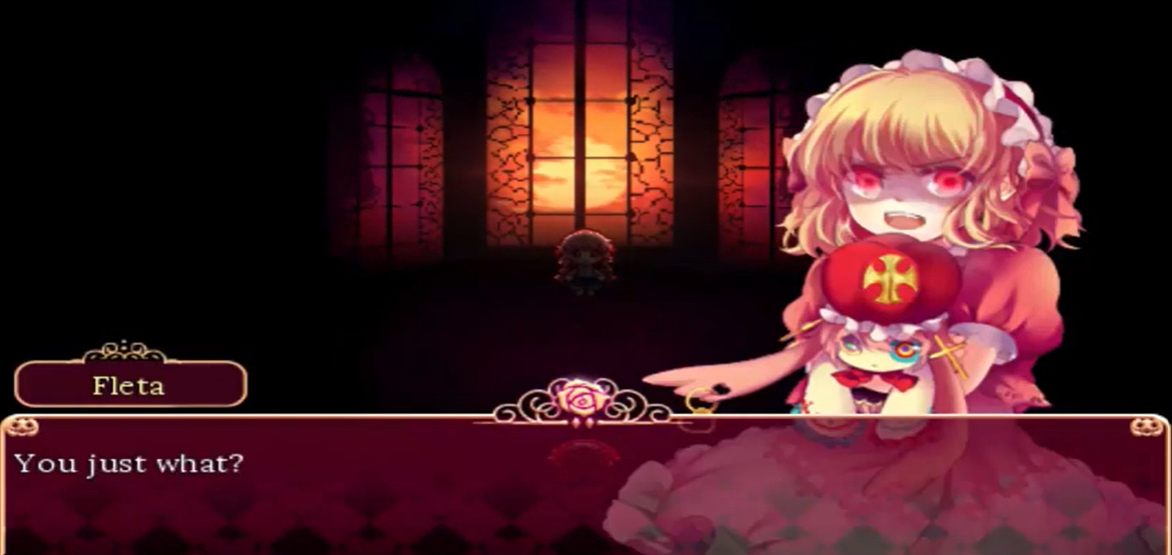

They are all possibly dangerous personalities then !? Wasn’t it just Lisette the unstable one?!
So the game itself doesn’t help, if Astralshift wanted to go in this direction! We never know how disturbed Goldia really is and how much the demon in her head is doing, except Enjel.
And no, if Goldia is a sick girl, I don’t think every bad thing that happens in her head is the demon’s fault.
So, first of all, as a “lesser sin”, we would say that the disease has been treated roughly. But what we are left with is a mental journey anyway; in fact, you might find that disease or not-disease we cannot expect to see some sort of clarity of exposition of events if we are in a person’s head . In fact, what Pocket Mirror tells us is this: “You are in Goldia’s head, DUH.”
Very interesting. So we are dealing directly with the functioning of a “system”.
But here we return to the element of coherence that we had anticipated before.
Why are we talking about coherence of behavior? Simply because we do not know the so-called “true Goldia”, not even in the most intimate or internal moments in her personality.
I’ll copy-paste this whole part from my notes … Very brutal, don’t take them as totally lucid thoughts as a way of speaking, but I think they are more meaningful than any formalization I can do by writing one day after.
…We don’t know SHIT about this system’s “original personality”. We are in her head, but she is passive for EVERYTHING, as if she was in a goddamn EXTERNAL environment , when that is HER HEAD, which should be conditioned by her mental processes.
BUT THIS GIRL DOESN’T THINK, SHE HAS NO MENTAL PROCESSES.
What happens is not dictated by her thoughts, by the subconscious, by NOTHING, because they are magical fucking random environments, which have no connection with a possible reality in which she lived, so it is all very alienating and NOT CREDIBLE: if a personality “dies” in the scene we see “the symboooll” but if we we pay more attention we can say:
“Hey but in Goldia’s head this DOESN’T MAKE SENSE”
That is, it is all so external that if a person gets a fever it is not because, what do I know, Goldia wants to suppress a certain part of herself as much as possible … No, it is because her personality had it for a cold wind or cold weather.
Okay, okay, let’s explain this seemingly idiotic example by getting a good dose of sedative, the one we use for elephants.
By that half-delusional reasoning I meant this: yes, we always take the example of the so-called “cold wind” that gives one of the personalities a fever.
We players / spectators must not consider that one and only as a “scene that is superficially useless but that hides a very deep message that I cannot understand for now, because it takes a second run”. Absolutely not , I venture to say that by doing so a developer does not respect the player.
Simply, if something happens, it is because it must be functional to the narrative.
In a lot of works, of course, you want to give a certain message with scenes, but you have to have a context, you have to have a base , you have to make sense of these scenes.

Returns once again this paragraph which we have always told you about in the course of many other articles.
First of all, think about the narrative structure on the surface, how compelling but above all how logical it is.
Here, to present this problem have you noticed that I have not made examples of particular scenes?
It is because unfortunately, if we want to exaggerate, this big mistake spreads throughout the entire Pocket Mirror! I am not an expert, but as a player I had a bad experience, that is, the one for which I felt I was not moving forward and therefore wasting time!
And the worst part is that all these errors, especially the correlation between events and Goldia’s behavior, have been masked as “unconventional storytelling”.
…And here we begin to deal with a burning issue, but to do so we will begin with an example.
The name of the girl we command throughout the game, Goldia.
This problem to be solved is presented to us, like many classic Horror RPGs, from the first minutes of the game. So we have to “find out the name of this girl”. But why do we have to? Shakespeare said that “a rose by any other name would smell as sweet” …
Okay, no more chatter. I’ll help you for a moment. In fictional works, “discovering the name” is to actually discover a real identity: a particular past to which the name / surname is linked , or of which noble you are the lost daughter.
But the name “Goldia” is not connected to anything.
Don’t get me started on the nobility of mind: so was good and good she remained, that she has acquired the awareness does not change anything from the beginning to the end of the game . This here is not presented to us as a different character from how she appears, not even through others who tell her, so that we can (if we are smart) already make connections between this elusive “Goldia” and our protagonist. Showing us other girls who are supposed to represent her doesn’t really matter nothing if we don’t find confirmation of this through her behaviors.
A good example is not difficult to find, but since with my sister we are recently reading Les Miserables, the classic by Victor Hugo-
Okay guys, I’ll let you sing: Do you hear the people sing? Sing the song of angry men … Okay, let’s finish this little theater.
And let’s take Jean Valjean .
In the book, to hide his identity, after a series of events he calls himself Pére Madeleine: this Madeleine guy is described as a good man, who gives everything to everyone, in general a saint. Quite the opposite of what we saw with Jean Valjean, presented instead as a dangerous ex-convict who in the last chapter in which he appears with this name is desperate because he has understood his condition as a “miserable”.
To put it down more generally then, in the novel we first met Jean Valjean for quite some time when he was a convict … 
… But then we have people who describe Pére Madeleine. Those who know the story already know that Valjean changes his life … But according to the functioning of the work, which in my opinion has originated what is now a stereotype, the one of “making a character change life in such a radical way” …

(Personally, I really don’t like the 2012 musical adaptation, but it’s to make you familiar with who we are talking about)
Here, the “stereotype” says that we should be surprised that Madeleine is actually Valjean … But because there is a whole discourse on identity in every point of view of him that he carries with him!
Who is Goldia?

And the girl we command throughout the game even before we know the name, who is she?

…If not the exact same person!
And so…


“Ok, she’s called Goldia, it’s written on the gate”
…
“Hi Goldia, I’m Jared, I’m 19-”
This small example will actually serve us to talk about another important theme, which is the presence of symbols throughout the story. As you may have seen: this game can’t be symbolic, because it doesn’t even carry a basic theme .
-Okay Ele, from here I return, PaoGun. Let’s calmly return the reader to our premises.
Let’s say that I choose a key for reading and I can give a meaning to all the narrative arcs: the maturation of Goldia, as we said.
The world of Egliette and Fleta is the world of games , where as a child she felt like a princess; the world where Harpae lives , in a mainly closed place that goes from underground in the attics, represents the repressive and hypocritical society of the time (especially in the puzzle phase with clothes) while the painter’s room, the one where school problems can be solved, were the activities that Harpae carried out so they were intended for Goldia’s education in good society, and to top it off the “world” of Lisette is in is … Well, it says “Hell” at one point. I suppose it is Goldia’s subconscious that ended up in Satan’s hands then: I deduce, therefore, that it is simply a nightmare considering the rhythm of the scene. Enjel’s arc doesn’t count because she has a subplot of her own.
But, if we consider that in the specialized critique of works of fiction people always try to correlate all the elements in order to find a theme that connects them , because attitudes and Goldia’s behaviors seem more relevant to an external adventure? As if it were a horizontal narrative line (events) instead of vertical (character actions) ?
Goldia is not nostalgic for the world of games, she does not frown at the hypocrisy of the dressed-up guests, she never screams and is not terrified of the nightmare she lives with Lisette.
This inconsistency cancels any type of theme if we start from the simple concept, as we said before, that we are in her head.
On a theme that does not exist, what symbols should be included? These only turn out to be just a weird jumble of ideas.
Having given you these examples we can begin to better understand what we meant when we talked about the conflict between text and paratext. That is: if you wanted to make a game that is only symbolic and in some way destined to narrow niches of the public first of all you would not put it in such a linear story and you don’t promote it as a sort of “event game”, because that is usually an operation that is done with “blockbuster titles” , you know, of titles that have for real the goal of speaking to everyone and therefore the blatant approach is a hundredfold more justified.
This is why I take this opportunity to make this little digression: however “cheesy” the Mad Father cutscenes may be, or however “trashy” the characters of Misao may be, at least sen is an author who in our opinion knows what it means doing entertainment first of all, we like them a lot in their pragmatism, and this was a concept I had already talked about in the Cloé’s Requiem article. Entertainment is something that comes before symbolism even in a great profound work: entertainment really means knowing how to speak to more audiences and making them PARTICIPATES of a “unique” experience, unique in the sense “equal = understandable for all” .
And so…
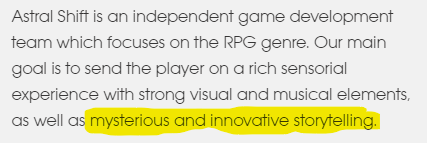
![]()
Oh yes? Are you sure? Damn, we had the new Tarantinos in our little current and we didn’t know that.
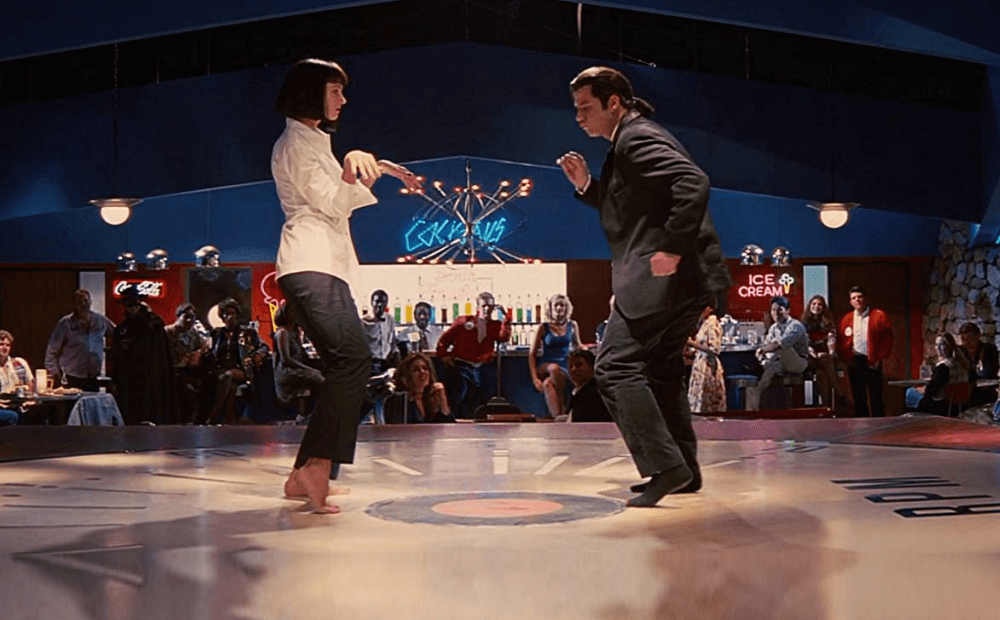
Now, assuming that the “storytelling revolution” in cinema is a somewhat difficult topic to talk about because “storytelling” is an element of films that changed to depending on the historical context and function of the film; so… Well, I don’t think we ever talked about storytelling as a “revolutionary feature”, it was more something that belonged to Hollywood. However, the reason why I’m quoting Tarantino is Pulp Fiction: I can say that there is an unconventional narrative because the events that led to the development of a story were told in a non-linear and continuously fragmented way.
Storytelling is done with time, with a timeline at your fingertips, okay? Not with spaces . Yes, space is a central element because it contributes to how certain information can be grasped, but it is mainly with the distribution of information over time that a story is built . A story is a consequence of events, isn’t it?
I would like to take a moment to talk about the structure in the most general terms: I now understand it as the intentions of the game and the genre in which to define it.
We take Yume Nikki, we take Ao Oni and we take Mad Father. Okay, are we there?
Yume Nikki: I know that I have to explore environments to have an alienating and hallucinogenic experience: my experience depends on me.
Ao Oni: I have to solve puzzles to finish the game and in the meantime escape from the blue demon: I expect jumpscare and chases.
Mad Father: a very long introductory cutscene makes us understand that our goal will be to satisfy Aya’s wishes and help her free her father from zombies. We will go past obstacles, we will explore the house and in the meantime we know that we will have to do all this empathize fully with another character .
Am I too deterministic? I do not think so.
Look, I want to give you an example of a true Italian: do you know La Dolce Vita? For cinema fans not knowing it is practically a heresy.
Here, even there in the fragmentary nature of the structure (because; hey, an art film knows how to talk to its audience) we talked of a character whose actions over time were consistent with his characterization and path of inner corruption.
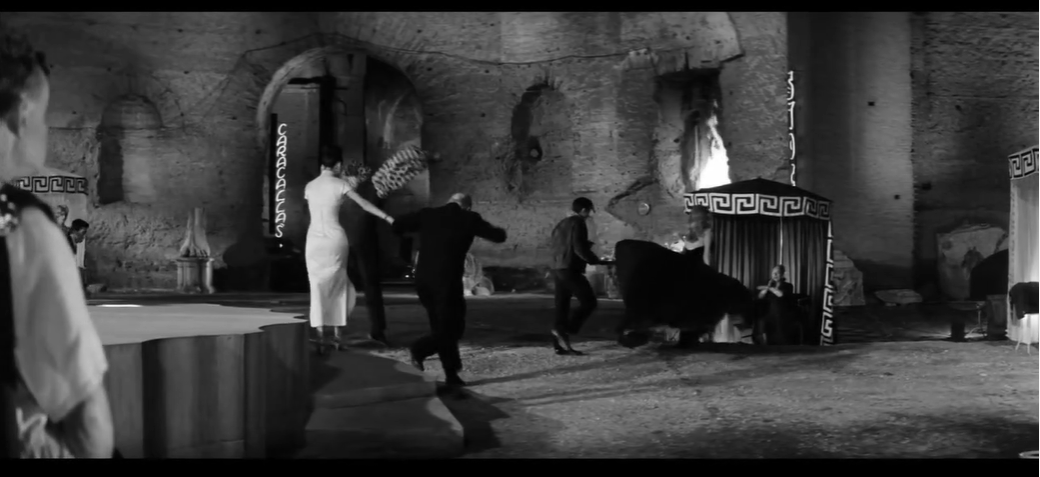
We have the party where Marcello goes after the VIP, Sylvia.
“Marcello, come here!”. To make you understand who we are talking about.
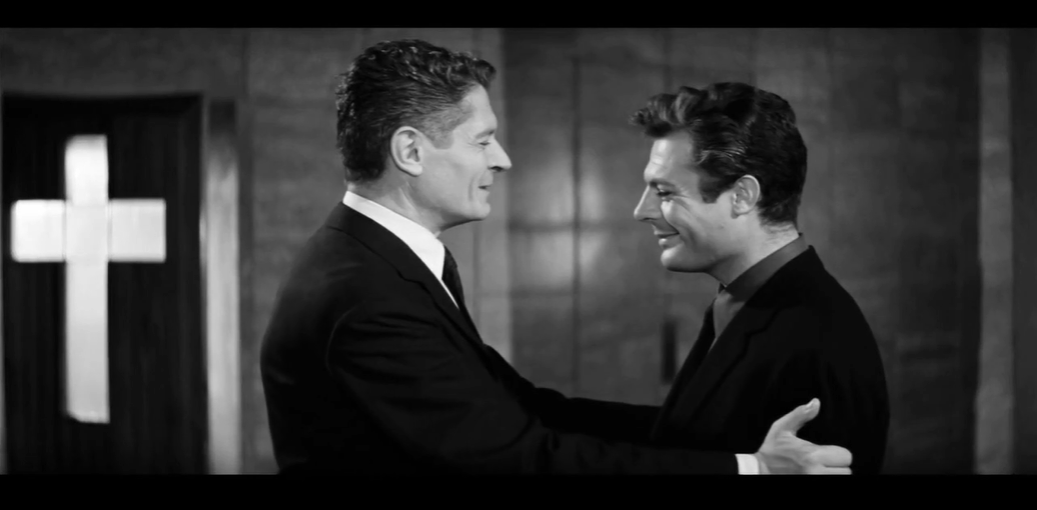
We have the church as an immediate contrast in which he meets in the church his friend, writer, father of a family, the most holy Steiner-With a crucifix on the side of the frame that highlights the nature of him as a saint.
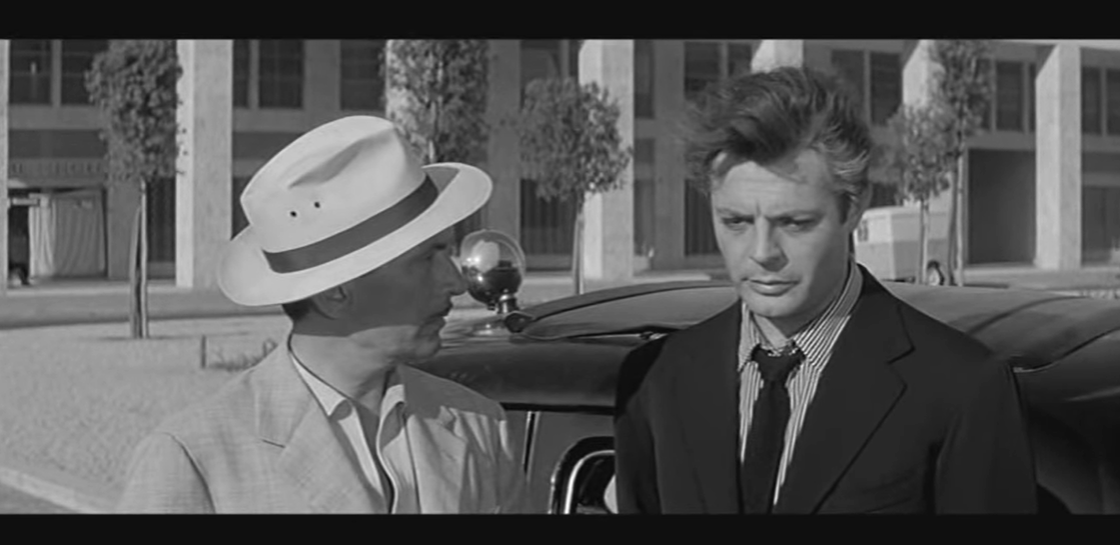
The friend commits suicide.
“Maybe he was afraid of himself” says Marcello, before going to another party.
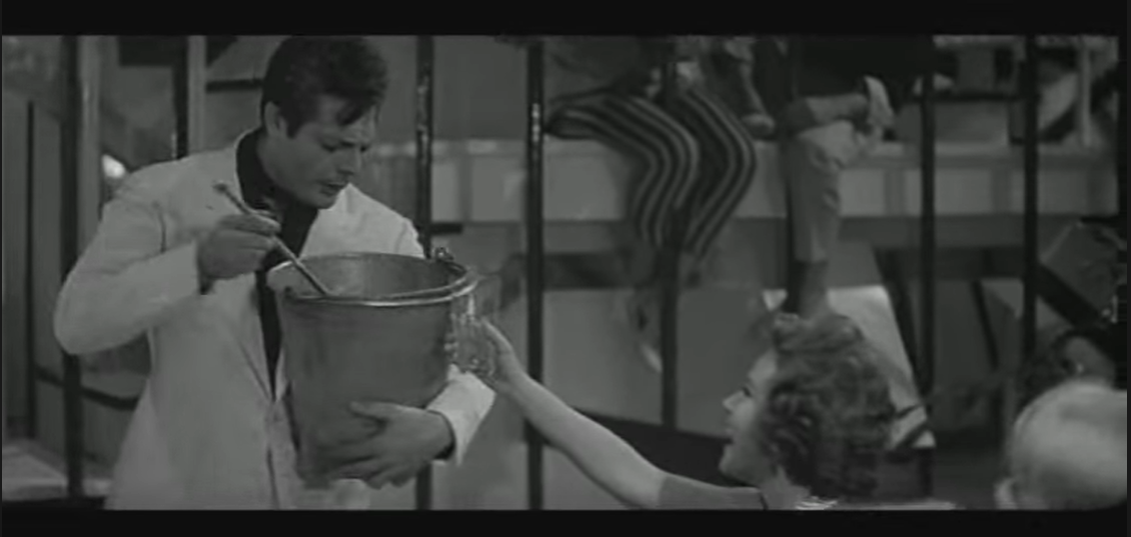
Final party.
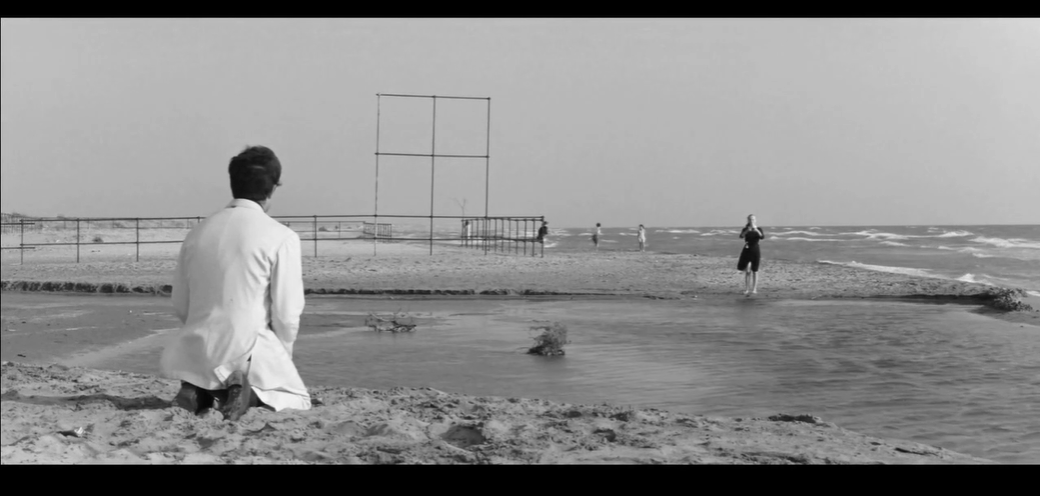
Poor Marcellazzo is no longer able to hear the voice of the little girl he had met at a certain point in the film, the voice of innocence.
And here is La Dolce Vita explained. What a good critic I am, huh? Yeah, this is why I don’t call myself a film critic.
I wanted to bring you this example because this film in the common imagination is considered one of the forms of the most complete expression of individuality . Something relegated to the idea that a few true lovers of the genre and “chosen few” can understand , with all the symbols within it . How the movie deprives its understanding to an extended audience? By changing the direction, drying particular moments on the stage, avoiding telling a linear story with an open conflict that needs to be resolved because of course, an author’s work is not a Hollywood title; it has to change the way something is communicated to you .
But can you see that here too the coherence between the various elements, the red thread, the structure that gives life to the work is not lacking?
So this is mainly the reason why I believe that arguments like “a game that is to be rediscovered in multiple plays” in this area really doesn’t make sense. The replay value is an enrichment in such a product: you should discover information that you did not know, not try to understand something that was not understood well from the beginning ; nor should one try to understand only at a later time where the work would end up and with what kind of language .
So, let’s answer the question together: why did Pocket Mirror have every intention of telling a story without having a clue how to do it?
Because for information that came to us only at the end of the game what we have lived all the time is a story that took place in Goldia’s head and we faced some kind of inner journey to make her mature, for recurrent background; but also for the fact that Goldia had an identity to discover and this detail we knew from the beginning of the game helps to fuel expectations for a narrative development . The point is that there is not even a silent protagonist in the game, or a particular relationship that is created with the player as in Hello Charlotte, that should give us some idea that this was meant to be an experimental title. NO, this is the personal story of a girl who must discover herself told in a linear way, through narrative arcs …
… When in fact there is no development that is clear . We should continue playing this title as if we were on a sightseeing trip.
Because, I repeat, Ele got very frustrated playing, but I re-viewed the videos to look for screenshots for the article liked it all in all . If we take off the filler elements some of the scenes after all are beautiful and evocative, I talked about it in the Trump Card of the new expectations that have risen for those who try this title and it is a very valid ground of comparison for the creators of tomorrow.
BUT the game had to be clearer with itself.
… Let’s take another example of decontextualized symbolism through which they tried to cover the absence of plot development.
Let’s take Lisette’s crown of thorns, which was inserted instead of explaining to you concretely what she suffered : it seems to me a bit exaggerated as a symbol for a personality that is all in all hysterical .
Not to accuse you, my girl, but you are a martyr but up to a certain point, that is, the sense of the Bible is that Jesus was a pure person who took on sins that he did not do , am I wrong?
I do not know if in these cases in bothering the Bible you will find the ridiculousness that I am finding there.
And so with the other examples we have done: Swan Lake, the work of Pëtr Il’ič Tchaikovsky, a work that spoke of something else used here to tell us that Harpae was the black swan because it was not “the real Goldia “, in the midst of many other pure white swans shown in the image … Or they meant that she got dirty because she was getting stressed and was less and less pure because of it.
You know the real story, don’t you? Odile, the evil daughter of Rothbart or the magician who transformed Odette into a swan, had managed through a spell to deceive the prince who would have believed her Odette and would have therefore declared her love for her, as a consequence Odette dies for the ache. Here instead how should we interpret it?
Or to give another example, the theme of gold and the name “dipped in gold” which indicates nobility of soul, the nobility of the “original identity” treated as some sort of discovery for a girl who in the end remains the same before and after having discovered it …
Yes, yes! All right! The demon had stolen her name because of the pact but then why doesn’t this ever intervene? I repeat: what kind of demon are you? Ellen’s black cat was more efficient than you at deceptions, he kept a closer eye on the witch than you did on your victims, damn!
This is why the question that some may ask: Is this an overrated game? No , or we won’t even have talked about it as a historical piece in Back To The Future. The merits must all be recognized. But I repeat these are things that should prompt greater reflection on what to call a masterpiece or not: in my opinion a masterpiece does not exclude its audience from its understanding. A pact is always established between reader and author, spectator and authors, players and programmers.
Caroll’s Alice in Wonderland also uses the white rabbit trick to lead you down the hole to indicate that a story is starting here . Even in Yume Nikki we see that Madotsuki goes to sleep before we are transported to her hallucinogenic world!
For example, why didn’t you show us from the start of the game that Goldia just went into a coma? Maybe with hints that she wasn’t breathing well, that she had nightmares, I don’t know maybe a close relative worried about her.
And so we know that this girl fell asleep in an asylum room, first of all, and that we entered her head.

Come on, how distressing this scene would have been if we had known everything from the start? I would have had the chills personally, assuming the possibility that she would never wake up. I took this as a reference because it’s pretty much the same asylum room from the finale, we’ve seen it together before.
… Maybe, why not, the adventure we lived took place in the course of one night. A troubled night in an asylum.
Anyway, nothing, now I’m dreaming too much.
In conclusion, this was our explanation of Pocket Mirror’s deadly sin , “the big lie”: adopting an identity that did not belong to it.
And this has had consequences , because every action corresponds to a reaction, because if there was someone who praised the lived experience totally ignoring the narrative premises and trying to forgetting that she was going through a story; there were also people who, even from the very beginning of the game’s production history, were frustrated by the lack of clarity of this project .
(Ah, speaking of coherence and consistency in intent, I honestly wonder how they will make the fairytale universe of Little Goodie Two Shoes coexist with the coexistence of elements such as mental hospitals and medical realities of a certain historical period that were in Pocket Mirror) .
To which was added the very powerful Trump Card given by the desire for renewal ; in short, what we talked about before.
Associating such a noble intention with such a huge mistake makes the consequences even more serious, for a progenitor of this type, in defining the new “market drivers” of the current Horror RPG; that from pushing to renew oneself becomes a: “let’s look for artists, who cares if you don’t understand anything”, or said in a more formal way we are less and less concerned about understanding what kind of skeleton we want to assign to our products making these much more confusing or weak. Or… Jumble. In any case, the important thing is to collect as many audiences as possible (isn’t it true, Omocat? -Oh, you see that we will have our reasons for talking about her video game as well). The essentials are no longer represented by phrases like: I want to talk to this public . The important thing becomes this: “I want to make myself known to everyone ; and to involve as many people as possible I have to surprise them “ (I add: I have to surprise them since I don’t know other ways to make my title more captivating ).
Let’s say that here we can officially say that the generation of the “story-telling focus” has begun; or wanting to create narrative structures even forcibly if they work to attract audiences. This is the downside so we will now talk about the various minor flaws.
Did they damage the game in any way? Absolutely not.
The experience you live with this title is in itself very enjoyable and the music does its job well . This series of points that we will list are to be considered more as a list of reproaches that we place at AstralShift with the harsh severity that is made towards a model student who still has, in our humble opinion, so much arrogance to leave behind.
Did you want to play a game “artistic and with a rich sensory experience?” . Well, let’s look at various minor flaws that make this title light years away from the label of “excellence” that is assigned to a true work of art.
-The word to Ele.
Here, the spider explains! You have no idea of the poison he has to inject when he replayed Pocket Mirror for this article!
Yes, I have a lot of poison in my pincers and it never goes away… I’m fun at parties, I swear.
Let’s go to the beginning because, in fact, I criticize everything apparently without criteria so we don’t even start playing that I have my nonsense to say.


Apart from my personal directorial nitpick, where in my opinion the music had to stay for some time before showing … The only two dialogue boxes for which this music is in the scene, before we sink into total silence. Yes, the music that fades with an unprecedented bluntness.
Let’s see how these first premises were put down.
Writing with a black background at the beginning presenting us with a situation unknown to the player?
Oh, man! I wonder where I already saw this kind of introduction!
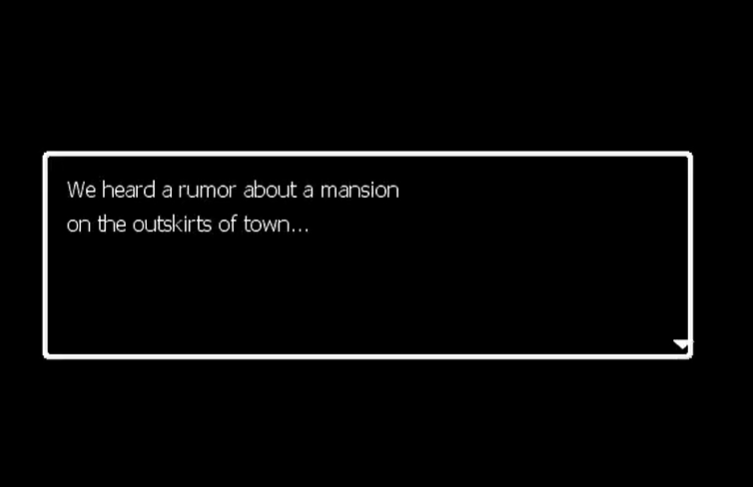

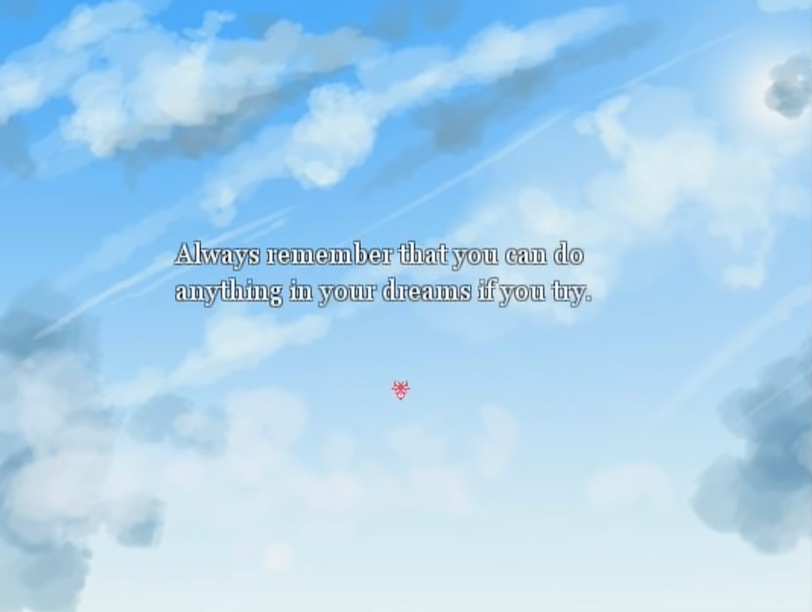
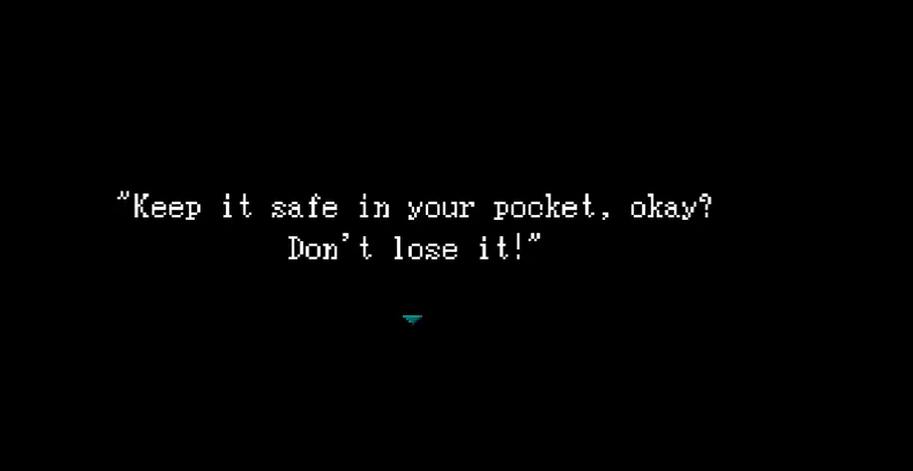
![]()
(Games pictured: Ao Oni, The Forest Of Drizzling Rain, Dreaming Mary, Ib.
And with the latter two, together with Pocket Mirror, we have 3 mothers talking to their daughters about … Things.)
… The conclusions are yours.
Guys, not to be unprofessional, it’s the only time I’ll probably use a reaction video but …
This was my reaction to replaying Pocket Mirror a week ago.
And I had this reaction not only at the beginning, but for the whole part that I re-played, especially in the field of directing . Therefore, in the context of the sensory experience that the title boasts.
Yes, I am permitting to say that for a “metaphorical” game, Pocket Mirror has an extremely average direction (except in the arc of Lisette, where it simply went for the total show because Astralshift got better at using RPG Maker, and thus leveraged its artists even more; and in the gramophone scene in the library, where simply the library atmosphere and sound made everything less dull); indeed in the early stages of the game bordering on mediocre and in certain scenes with elements that have been taken and pasted from passive audiovisual works!
Wow, I’m pretentious today. I even talk about directing, when I didn’t go to any kind of school or anything that has to do with directing!
I tell you, as a mere consumer of fictional works I can give you a fairly insignificant example in itself, given more than anything else by the lack of control on the part of the authors. It is an example that makes me understand that there is some underlying problem, especially in the criterion in which to put certain directorial “clichés”.
I will directly post videos of the single scenes with some of my notes, which will also be taken up in the writing of the article itself … But these other directing details, first of all for their quantity, will connect to the final discourse on the directed by Pocket Mirror in its entirety.
So … Here it is. It’s a very stupid example, but one that made me laugh personally.
It’s just me? Only I have noticed something strange … Especially in the rhythm of the scene?
It will be my philosophy, but when directing a scene even on RPG Maker, it’s all a matter of rhythm: if the rhythm cannot be followed, it falls in amateur.
Here the rhythm breaks, because the right timing has not been given to the sound effect, so Goldia’s potrait appears while the latter plays, when it was meant to emphasize the doll moving by itself (come on, there isn’t even a camera pan? ).
Here it is. With this inattention (which, as I said, can also be caused by simple carelessness) and, in the scenes that are not “buggy” a rather classic direction … They wanted to make “great scenes”, because this is the “great game”.
… Well, on the following topic I wanted to open a little parenthesis.
Here, this scene seemed normal to you the first time you saw it. But for The Rebirth Of Franklin Albrecht we are constantly looking for free sound effects that we can use, so we understand very well the problems in finding sound effects …
… So knowing that we too have various problems finding the right sounds etcetera: it was too much to find a BGS (Background Sounds) that had more to do with a whole environment of more or less aristocratic girls?
Come on guys, you have so many people, so many resources, you could have found something better!
Here we are. With this occasional inattention (which, as I said, can also be caused by simple carelessness) on the one hand and a rather classic direction on the other … They still wanted to make the “big game” , or concepts like that. All this also gives me the idea that not all the scenes have been treated in the same way.
Apart from the sound sector, let’s go to another problem in detail: more constant and even more serious if desired. It has to do with a directing gimmick widely used by Astralshift in general, including in the Little Goody Two Shoes trailer:
The lights that, for no reason, fade when they have to show us something.
Nice presentation of a new environment, right?
No.
Don’t look at me like that, I too had believed Astralshift at the beginning, I just said: “very anime presentation of the magical place, lol.”. But when I thought about it for five minutes, after running my brain with some healthy caffeine, I realized that something was wrong.
But where were the lights before? If Goldia fell and then she woke up and the animals were already dancing … What’s the point of giving us this kind of presentation?
TYPICALLY , in an awakening scene after a fall the environment is introduced with music , because the character has passed out, and then when she opens their eyes there is a situation that has already begun.
The situation was dominated by the direction, who did not know how the hell to introduce the atmosphere of the ballroom in a spectacular way (for some reason, because really, it was very easy to do such a scene).
Here we return to the discourse on the meaning of the scenes and all the elements you put in them.
This expedient of moving / thinning lights is used when a light is actually turned on, so that there is a “surprise” effect when something that is new is presented to the viewer …
… But a light must always come on, or the protagonist must always have a transition between dark and light that makes sense on a concrete level.
It took me so long to be a fu… Too many bad words? Are we unprofessional? All right…
So, I wanted to cross all the “t”s and I did, albeit in a short time and not as well as Astralshift could afford, with a kiind of storyboard on how the scene could be rendered.
It is not mandatory to see it, it was done in a very short time, but in the meantime I hope it gives a general idea.
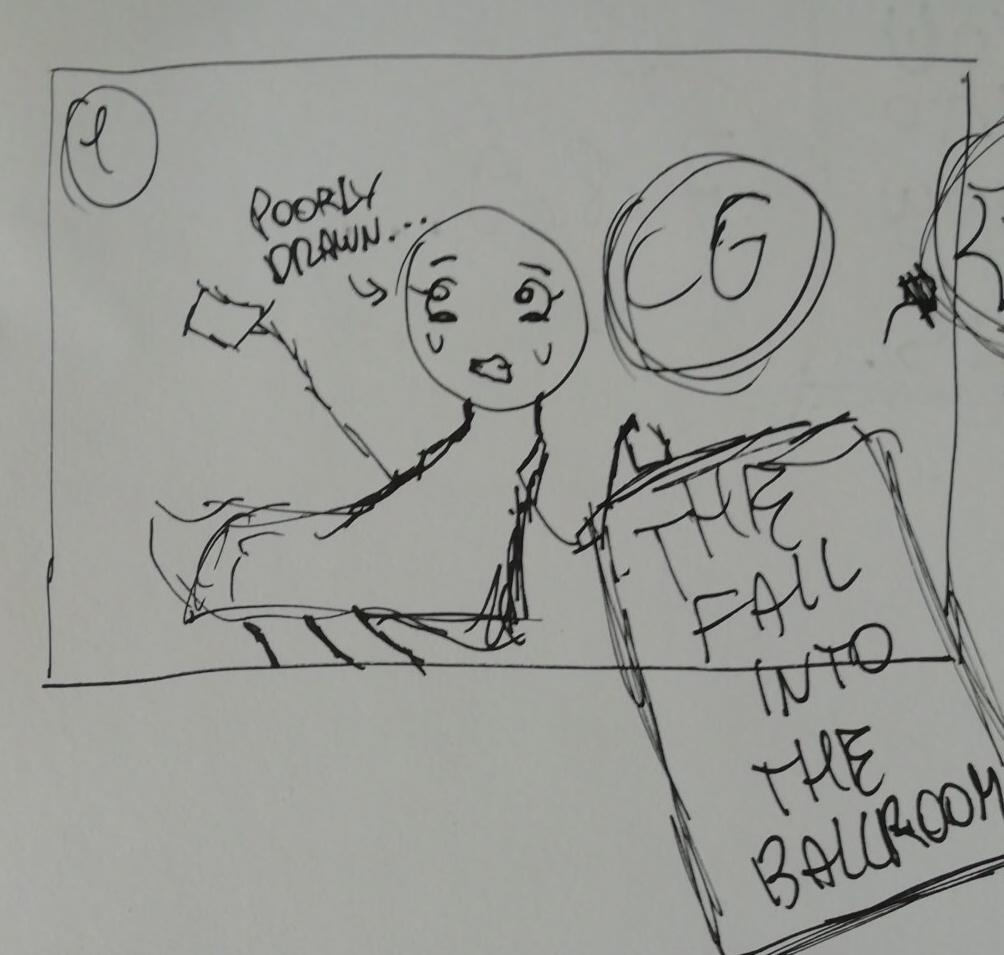
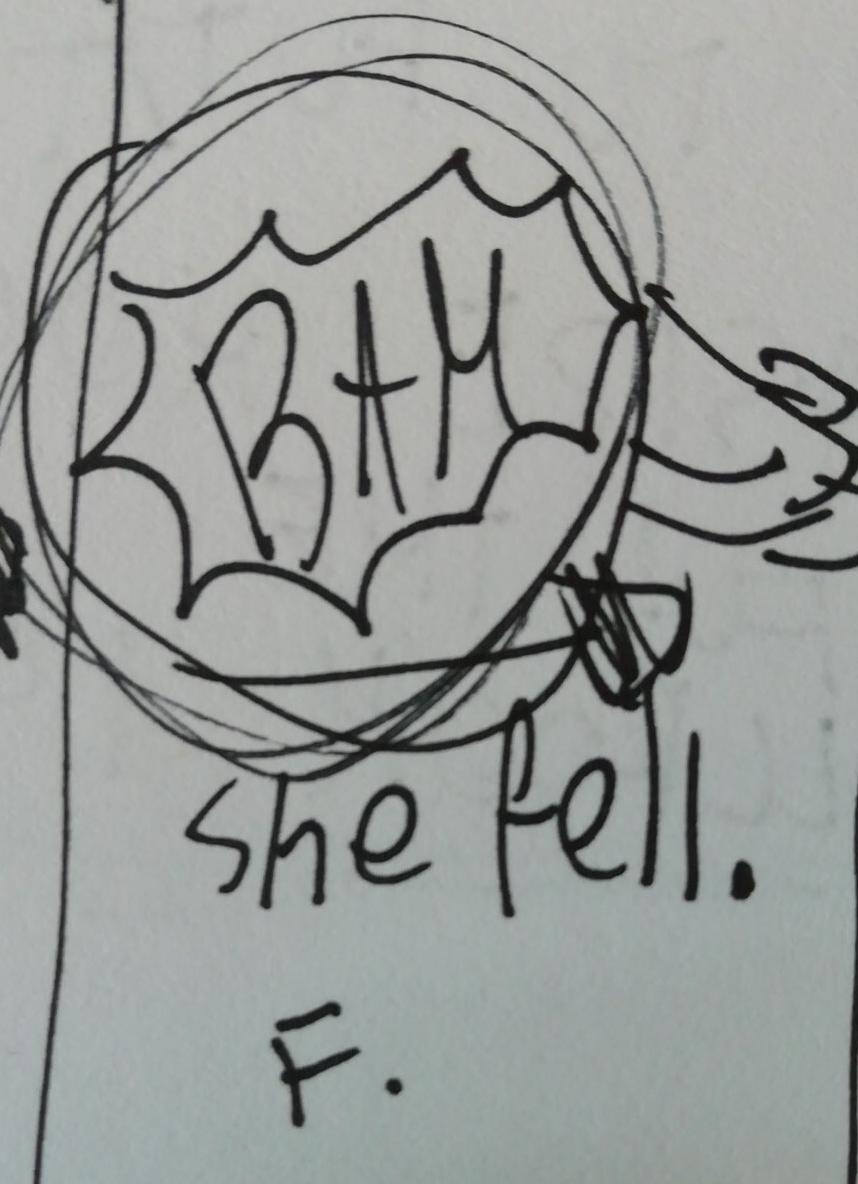
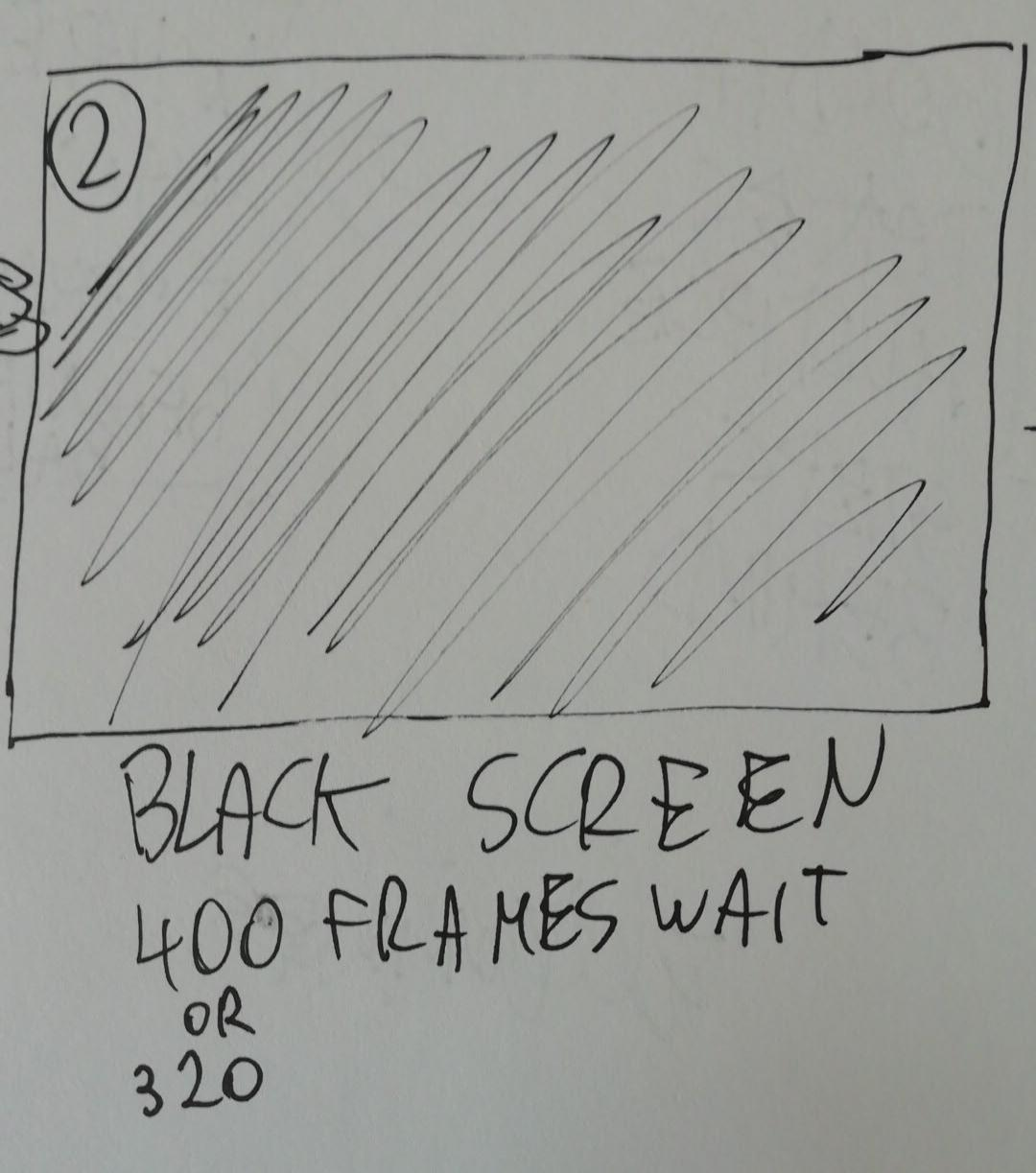
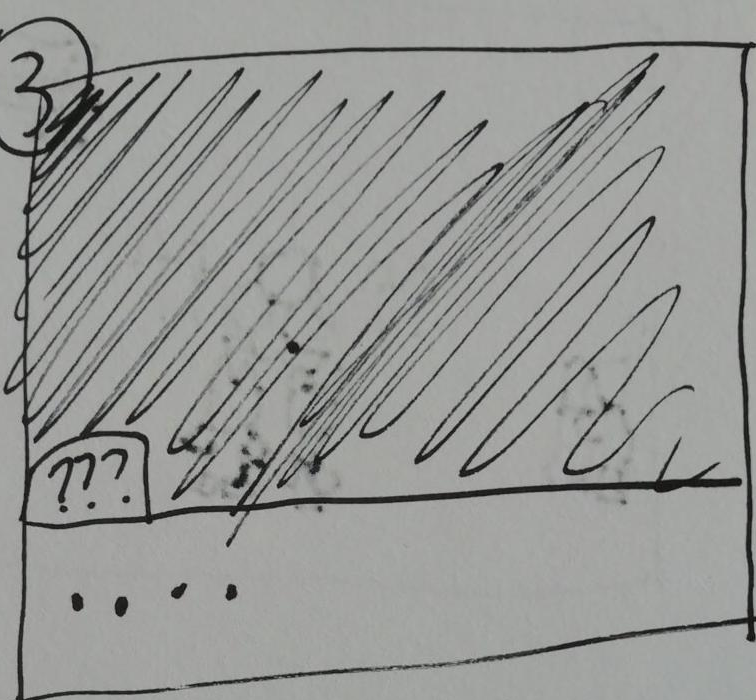
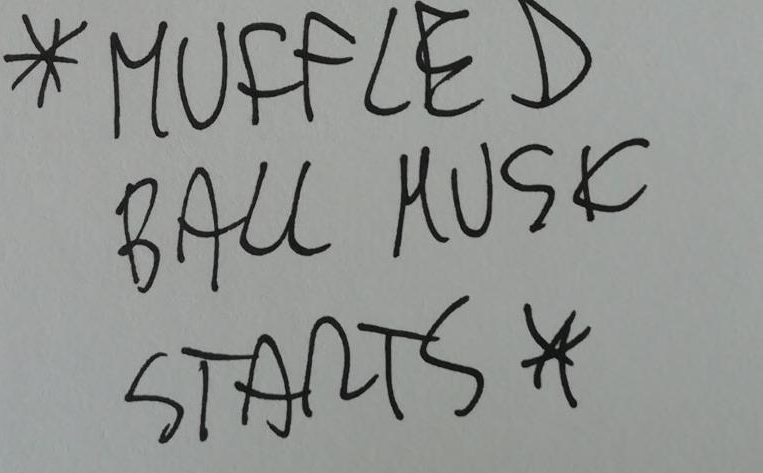
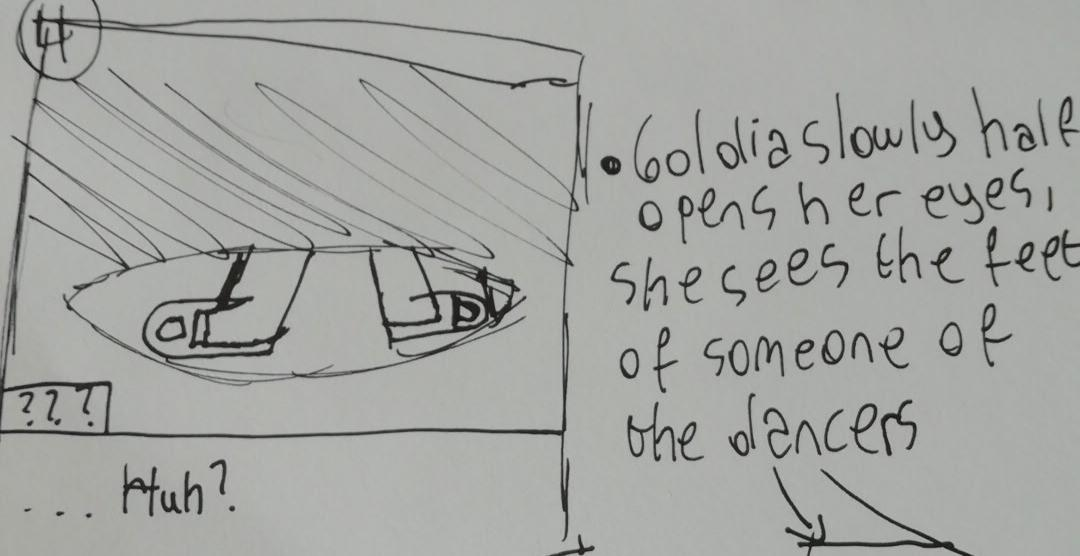

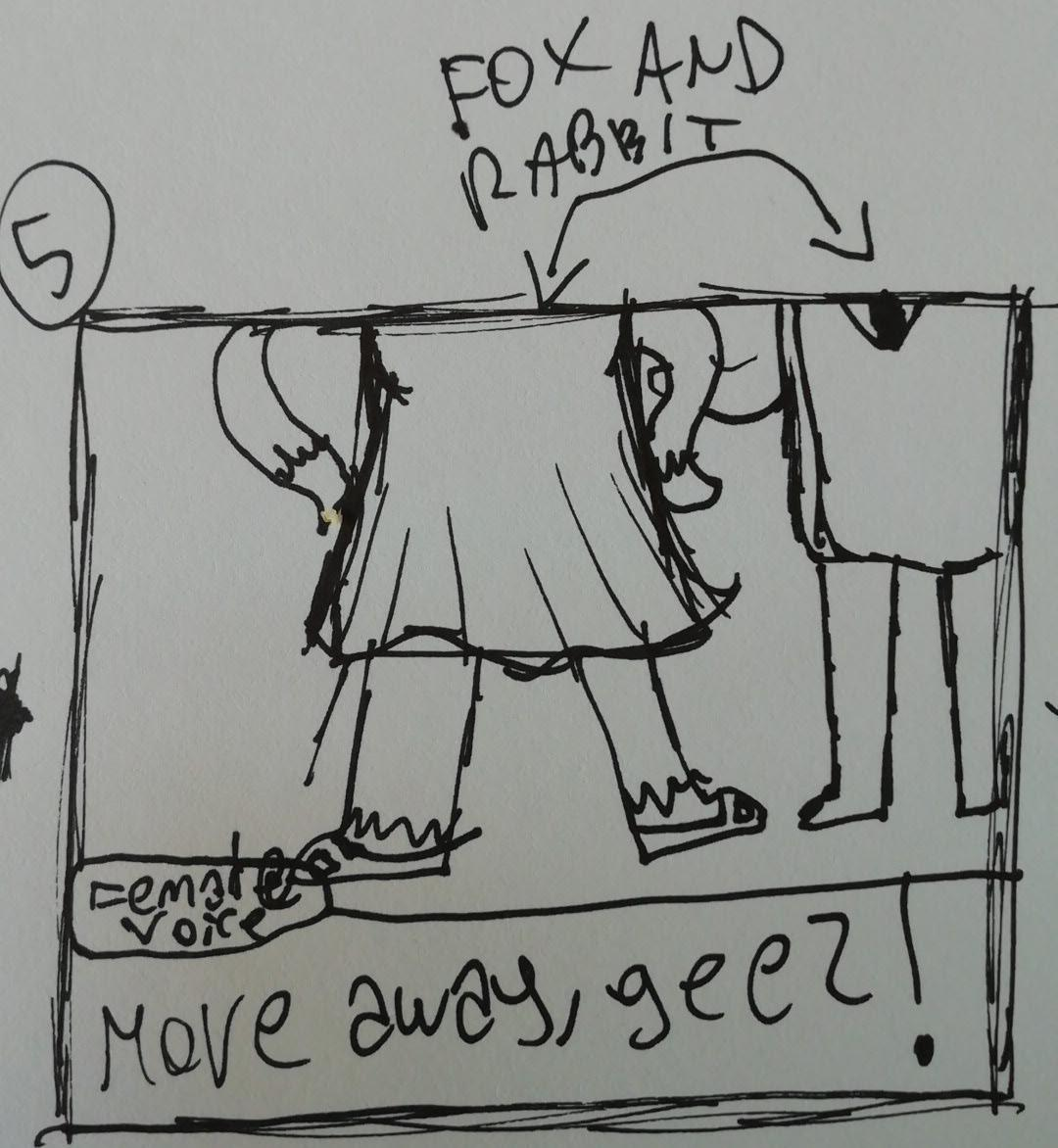
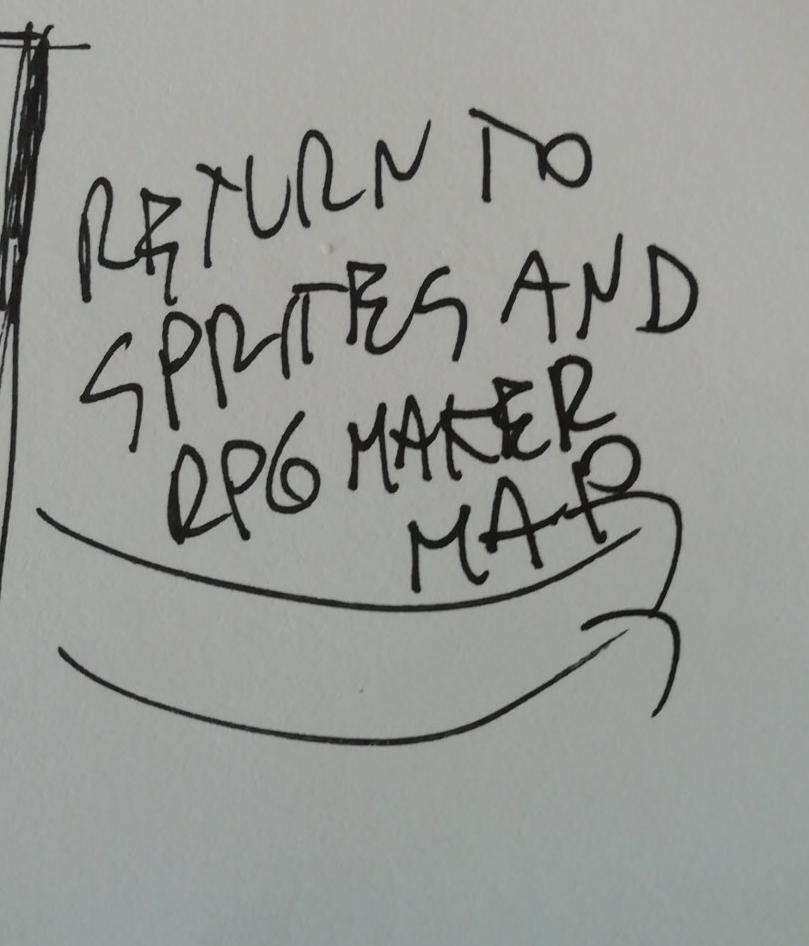
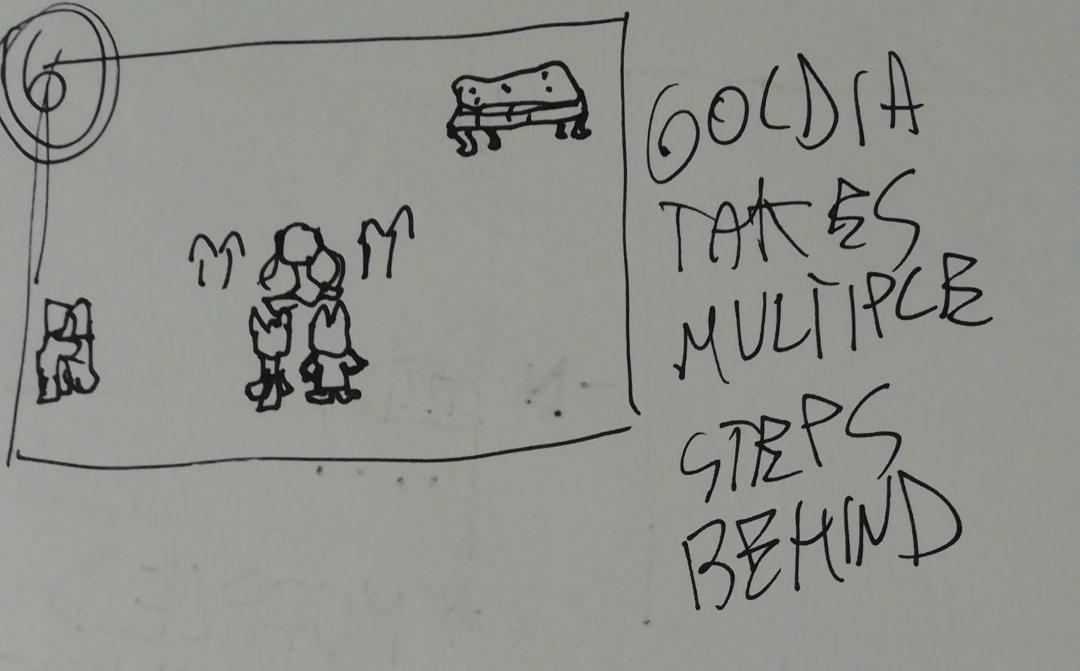
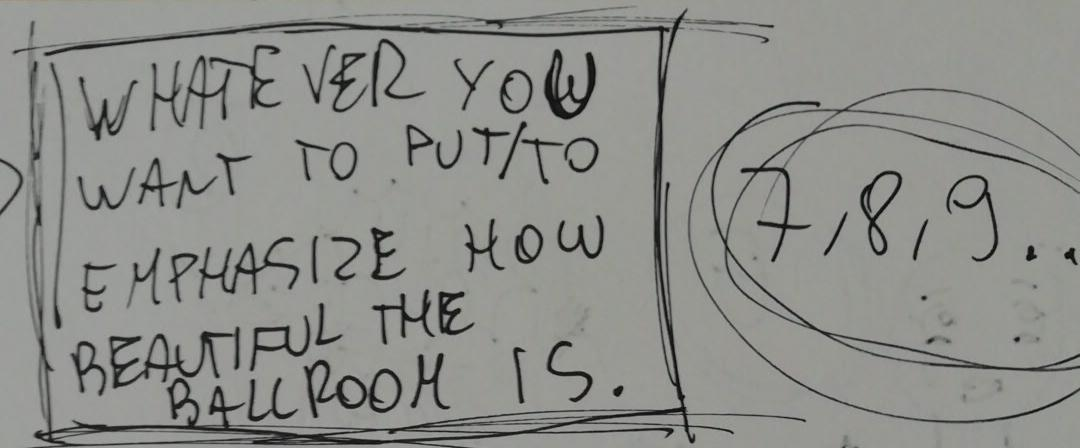
But back to us, why is this directing problem more serious? Because first of all it is not caused by distraction, there is a problem in the basic idea of how the presentation of the ballroom should be rendered …
And then because it is continually used in the game without shame and, I repeat, without any sense …
(Note: in my opinion, in some cases a simple camera-up would have been fine, as was done in the scene of Egliette’s death)
And finally, because it’s not considered a bad gimmick by the developers themselves. We see this in the Little Goody Two Shoes trailer, minute 2:34
So generally speaking, as a game it doesn’t have too unforgettable narrative scenes, if we take away the artists and the wonderful music. If we think only of the content and how it was directed, Pocket Mirror is, really, an interchangeable game with many others who want magical atmospheres and things like that.
Just saying: if Lydia, author of Aria’s Story, had had the amount of artists that Pocket Mirror had, she would have had very similar (if not identical) ideas in directing for her story.
But let’s stop pretending we’re Kubrik.
With gameplay and experience for the player… How is this game?
I won’t even waste many lines: after all, this isn’t a real review. Both are disappointing for me.
Although Pao highly praised the immersion work done by the game, for me the so-called “sensory experience” that describes Astralshift in their various bios, I didn’t feel it very much …

Since the maps we interact with have blur used many times , according to Pao, (our game’s map designer, so she already had to deal with parallax editing) hastily , and a photography with warm tones in most cases (see the splendor of the dress room in the arch of Harpae or the magical world of Enjel) which aims to be a union between Alice In Wonderland and Dreaming Mary, in an even more “magical” version … And if I can say it more trashy, in the successful attempt (because many liked them, Pao in the early development of The Rebirth Of Franklin Albrecht had the Astralshift maps as a reference) to be eye catching .
The exploration phases have atmospheres that are the same as other games : you change music, you change context and you can have, I always use this example in a very derogatory way (I do not give this title not a shred of respect for my reasons), Aria’s Story.
So as an experience, we can say that a casual gamer can be very attracted to it, one who has seen many times typical “magical” atmospheres in many different works … A little less.
The gameplay… It’s a “cutscene discovery” with puzzles decontextualized from everything else. Period. And during the cutscenes you passively undergo events as much as Goldia does. And this is not even an extra point for “identification for the player”, because we remember that we are in the head of Goldia herself.
It’s basically the Angels Of Death gameplay , which is quite criticized on Steam.
“But with Little Goody Two Shoes they have done things big, in fact in their bio Astralshift says they want to bring innovative gameplay!”
Okay, let’s review the trailer together, maybe we introduce some kind of new mechanic!

Ah-ha. Ok, typical exploration that will surely be in the forest and someone’s house to keep the plot going , “mysteries to discover”… Which is a nicer way to say once again that the plot is great, character routes that we will have with the various characters like visual novels… For some reason…? And the various endings that we bring with us from Ib which will be like a true, a bad, a good ending and maybe if the “relationships” with the other characters are developed you will have certain types of route endings…

So also combining items …
Although this thing makes me doubt, it may be ok to have some crafting : it’s the only thing that I actually don’t know exactly what it will be used for and I’m curious.
Then there are also cited “strategic choices” and once again the relationships with other characters.
And in the end…


… The trailer ends like this. With … With lights that show us these pumpkins like this, to make us have a heart attack.
… “Aridaje”, they say in Rome.
So what to say?
Um… Considering that I’m pretty sure of all my theories about the context in which all the features presented in the Little Goody Two Shoes trailer will be used…
What do you want to focus on? What mechanics do you want to innovate? To make gameplay rich, you don’t just need to put as many features as possible: it is something that many very minor indie games (some that are on rpgmaker.net or other portals) have been trying to do for years, without reaching any really satisfying result …
So, as gameplay director of team Ludi Tarantula I recognize that it is impossible to create new mechanics out of nothing . I also wander in the dark sometimes when I have to offer as much interaction as possible to the player in a very, very story-driven game. I recognize that standing up for groundbreaking gameplay is not easy at all, I have to say this by in their favor.
But in my opinion this problem can sometimes be solved by putting certain mechanics in a nice particular context , reinterpreted in a certain way just because of what they serve to the story … In general, make special very normal mechanics because they are in your project, which has a certain very strong imagery that reimagines the same functioning but in different lights.
But, perhaps it is also because it is only a trailer, I have not yet seen by Astralshift such strong contexts as to totally re-imagine the mechanics, “revolutionizing” them as they say.
To be honest, for now I have only seen many graphic improvements from Pocket Mirror: the drawing style changed, as well as the engine, therefore also a different type of perspective in terms of maps, lipsynch, frames for dialogues, totally personalized menus…
So every time I see this new project I always have one feeling:
It seems to me that no matter how much they evolve with engines, mechanics and all … Something tells me that even the prequel to Pocket Mirror will be, in the end, all entertainment for its own sake.
So, now that you have heard all this criticism of absolute graphic beauty, and beauty of the genre, you will scream …
“If you think this doesn’t make sense, then we have to be with the shotgun pointed at whatever spectacular element we see ?!”
NO.
We have repeated this many times.
In my last sentence “spectacle for its own sake”, I wanted to tell this concept, which we would also like to communicate to all the aspiring game developers out there:
The yardstick must be the criterion of choices . Because what differentiates a thing done well and done badly is that in works done well everything is functional; when something is spectacular and you just realize it because things are there because God wanted them.
And a question that arises spontaneously is:
Why? How good is it to do what you are criticizing, that is to create spectacle without saying a linear plot “like normal people”?
Well gentlemen, it is because today we are in the era of visionaries.
Yes, we are regressing to the 60’s, I dare to say, even if the next game we will cover in Back To The Future will reflect a completely different reality …
We are all unique, we all have special and beautiful ideas that deserve to be valued and supported by as many professionals as possible!
Ah, how many times have you read such phrases said in good faith?
In theory they are to give more security to those who are not sure of what they are doing and have actually good ideas …
But everyone wants to feel comforted and complimented in life , let’s face it. These suggestions, these concepts in general are taken into consideration and internalized by anyone who finds themselves in more or less similar situations.
A more … Social and from the public’s point of view will be made in the article dedicated to the Audience-Work Relationship, so get ready.
But speaking of authors … I introduced this acid conclusion of the Work Defects by saying that “we have returned to the era of visionaries”.
That should be a good thing, right? The visionaries are these so-called “geniuses” who create products for which the consumer asks “but how did they come up with that?”.
In this context I would like to interpret the term “visionary” from a very contemptuous point of view, unfortunately. I will summarize my point of view with the phrase of a youtuber that I respect a lot, Uricksaladbar.
“If David Cage has an idea, he’ll get it in!”
(speaking of Beyond Two Souls)
David Cage, you know? Beyond Two Souls, Heavy Rain, Detroit Become Human…
What by now a lot of people, especially American audiences, is criticized for its narratives with sometimes questionable qualities, and similar to B-movies.
Just the one who wanted to make “the video game industry more mature”.
Present?

Ah, sorry. I have the wrong biography. Or maybe not?
I used Urick’s phrase to introduce you to this parallel view, which the more I discover about Astralshift, the more honestly I find fitting.
“… And in this jumble of confused narrative schemes we find the decontextualized symbolism with which they wanted to patch up the narrative holes.
Let’s take Lisette’s crown of thorns, which was inserted instead of explaining to you concretely what she suffered : it seems to me a bit exaggerated as a symbol for a personality all in all hysterical .
Not to tell you anything my daughter but you will be martyr but up to a certain point, that is, the sense of the Bible is that Jesus was a pure person who took on sins that did not belonged , am I wrong?”
-Ludi Tarantula Archives“The story of Beyond Two Souls, when put chronologically, exposes how meaningless the artistic choice was! Faux-artistic choices like that make a game mature? Christ!”
-Uricksaladbar
For me these two people, David Cage and EvilHairBrush worked the same way.
They have a great idea to develop, they think about the other narrative elements to introduce , a general story with elements and themes probably seen by some worthy work … And an artistic idea to “make their game “compared to others of the same genre, which otherwise would have the same vibes, the same types of characters, the same narrative choices.
Both of them therefore, to enhance their great idea as much as possible, took care of the charm to give to their games, to make them more similar to actually mature products that they value, so they took care to find as much support as possible, financial and staff…
Because they are geniuses. They are “visionaries”, who “have seen” what a work needs to be considered profound, poetic, unconventional, particular, to be considered ART!
… They know how to distinguish a “mature work” from the plethora of childish works, which are less cinematic than theirs or which do not make the player say “wow” as soon as you see the title screen … Works that do not have the same depth as themselves, of them who dealt with strong themes in an incredible way and with a truly enviable sensitivity!
Here is the problem.
It is as if these two projects did not really understand the concept of “editing” the basic ideas , to make them accessible to outsiders who do not live in their minds… It’s like they didn’t thought about editing ideas that they deserved a very heavy editing job. From every point of view. The “ideation” stage is never passed for these types of developers.
And it is so because …
“Art is subjective!”,
“If you don’t like it, go away!”,
“How can you judge so harshly !? What do you know what the author meant ?! ”
“They put in so much work!”
“You don’t understand it!”
Let’s go back to what I said at the beginning of this ending paragraph in the Work Defects. These morals and concepts have now reached the developers of today, and will continue to be passed down to those of tomorrow.
This is exactly one of the reasons why there are products like Pocket Mirror.

Because there is not a minimum of self-awareness when it comes to our artistic ideas.
CONCLUSION
This was a very important and inevitable step in our time machine journey.
Now that we are nearing the end I almost feel compelled to talk to you more with an open heart, because for the final title, Angels of Death , we are going to do a spectacular article and for that I don’t know if we will stop to chat together as we always have, so I take advantage of the conclusion of this article to draw my last observations.
Today we have said so much, in my (PaoGun) opinion indeed we have even exaggerated … But this is because everything must be looked at in its context . In fact, before arriving at the conclusion of Back To The Future, with which we will close the season, we will dwell for a while on other columns such as the Tin Coffee Pot Time (because as we gradually reach the ” contemporary era” we can reflect more and more on the surrounding production reality ).
Even if we seem like really bad and sour people when we write for the Archives, know that in reality we always feel so much bitterness when we talk about things that make us angry, this is when we work on the internal analysis of the titles, both in talking about realities external to a product; because actually it is really sad to realize the difficulties that must be faced in a context in which one could apparently say: “Hey! Today it is different, everyone can emerge with their creativity! ” and yet it is not like that at all.
But it is precisely for this reason that instead of burying you we would like so much to push you into research and information. Because we are the first to bring up numerous topics without going into them all in depth.
If we resume for a moment the reflections on external contexts and return to the topic on the publishers that we had introduced in previous articles … In my opinion we have never thoroughly investigated the path with which it all began: “How did it go for Kedouin? What was his relationship with the publishers? ”.
For wanting deadlines to be respected, for wanting synthesis (associating the word “synthesis” to our articles makes you laugh, we know, but we refer above all to the human brain’s need to “synthesize concepts”); we ask ourselves limits on many topics that generally deserve more in-depth analysis.
We would like to convey this concept: the Archives are just the beginning; it’s the kind of mindset we’d like to see more prevalent (get pissed off at others? No, the behavior we’d like to see more prevalent is asking questions ), and if we have the arrogance to say so it’s simply because we have become accustomed to seeing that normally, in this panorama it is not spread enough as a model of thought.
This is because, at least according to our life experiences: being objective changes you forever. Seeking objectivity in everything changes the way we see things especially in the case of investigating something, in our case, for example, that we are trying to investigate the fate of a market in which, all in all, we are pouring our expectations for a professional future.
In short, we are anticipating our greetings here, hoping that living this long journey with us started in 2019 will remain in your mind and stimulate you to seek more and more information. And so …
Thank you. Thank you so much for making it this far.
We will meet again shortly with you in the Tin Coffee Pot Time, which Ele is pawing to have a chat with you.




